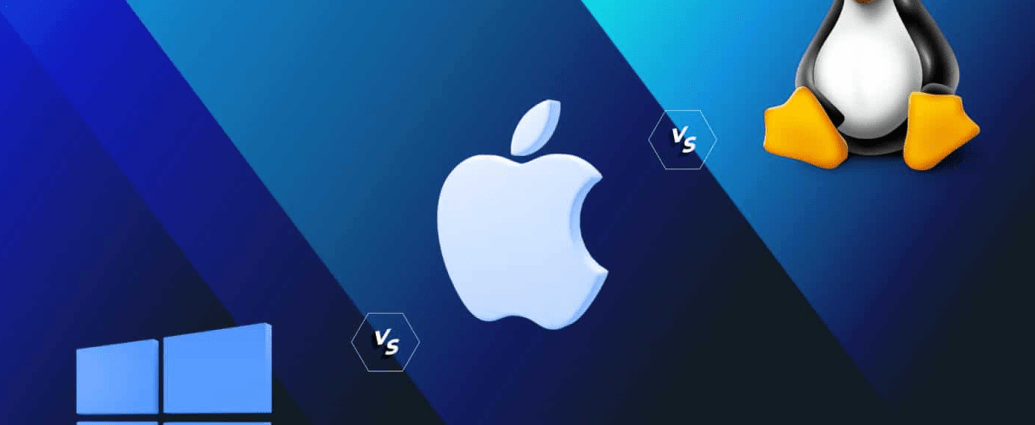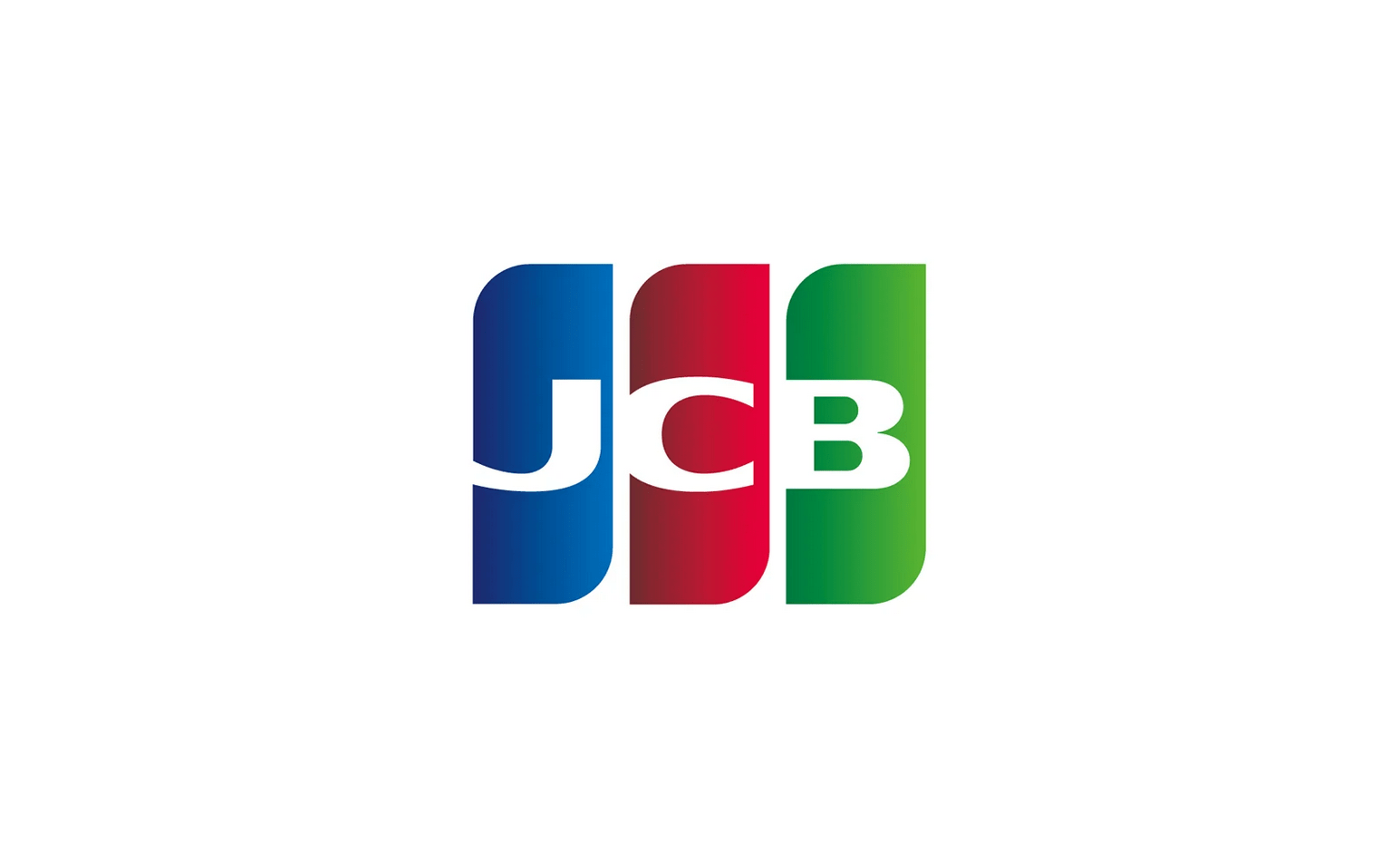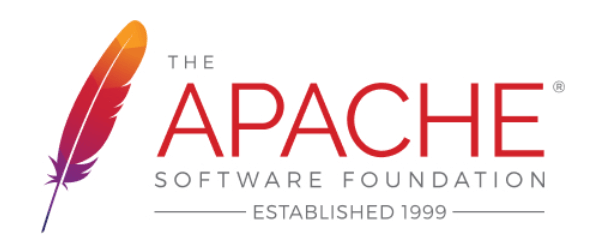Linux can be completed by simply installing free software.
Free Web Server
How to start a free web server.
Enterprise Open Source and Linux | Ubuntu
Ubuntu is the modern, open source operating system on Linux for the enterprise server, desktop, cloud, and IoT.

Gaming Computer Parts
Online shopping for Computers & Peripherals from a great selection of Memory, CPUs, Internal Hard Drives, Internal SSDs, PC Cases, Barebone PCs and more at everyday low prices.
The order in which to find and install software on Linux.
1. Desktop computer “Ubuntu Software Center” search installation
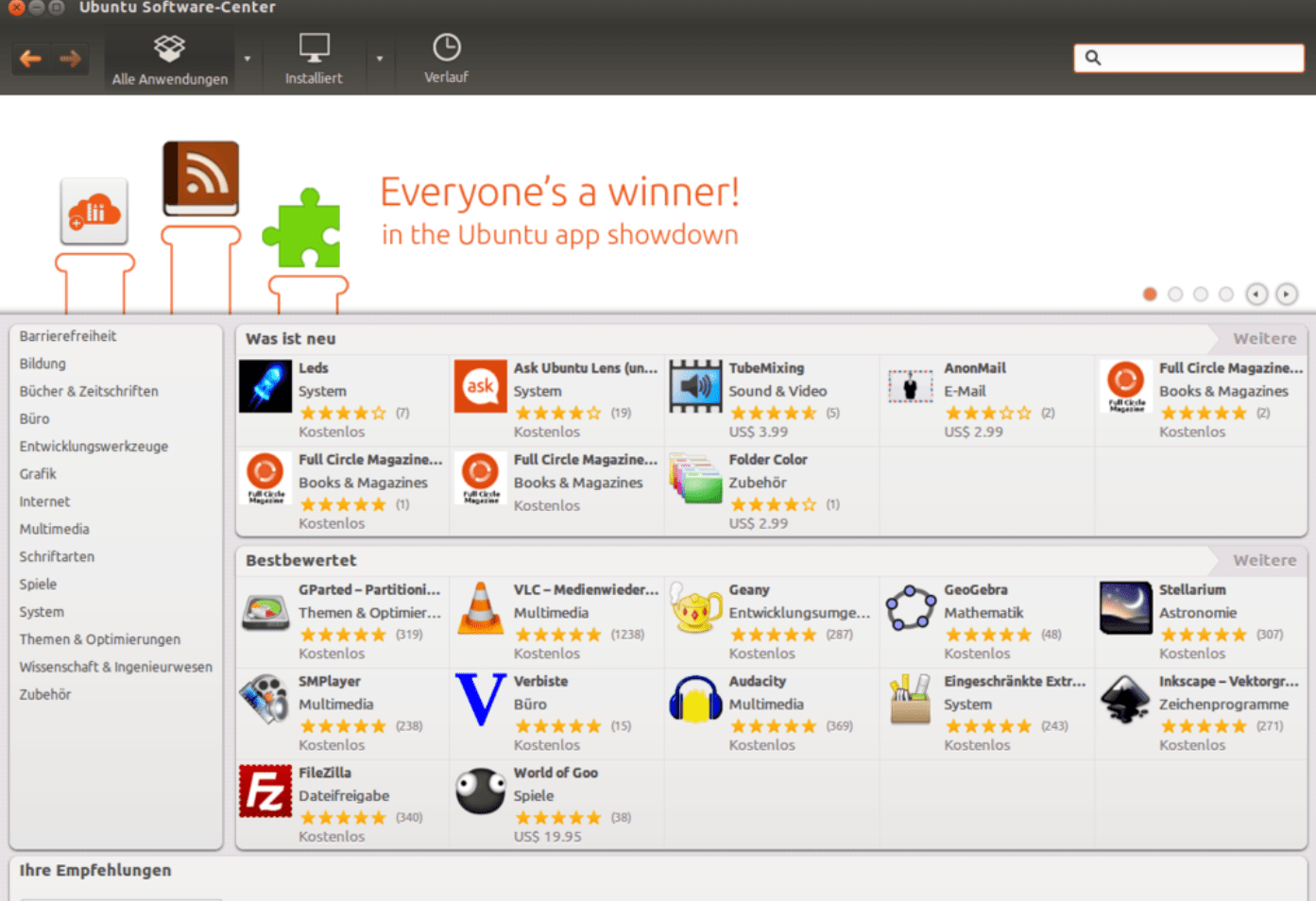
Ubuntu Software Center, or simply Software Center, is a discontinued high-level graphical front end for the APT/dpkg package management system. It is free software written in Python, PyGTK/PyGObject based on GTK.
The program was created for adding and managing repositories, as well as Ubuntu Personal Package Archives (PPA) and on Ubuntu, the Ubuntu Software Center also allowed users to purchase commercial applications.
Development was ended in 2015 and in Ubuntu 16.04 LTS. It was replaced with GNOME Software.
2. Synaptic search installation
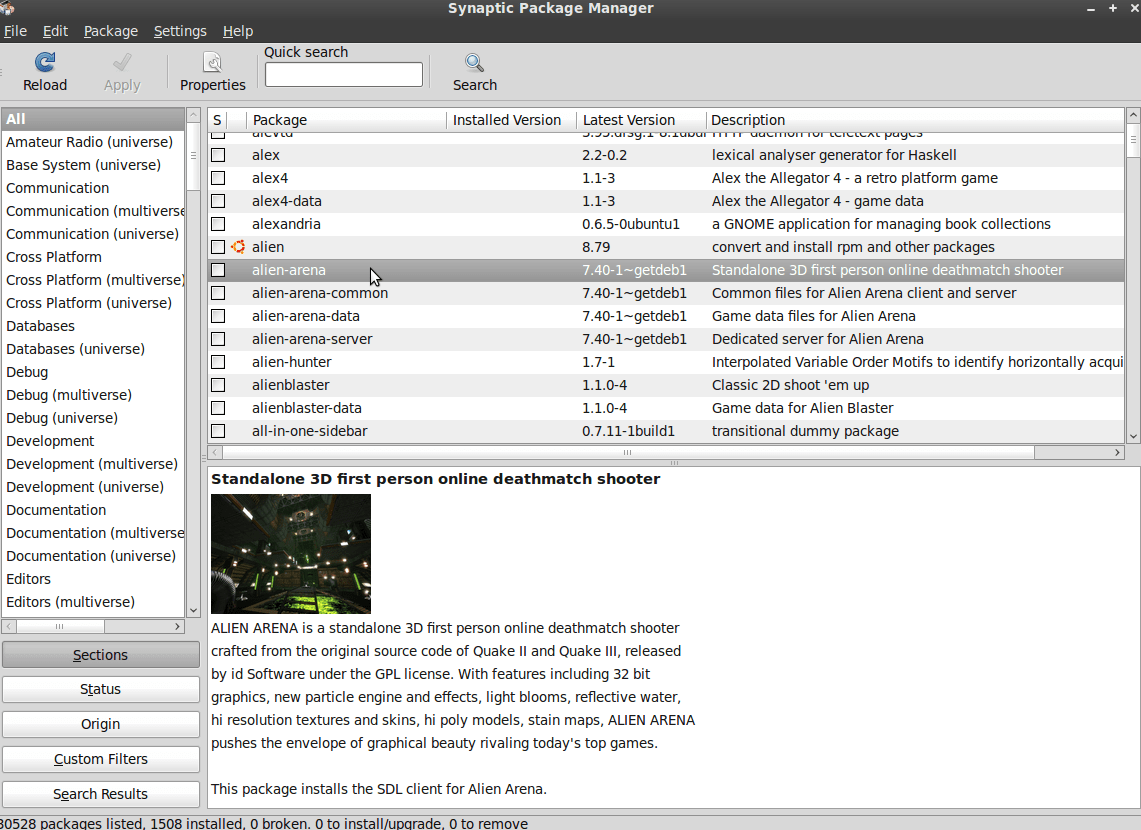
Synaptic is a GTK-based graphical user interface for the APT package manager used by the Debian Linux distribution and its derivatives. Synaptic is usually used on systems based on deb packages but can also be used on systems based on RPM packages. It can be used to install, remove and upgrade software packages and to add repositories.
3. Ubuntu Terminal

Terminal
Working at the command line is not as daunting a task as you would think. There is no special knowledge needed to use the command line as it is a program like everything else. Most things in Linux can be done using the command line. Although there are graphical tools for most programs, sometimes they are just not enough. This is where the command line comes in handy.
The terminal is often called the command prompt or the shell. In days gone by, this was the way the user interacted with the computer; however, Linux users have found that the use of the shell can be quicker than a graphical method and still holds some merit today. Here you will learn how to use the terminal.
The original use of the terminal was as a file browser, and indeed it is still used as a file browser. You can use the terminal as a file browser to navigate your files and undo the changes that have been made.
Starting the Terminal
The Konsole can be started by choosing menu->System->Konsole (Terminal Program) from the Desktop menu system.
Common Commands
View Directories: – ls
The ls (LiSt) lists files in different colors with full formatted text.
$ sudo ls
Create Directories: – mkdir (directory name)
The mkdir (MaKeDIRectory) command will create a directory.
$ sudo mkdir directory name
Change Directories: – cd (/directory/location)
The cd (Change Directory) command will change from your current directory to any directory you specify.
$ sudo cd
$ sudo cd /directory/location
Copy Files/Directories: – cp (file or directory name) (to directory or filename)
The cp (CoPy) command will copy any files you specify. The cp -r command will copy any directories you specify.
cp folder
$ sudo cp -r /download/wordpress/ /media/user/sdb/
cp file
$ sudo cp /download/wordpress/index.html /media/user/sdb/
Copy only the contents of the folder. Remember this command as it will be useful when installing the WordPress application program on a web server.
$ sudo cp -a /download/wordpress/. /var/www/html
Free Web Server
How to start a free web server.
Remove Files/Directories: – rm (file or directory name)
The rm (ReMove) command will delete any filename you specify. The rm -r command will remove any directory you specify, and all its contents.
rm folder
$ sudo rm -r /download/wordpress/
Move/Rename Files/Directories: – mv (file or directory name)
The mv (MoVe) command will move/rename any file or directory you specify.
rm file
$ sudo rm /download/wordpress/index.html
Find Files/Directories: – locate (file or directory name)
$ sudo locate file
$ sudo locate directory name
The locate command will search for any filename you specify. It uses an index of the files on your system to work quickly. To update this index, run the command sudo updatedb. This command is run automatically each day if you leave your computer on. It needs to be run with administrative privileges “Root And Sudo”.
Command input example
$ sudo apt update
$ sudo apt upgrade
$ sudo apt install gufw
$ sudo apt remove gufw
$ sudo apt autoremove
$ sudo nano
$ sudo Command
[sudo] User password:
“sudo”?
sudo is a program for Unix-like computer operating systems that enables users to run programs with the security privileges of another user, by default the superuser. It originally stood for “superuser do”, as that was all it did, and it is its most common however, the official Sudo project page lists it as “su ‘do’ ”. The current Linux manual pages for su define it as “substitute user”, making the correct meaning of sudo “substitute user, do”, because sudo can run a command as other users as well.
Unlike the similar command su, users must, by default, supply their own password for authentication, rather than the password of the target user. After authentication, and if the configuration file (typically /etc/sudoers) permits the user access, the system invokes the requested command. The configuration file offers detailed access permissions, including enabling commands only from the invoking terminal; requiring a password per user or group; requiring re-entry of a password every time or never requiring a password at all for a particular command line. It can also be configured to permit passing arguments or multiple commands.
Simply put, a computer user.
“sudo”
$ sudo Command
[sudo] User password:
$ sudo Command
To make it easy for beginners to understand and to prevent malfunctions, they are separated in stages. Difference between graphical interface “GUI” and “CUI” command line interface.
The “Microsoft” and “Macintosh” graphical interfaces appeared in the “Linux” command line era and fascinated users all over the world.
In “Linux“, access rights can be determined for each file, making it difficult to easily hack from outside.
On the other hand, “Microsoft” and “Macintosh” have executable file names such as “.exe” “.app” that are easy to guess from external networks. Having a large number of active users makes it easy to create hacking tools.
The reason why “Linux” is called strong in security.
“su”
user@computername:~$ sudo su
[sudo] User password:
When you become a super user “su”, you no longer need “$ sudo”.
root@computername:/home/user#
Command
“su”?
Simply put, a computer administrator.
Also called a “super user” who can customize even system files.
For Example………………………..
Maniac heavy user who likes to customize the “OS”
“Once you learn the code for application programs, you will want to develop them.”
“I like that system engineer challenger spirit.”
You think the command line is a “Magic Trick“. It may seem difficult, but I don’t usually use it on “Linux” desktop “computer“s. It is only used when customizing system-related files. I’m waiting for you in the world of programming.
Since 1997 Sexy Spider. I’ve created and destroyed countless websites, and I enjoy spending more time imagining and thinking about them than the finished website.
1997?
In 1997, the world, cities, and the Internet were opened. Keywords such as “world” “wide” “web” “internet” and “site” that are commonplace in modern times were born.
The origin of the modern word “WWW”.
Dangerous world that should have been broken, but repeating itself from the depths of hell.
“Wangan Midnight Devil Z”

“Nissan Fairlady Z”
The ultimate car design “Z” “Sexy Spider” The first car I bought.
Flowing and streamlined. A naughty body reminiscent of a woman.
Nissan Fairlady Z (S30)
The Nissan S30, sold in Japan as the Nissan Fairlady Z and in other markets as the Datsun 240Z, then later as the 260Z and 280Z, is a grand tourer produced by Nissan (Datsun in USA) from 1969 until 1978. The S30 was conceived of by Yutaka Katayama, the President of Nissan Motor Corporation U.S.A., and designed by a team led by Yoshihiko Matsuo, the head of Nissan’s Sports Car Styling Studio. It is the first car in Nissan’s Z series of sports cars.
Aiming to compete directly with established European sports cars, Datsun priced the new 240Z within $200 of the British MGB-GT in the United States, a five-year-old design that showed its age. The 240Z’s styling, engineering, relatively low price, and impressive performance resonated with the public, received a positive response from both buyers and the motoring press, and immediately generated long waiting lists.
As a halo car, the 240Z broadened the acceptance of Japanese car-makers beyond their economic image. Datsun’s growing dealer network—compared to limited production imported sports cars manufactured by Jaguar, BMW, Porsche, Alfa Romeo, and Fiat—ensured both easy purchase and ready maintenance.
All variants of the S30 have four-wheel independent suspension consisting of MacPherson struts in the front (borrowed from the Nissan Laurel C30) and Chapman struts in the back. Front disc brakes and rear drums were standard.
The 240Z used twin SU-style Hitachi one-barrel side-draft carburettors. These were replaced on the 260Z with Hitachi one-barrel side-draft carburettors beginning with model year 1973 to comply with emissions regulations, resulting in diminished overall performance. A Bosch-designed L-Jetronic electronic fuel injection was added to US market 280Zs in 1975 to compensate.
Continuing through the 1975–1978 model years, markets outside of the United States (and Japan, which only offered the 2-liter engine from 1974) still received the 260Z coupé and 2+2. The S30 240Z is unrelated to the later 240SX, which is sold as the Silvia in Japan.

The Fairlady Z was introduced in late 1969 as a 1970 model, with the L20 2.0-liter straight-six SOHC engine, rear-wheel drive, and a stylish coupe body. In Japanese specs the engine, based on the Datsun 510’s four-cylinder, produced 130 PS (96 kW; 128 hp) JIS and came with a four- or a five-speed manual transmission. For 1973, power of the carburetted engine dropped to 125 PS (92 kW; 123 hp) to meet stricter regulations. In Japan, the Fairlady was exclusive to Nissan Japanese dealerships called Nissan Bluebird Stores. Japanese buyers could also get the L24-engined Fairlady 240Z model (HS30), although the larger engine placed it in a considerably higher tax category. The Japanese-spec 2.4-liter engine produces a claimed 150 PS (110 kW; 148 hp) JIS at 5,600 rpm but was discontinued in 1973 as sales had dropped considerably as a result of the fuel crisis, and so until the August 1978 introduction of the Fairlady 280Z only two-liter Fairladys were available.
Custom Base Car
Nissan
Wheelbase
・ 2,305 mm (90.7 in) (2-seater)
・ 2,605 mm (102.6 in) (2+2)
Length
・ 4,115 mm (162.0 in)
・ 4,305 mm (169.5 in) (240ZG)
・ 4,425 mm (174.2 in) (2+2)
Width
・ 1,630 mm (64.2 in)
・ 1,690 mm (66.5 in) (240ZG)
・ 1,650 mm (65.0 in) (2+2)
Height/ 1,285–1,305 mm (50.6–51.4 in)
Curb weight/ 975–1,205 kg (2,150–2,657 lb)
I miss the days when I was happy when I forced a 3-liter inline 6-cylinder engine into this useless car and added a TD07 twin turbo to produce 350 HP.
Before installing application programs on your “Linux” desktop computer, please memorize the basic commands. I like this maniac work without “Microsoft” and “Macintosh”.
Simply put, a computer user.
“sudo”
$ sudo Command
[sudo] User password:
$ sudo apt update
$ sudo apt upgrade
$ sudo apt install gufw
$ sudo apt remove gufw
$ sudo apt autoremove
$ sudo nano
$ sudo Command
Administrative privileges “Root And Sudo”.
Once you have administrator privileges, you will be able to customize system files, but you will need to be more careful.
user@computername:~$ sudo su
[sudo] User password:
root@computername:/home/user#
apt update
apt upgrade
apt install gufw
apt remove gufw
apt autoremove
Command
Command to maintain, the hard disk after changing system files.
$ sudo apt update
$ sudo apt upgrade
$ sudo apt autoremove
Sexy Spider knows the era “1997”
Users who Sexy Spider knows the era “1997” are not familiar with Linux. This is how to install an application software program.
1. Desktop computer “Ubuntu Software Center” search installation
2. Synaptic search installation
3. Ubuntu Terminal
Linux Pre-installed software
Firefox

Mozilla Firefox, or simply Firefox, is a free and open-source web browser developed by the Mozilla Foundation and its subsidiary, the Mozilla Corporation. It uses the Gecko rendering engine to display web pages, which implements current and anticipated web standards. Firefox is available for Windows 10 or later versions, macOS, and Linux. Its unofficial ports are available for various Unix and Unix-like operating systems, including FreeBSD, OpenBSD, NetBSD, illumos, and Solaris Unix. It is also available for Android and iOS. However, as with all other iOS web browsers, the iOS version uses the WebKit layout engine instead of Gecko due to platform requirements. An optimized version is also available on the Amazon Fire TV as one of the two main browsers available with Amazon’s Silk Browser.
Firefox is the spiritual successor of Netscape Navigator, as the Mozilla community was created by Netscape in 1998, before its acquisition by AOL. Firefox was created in 2002 under the codename “Phoenix” by members of the Mozilla community who desired a standalone browser rather than the Mozilla Application Suite bundle. During its beta phase, it proved to be popular with its testers and was praised for its speed, security, and add-ons compared to Microsoft’s then-dominant Internet Explorer 6. It was released on November 9, 2004, and challenged Internet Explorer’s dominance with 60 million downloads within nine months. In November 2017, Firefox began incorporating new technology under the code name “Quantum” to promote parallelism and a more intuitive user interface.
Firefox usage share grew to a peak of 32.21% in November 2009, with Firefox 3.5 overtaking Internet Explorer 7, although not all versions of Internet Explorer as a whole; its usage then declined in competition with Google Chrome. As of December 2023, according to StatCounter, it had a 6.7% usage share on traditional PCs (i.e. as a desktop browser), making it the fourth-most popular PC web browser after Google Chrome (62%), Safari (13%), and Microsoft Edge (11%).
Thunderbird

Mozilla Thunderbird is free and open-source email client software which also functions as a full personal information manager with a calendar and contactbook, as well as an RSS feed reader, chat client (IRC/XMPP/Matrix), and news client. Available cross-platform, it is operated by the Mozilla Foundation’s subsidiary MZLA Technologies Corporation. Thunderbird is an independent, community-driven project that is managed and overseen by the Thunderbird Council, which is elected by the Thunderbird Community. The project strategy was originally modeled after that of Mozilla’s Firefox web browser and is an interface built on top of that web browser.
LibreOffice

LibreOffice (/ˈliːbrə/) is a free and open-source office productivity software suite, a project of The Document Foundation (TDF). It was forked in 2010 from OpenOffice.org, an open-sourced version of the earlier StarOffice. The LibreOffice suite consists of programs for word processing, creating and editing spreadsheets, slideshows, diagrams, and drawings, working with databases, and composing mathematical formulae. It is available in 115 languages. TDF does not provide support for LibreOffice, but enterprise-focused editions are available from companies in the ecosystem.
LibreOffice uses the OpenDocument standard as its native file format but supports formats of most other major office suites, including Microsoft Office, through a variety of import and export filters.
LibreOffice is available for a variety of computing platforms, with official support for Microsoft Windows, macOS and Linux and community builds for many other platforms. Ecosystem partner Collabora uses LibreOffice upstream code and provides apps for Android, iOS, iPadOS and ChromeOS. LibreOffice is the default office suite of the most popular Linux distributions.
LibreOffice Online is an online office suite that includes the applications Writer, Calc, and Impress and provides an upstream for projects such as commercial Collabora Online.
It is the most actively developed free and open-source office suite, with approximately 50 times the development activity of Apache OpenOffice, the other major descendant of OpenOffice.org, in 2015.
The project was announced, and a beta was released on September 28, 2010. In the nine months between January 2011 (the first stable release) and October 2011, LibreOffice was downloaded about 7.5 million times. In 2015, the project claimed 120 million unique downloading addresses from May 2011 to May 2015, excluding Linux distributions, with 55 million of those being from May 2014 to May 2015. The Document Foundation estimates that there are 200 million active LibreOffice users worldwide. Approximately 25% are students and 10% are Linux users; the latter usually find LibreOffice part of their preferred distribution.
・ TradingView
Experience extra power, extra speed and extra flexibility, all with the same UX you know and love.
We’re TradingView, a charting platform and social network used by 50M+ traders and investors worldwide to spot opportunities across global markets.
1. Desktop computer “Ubuntu Software Center” search installation
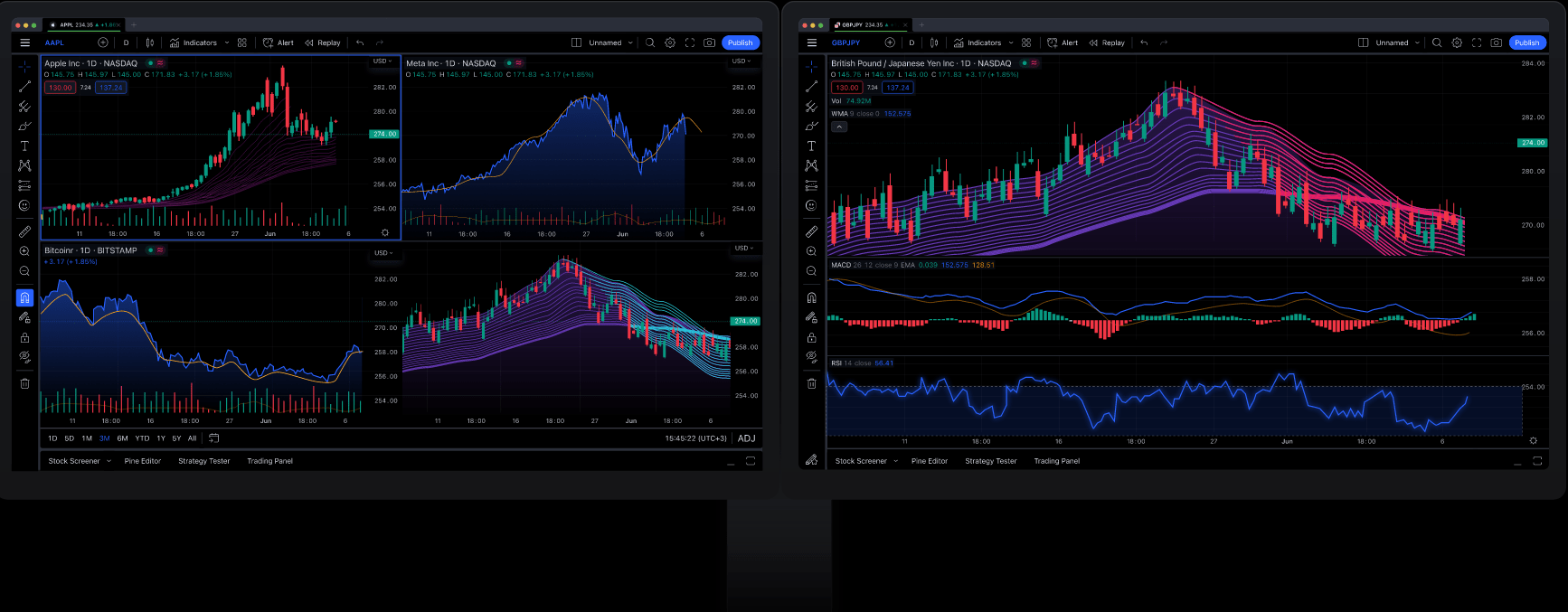
Multiple monitors are important to traders. TradingView Desktop allows you to set up and restore your multi-monitor workspace without any of the limitations browsers traditionally face.
Linux Text Editor
Gedit is a text editor for the GNOME desktop environment.
Gedit’s primary goal is to have a simple and easy to use default interface. You can take advantage of more advanced features by enabling plugins.
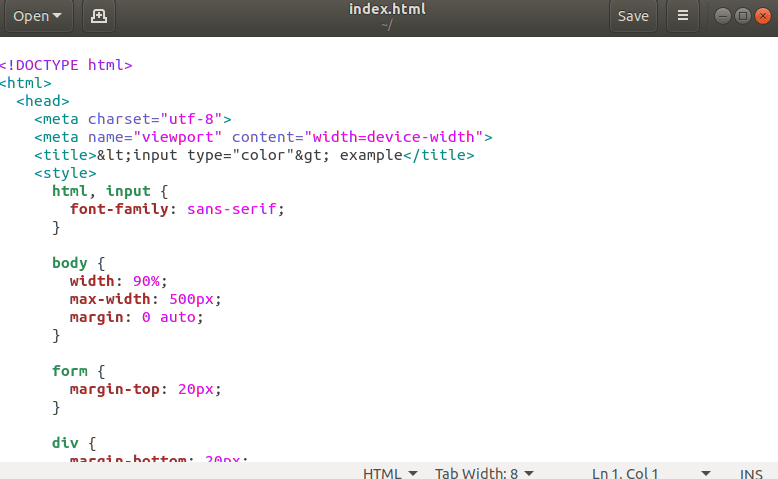
Document Viewer
Document viewer for the GNOME desktop. You can view documents in a variety of formats, search within documents, and annotate documents.
Evince supports the following documents: PDF, PS, EPS, XPS, DjVu, TIFF, DVI (powered by SyncTeX), Comic Books archives (CBR, CBT, CBZ, CB7).
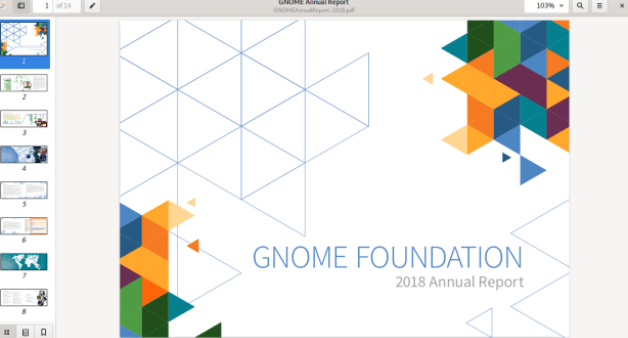
・ Calibre
One-stop solution for your e-book needs.
1. Desktop computer “Ubuntu Software Center” search installation

Calibre helps you catalog your books, automatically retrieve their bibliographic information, convert them between various e-book formats, send them to your e-reader device, display them on your computer, edit them with a sophisticated e-book editor, and more. You can publish books on the network using a content server. You can also regularly download news in e-book format from various news sites, magazine sites, etc.
・ Foliate
Read e-books in style
Discover a new chapter in reading with Foliate, the modern e-book reader tailored for GNOME. Immerse yourself in a distraction-free interface, with customization features designed to match your unique preferences.
1. Desktop computer “Ubuntu Software Center” search installation
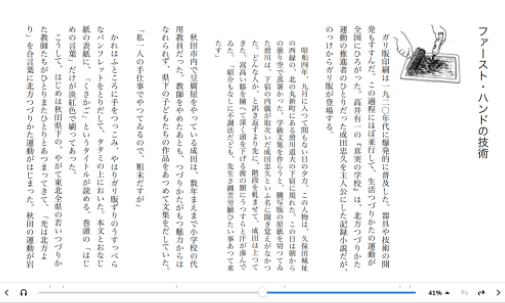
Features include:
• Open EPUB, Mobipocket, Kindle, FB2, CBZ, and PDF files
• Paginated mode and scrolled mode
• Customize font and line-spacing
• Light, sepia, dark, and invert mode
• Reading progress slider with chapter marks
• Bookmarks and annotations
• Find in book
• Quick dictionary lookup
・ Books
GNOME e-book management application
1. Desktop computer “Ubuntu Software Center” search installation
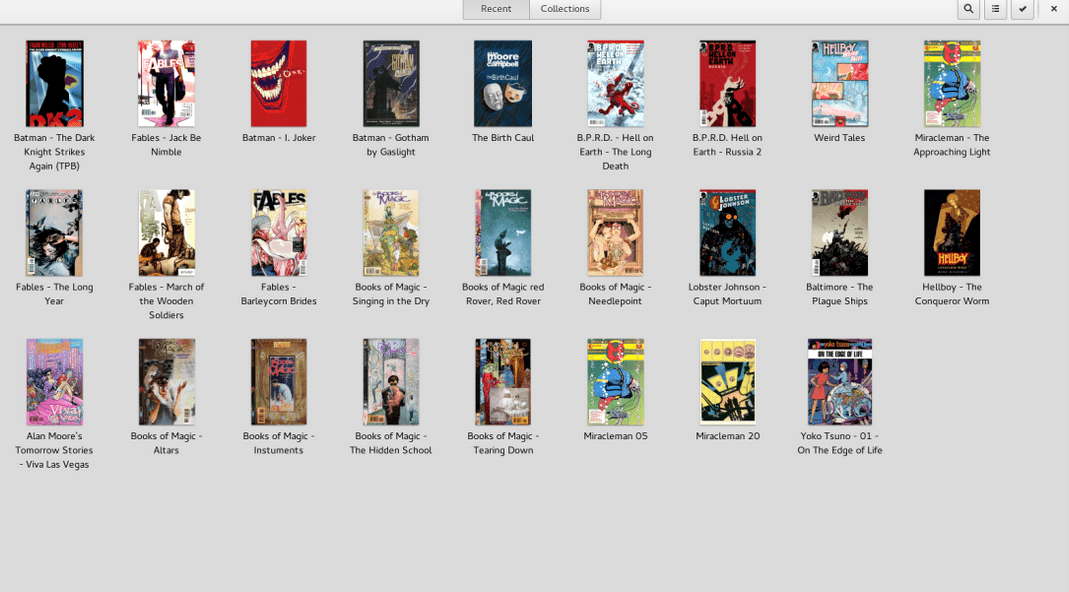
Books is a simple application to access and organize your e-books on GNOME. It is meant to be a simple and elegant replacement for using a file manager to deal with e-books. It’s included in the default set of core applications since GNOME 3.16.
Live Chat/Spy Camera/SNS
Social networking service.
social networking service or SNS (sometimes called a social networking site) is a type of online social media platform which people use to build social networks or social relationships with other people who share similar personal or career content, interests, activities, backgrounds or real-life connections.
Social networking services vary in format and the number of features. They can incorporate a range of new information and communication tools, operating on desktops and on laptops, on mobile devices such as tablet computers and smartphones. This may feature digital photo/video/sharing and diary entries online (blogging). Online community services are sometimes considered social-network services by developers and users, though in a broader sense, a social-network service usually provides an individual-centered service whereas online community services are groups centered. Generally defined as “websites that facilitate the building of a network of contacts in order to exchange various types of content online,” social networking sites provide a space for interaction to continue beyond in-person interactions. These computer mediated interactions link members of various networks and may help to create, sustain and develop new social and professional relationships.
Social networking sites allow users to share ideas, digital photos and videos, posts, and to inform others about online or real-world activities and events with people within their social network. While in-person social networking – such as gathering in a village market to talk about events – has existed since the earliest development of towns, the web enables people to connect with others who live in different locations across the globe (dependent on access to an Internet connection to do so). Depending on the platform, members may be able to contact any other member. In other cases, members can contact anyone they have a connection to, and subsequently anyone that contact has a connection to, and so on. The success of social networking services can be seen in their dominance in society today, with X (formerly Twitter) being referred to as “world town square that offers its users a real-time activity, like contacting anyone including friends, sharing images, videos and texts in form of “tweets”. Facebook having a massive 2.13 billion active monthly users and an average of 1.4 billion daily active users in 2017. LinkedIn, a career-oriented social-networking service, generally requires that a member personally know another member in real life before they contact them online. Some services require members to have a preexisting connection to contact other members. With COVID-19, Zoom, a videoconferencing platform, has taken an integral place to connect people located around the world and facilitate many online environments such as school, university, work and government meetings.
The main types of social networking services contain category places (such as age or occupation or religion), means to connect with friends (usually with self-description pages), and a recommendation system linked to trust. One can categorize social-network services into four types:
・ socialization social network services used primarily for socializing with existing friends or users (e.g., Facebook, Instagram, Twitter/X)
・ online social networks are decentralized and distributed computer networks where users communicate with each other through Internet services.
・ networking social network services used primarily for non-social interpersonal communication (e.g., LinkedIn, a career- and employment-oriented site)
・ social navigation social network services used primarily for helping users to find specific information or resources (e.g., Goodreads for books, Reddit)
There have been attempts to standardize these services to avoid the need to duplicate entries of friends and interests (see the FOAF standard). A study reveals that India recorded world’s largest growth in terms of social media users in 2013. A 2013 survey found that 73% of U.S. adults use social-networking sites.
Spy Camera.
hidden camera or spy camera is a camera used to photograph or record subjects, often people, without their knowledge. The camera may be considered “hidden” because it is not visible to the subject being filmed, or is disguised as another object. Hidden cameras are often considered a surveillance tool.
The term “hidden camera” is commonly used when subjects are unaware that they are being recorded, usually lacking their knowledge and consent; the term “spy camera” is generally used when the subject would object to being recorded if they were aware of the camera’s presence. In contrast, the phrase “security camera” refers to cameras that are visible and/or are accompanied by a warning notice of their presence, so the subject is aware of the camera’s presence and knows they are being filmed.
Live Chat.
LiveChat is an online customer service software with online chat, help desk software, and web analytics capabilities.
It was first launched in 2002 and is currently developed and offered in a SaaS (software as a service) business model by LiveChat Software S.A.
Companies use LiveChat as a single point of contact to manage from one software all customer service and online sales activities that normally are provided using channels (chat, email and social media) and multiple tools.
Cheese
Cheese is the former default webcam application for the GNOME desktop, i.e. an application to handle UVC streams over Video4Linux. It was developed as a Google Summer of Code 2007 project by Daniel G. Siegel. It uses GStreamer to apply effects to photos and videos. It can export to Flickr and is integrated into GNOME.
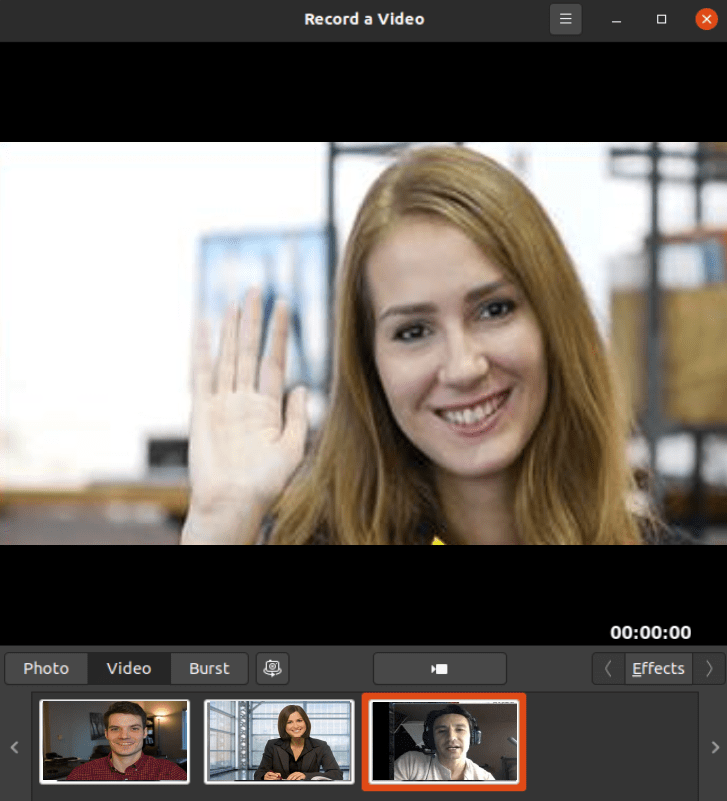
・ Skype
Connect, Create, Talk & Discover, now with Bing GPT-4
1. Desktop computer “Ubuntu Software Center” search installation

Skype keeps the world talking. Say “hello” with an instant message, voice or video call, no matter what device they use Skype on. Chat with the new Bing in Skype, and get AI-powered answers, recommendations, and inspiration. Skype is available on phones, tablets, PCs, Macs and Linux.
• Video calls – Don’t just hear the cheers, see them! Get together with 1 or 49 of your friends and family on a HD video call with HD audio. Watch everyone’s smiles and cries when you tell them “We’re engaged!!!”
• Chat – Reach people instantly. Send audio messages to your friends, grab someone’s attention with @ mentions, or create a group chat to plan a family reunion.
• Bing in Skype – Chat with the new Bing in your individual and group chats to add AI-powered fun in the context of your conversations.
• Share – Send photos and videos with your family and friends. Save shared photos and videos to your camera roll. Share your screen to make travel plans with friends or present designs to your team. Start Skype calls with users not on Skype with Skype links.
• Voice calls – Camera shy? Make voice calls to anyone in the world on Skype. You can also call mobile and landlines at low rates.
• Express yourself – Liven up conversations with emoticons, GIFs, stickers, images from your device or web.
• SMS – Use Skype to send SMS messages to mobiles worldwide.
Skype to Skype calls are free. Operator data charges may apply. We recommend using an unlimited data plan or WiFi connection.
・ ZOOM
ZOOM Cloud Meetings. Video conferencing with real-time messaging and content sharing.
1. Desktop computer “Ubuntu Software Center” search installation
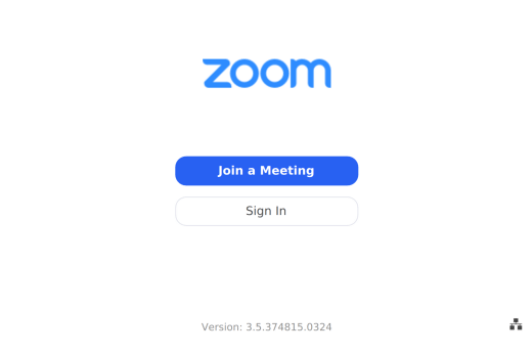
・ Whatsie
Feature rich WhatsApp Client for Linux Desktop.
1. Desktop computer “Ubuntu Software Center” search installation
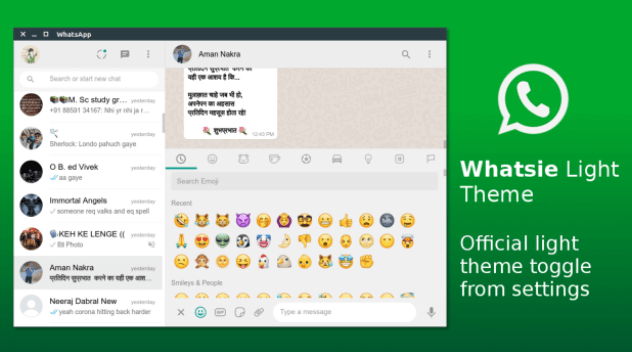
Whatsie is a Lightweight, feature-rich WhatsApp web client written in Qt QWebEngine Library.
Beautiful desktop client for WhatsApp Web available for Linux Desktop. Whatsie uses WhatsApp Web, and it requires having WhatsApp Messenger installed and configured on your mobile device, nowadays Whatsie can be used independently without requiring your Mobile phone to be connected to the Internet. You can opt-in for Whatsapp beta while logging in.
Whatsie is packed with lots of features that are unique in Whatsie most notably the App Lock feature that allows users to set lock Whatsie with a pass-code to avoid access to someone from using your Whatsapp messages while you are away from your laptop or computer.
You can use all the features that WhatsApp web provides, like Sending Voice notes, Sending pictures using your Web Cam, etc.
Features:
• Light and Dark Themes with automatic switching using set Sunshine to Sunset time
• Customised Notifications & Native Notifications support
• Mute Audio, Disable Notifications
• Keyboard Shortcuts
• Quick Theme toggle
• SystemTray Support
• Built-in download manager
• App Lock feature with auto-lock settings
• App permission manager
• Built-in Spell Checker (with support for 31 major languages)
• Fusion, Adwaita, and Windows widget style support with Dark and Light variants
• Full view support, makes the web app container occupy all available space
• Dynamic Zoom feature, lets you increase zoom when you maximize the window
• Full system integration: Support single instance, WhatsApp web URLs, and more
• Other settings that let you control every aspect of Web-app
・ Twist
1. Desktop computer “Ubuntu Software Center” search installation

Team Communication App for Remote Work.
・ TheDesk
Linux version of TweetDeck.
1. Desktop computer “Ubuntu Software Center” search installation
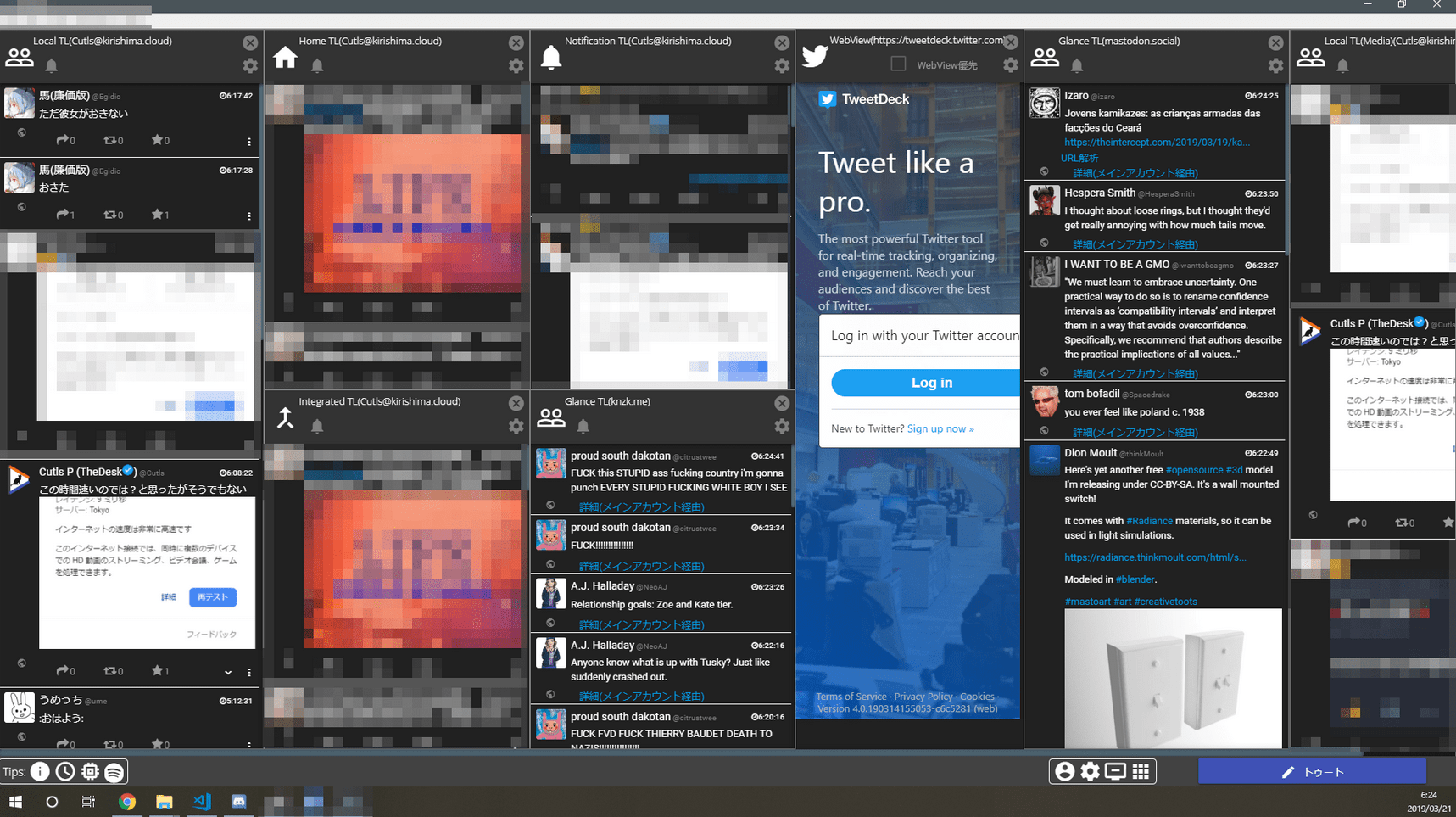
TheDesk is a fully featured desktop Mastodon client. Developed with open source.
・ Telegram
Fast. Secure. Powerful.
1. Desktop computer “Ubuntu Software Center” search installation
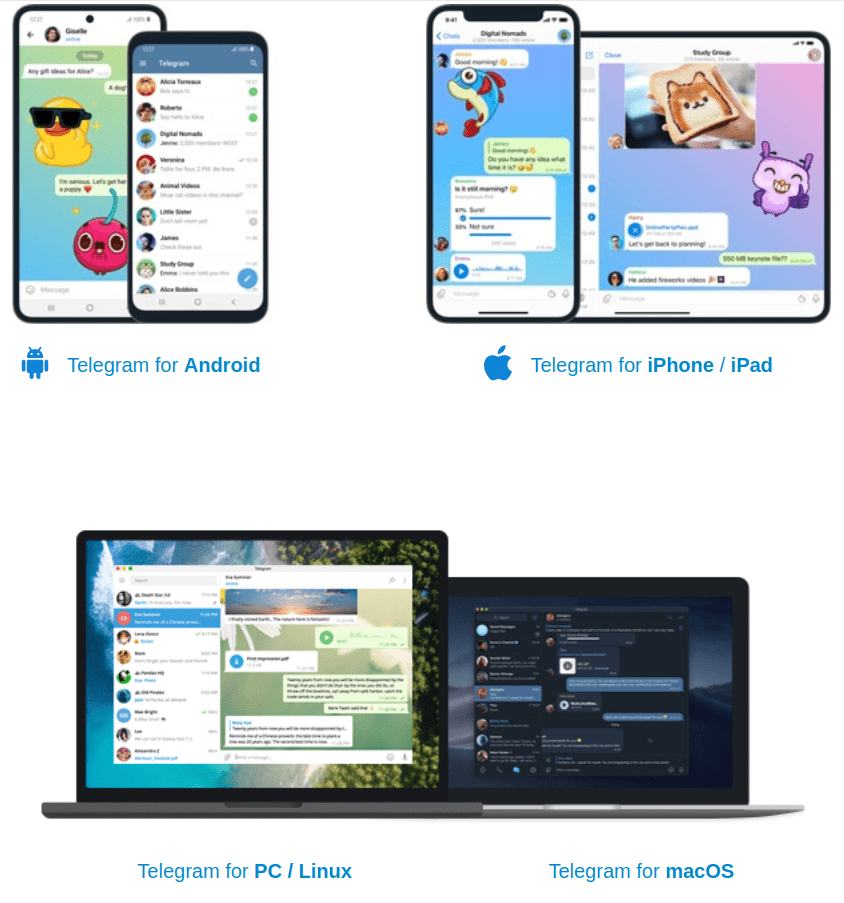
Pure instant messaging — simple, fast, secure, and synced across all your devices. One of the world’s top 10 most downloaded apps with over 500 million active users.
FAST: Telegram is the fastest messaging app on the market, connecting people via a unique, distributed network of data centers around the globe.
SYNCED: You can access your messages from all your phones, tablets and computers at once. Telegram apps are standalone, so you don’t need to keep your phone connected. Start typing on one device and finish the message from another. Never lose your data again.
UNLIMITED: You can send media and files, without any limits on their type and size. Your entire chat history will require no disk space on your device, and will be securely stored in the Telegram cloud for as long as you need it.
SECURE: We made it our mission to provide the best security combined with ease of use. Everything on Telegram, including chats, groups, media, etc. is encrypted using a combination of 256-bit symmetric AES encryption, 2048-bit RSA encryption, and Diffie–Hellman secure key exchange.
100% FREE & OPEN: Telegram has a fully documented and free API for developers, open source apps and verifiable builds to prove the app you download is built from the exact same source code that is published.
POWERFUL: You can create group chats with up to 200,000 members, share large videos, documents of any type (.DOCX, .MP3, .ZIP, etc.) up to 2 GB each, and even set up bots for specific tasks. Telegram is the perfect tool for hosting online communities and coordinating teamwork.
RELIABLE: Built to deliver your messages using as little data as possible, Telegram is the most reliable messaging system ever made. It works even on the weakest mobile connections.
FUN: Telegram has powerful photo and video editing tools, animated stickers and emoji, fully customizable themes to change the appearance of your app, and an open sticker/GIF platform to cater to all your expressive needs.
SIMPLE: While providing an unprecedented array of features, we take great care to keep the interface clean. Telegram is so simple you already know how to use it.
PRIVATE: We take your privacy seriously and will never give any third parties access to your data. You can delete any message you ever sent or received for both sides, at any time and without a trace. Telegram will never use your data to show you ads.
We keep expanding the boundaries of what you can do with a messaging app. Don’t wait years for older messengers to catch up with Telegram — join the revolution today.
Video
Video is the official video player for the GNOME desktop environment. In addition to listing and searching locally stored videos and DVDs, you can also play videos on your local network (using UPnP/DLNA). You can also enjoy video highlights from various websites.
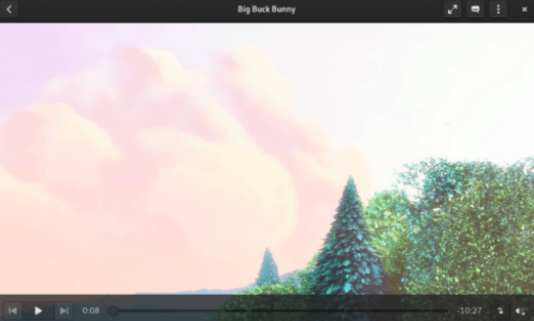
・ CCTV Viewer
Viewer and mounter video streams.
1. Desktop computer “Ubuntu Software Center” search installation
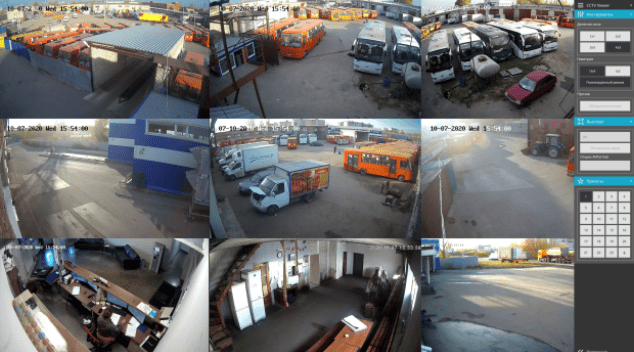
CCTV Viewer – a simple application for simultaneously viewing multiple video streams. Designed for high performance and low latency. Based on ffmpeg.
・ Diet Clock
Real-time calorie counter that simulates the human metabolism.
1. Desktop computer “Ubuntu Software Center” search installation
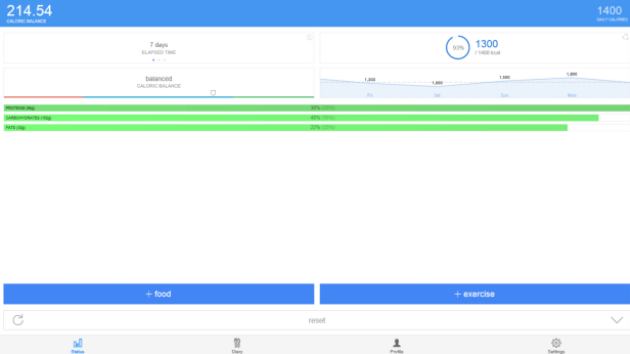
:: REAL TIME CALORIE COUNTING Diet Clock is a new way for you to control your calorie intake. It displays your calorie usage in real time, and at a glance Diet Clock will show you how much to eat every day.
Diet Clock is very easy to understand – It works like a calorie chronometer.
• Calories from food will be added to the total.
• Calories burned (including your exercise) will be subtracted from the total.
So all you have to do is keep the counter as close to zero as possible – by logging what you eat.
Just set your daily calorie intake, hit start, and you’re good to go!
Losing weight has never been easier!
:: DATA SYNCHRONIZATION FOR MULTIPLE DEVICES Diet Clock also features automatic backup, and data synchronization.
Easily synchronize your data between multiple devices, and keep logging on the go!
Whenever you add something to your diary, or update your profile, that information will be instantaneously synchronized across all your devices.
To use data synchronization, simply log into your account using another device, and the app will download all data and synchronize everything exactly as the first device – and then from one device to another in real time!
The synchronization service is free, fast, and requires no configuration.
Diet Clock is available on 10 different platforms, so no matter which device you use, you will be able log all your information from your favorite device.
And to get a feel for how Diet Clock works, go to dietclock.net and you can get started right away. Then later on, you can send the data back to your mobile device.
:: MAIN FEATURES • Real time calorie counting • Translated into 26 languages • Available in 10 different platforms • Simple, clean and intuitive interface • Automatic backup and data synchronization • Realistic estimation of weight loss • Shows how fast your body burns calories • Complete nutrition information (fiber, sugar, sodium) • Adjustable macronutrient ratio (proteins, carbohydrates, fats) • Advanced search engine • Statistics on calorie consumption • Large food database • Foods divided into navigable categories • Add your own foods and exercises • Bookmark your favorite items • Fully editable entries • Automatic updates • Today’s overview • Adjustable calorie threshold • Cyclic mode
:: QUICK OVERVIEW
1 – Diet Clock is designed to help you control your calorie intake. Whether you want to maintain, lose, or gain weight, this application will help you focus on what’s important: your caloric balance.
2 – The idea is simple. Define a goal (daily calories) and keep yourself Balanced in the context of this goal. The app will indicate when you’ve eaten too much (surplus), or too little (deficit)
3 – Calories from food will be added to the total. Calories burned (including exercise) will be subtracted from the total.
4 – Elapsed time is converted into calories burned. Therefore, your caloric balance will be reduced automatically throughout the day. This simulates your metabolic rate.
5 – If you overeat, you can compensate by doing exercises or eating less over the next few hours.
6 – Check your Profile to determine your ideal calorie intake.
・ Coronabar
Get information about current cases of coronavirus right from the menu bar.
1. Desktop computer “Ubuntu Software Center” search installation
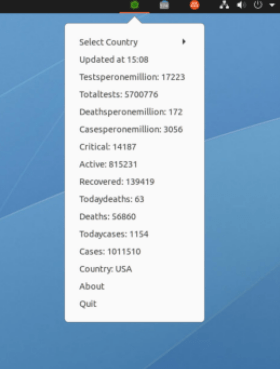
WARNING! The API supporting this App no longer works. This repository has been archived. If you like this project, go ahead and submit a PR. Would welcome more maintainers!
Get information about current cases of coronavirus right from the menu bar. Just in case you want to add stress to your life.
・ HEK smarthealth
elektronische Patientenakte (ePA)
1. Desktop computer “Ubuntu Software Center” search installation
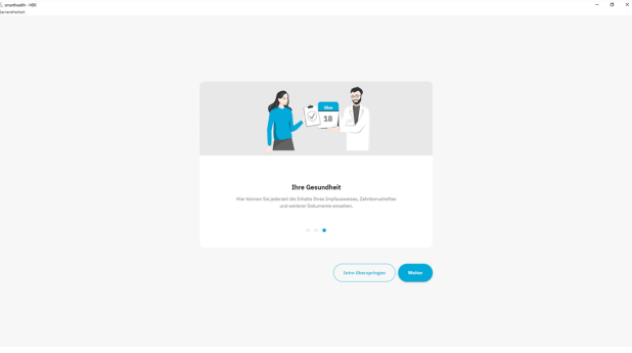
Ihre Hanseatische Krankenkasse mit erstklassigen Leistungen und einfachen Serviceleistungen!
・ Weasis
free/libre/open medical DICOM viewer
1. Desktop computer “Ubuntu Software Center” search installation
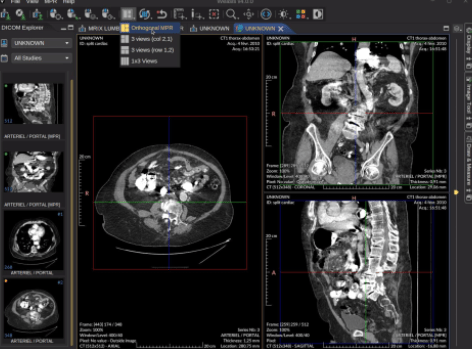
Weasis is a multipurpose standalone and web-based DICOM viewer with a highly modular architecture. It is a very popular clinical viewer used in healthcare by hospitals, health networks, multicenter research trials, and patients.
• Flexible integration to PACS, VNA, RIS, HIS or PHR
• Responsive user interface and work well on high DPI screens
• Web access through weasis protocol
• Multi-language support
• Configuration of preferences on server-side and client-side
• API for building custom plug-ins
• DICOM Send (storeSCU and STOW-RS)
• DICOM Query/Retrieve (C-GET, C-MOVE and WADO-URI) and DICOMWeb (QUERY and RETRIEVE)
• Dicomizer module (allow importing standard images and convert them in DICOM)
・ Recipes
GNOME loves to cook
1. Desktop computer “Ubuntu Software Center” search installation
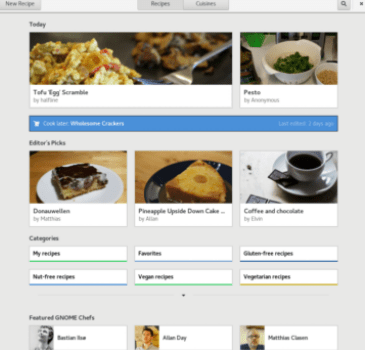
Recipes is an easy-to-use application that will help you to discover what to cook today, tomorrow, the rest of the week and for your special occasions.
Recipes comes with a collection of recipes that have been collected by GNOME contributors from all over the world. It also lets you store your own recipes and share them with your friends.
The major features of Recipes include:
• Add and edit your own recipes
• Share recipes with your friends
• Export and print shopping lists
• Adjust quantities based on the number of servings
• Mark recipes to cook later or add them to your favorites
• Add notes to recipes
• Hands-free cooking instruction mode
 |
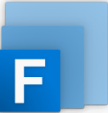 |
 |
RSS feed reader?
“Website viewing application programs” were popular in the 1900s. In the 2000s, “SNS” became mainstream, and “RSS” and “FEED” and ”Atom” disappeared from almost all “WWW” and “World Wide Website Network” and “Web browsers”, “Internet“.
For the first time, I called the “website” HyperText Markup Language, a technology mainly written in “HTML”. Established “Website” and “Web Server” in 1997. They were playing with programs written in the “CGI” language, such as the “counter” that displays the number of visitors, and the communication programs “BBS” and “chat”.
In the 2000s, “BLOG” written in the “PHP” language became mainstream, and “RSS” and “FEED” and “Atom” and “Ping” programs were born. Sexy Spider Web site is created using WordPress.
As of 2024, “Youtube” is a program that combines “SNS” Social Networking Service and streaming technology that can be used even if you do not have your own website or domain. Subdomain types, external networks, and third-party programs have become mainstream.
I see “idiots” who mistakenly think that they have become “influencers” or “popular people” on the “Youtube” “SNS” domain. Subdomains of “account name@Youtube.com” and “account name@SNS.com”.
“Youtube” is an application program provided by “Google” that distributes “Video” and “Music”, but it is a common story that the web service is suddenly terminated because it is no longer profitable.
Unless a web service is provided by you and is located under “account name@yourdomain.com” under your domain, it will never be yours.
trend “Chat GDP”
We trained a model called ChatGPT that interacts conversationally. The conversational format allows ChatGPT to answer follow-up questions, admit mistakes, challenge incorrect assumptions, and deny inappropriate requests. Openai development.
If you are using “WordPress” as your platform, these “application program” functions can be completed with “plugins.”
No matter how good an application program is, it is meaningless if there is no place to install it. “Domain” and “web server” required. A “website” becomes a space that can be distributed to users around the world.
Free Web Server
How to start a free web server.

WordPress
Open source software which you can use to easily create a beautiful website, blog, or app.

On Ubuntu, you can view using the following “application program” or by installing the “RSS feed reader” search “plug-in” for the default browser “Firefox”.
・ Feed reader
RSS client for various webservices.

Rss Feed: https://sexyspider.xyz/feed/
1. Desktop computer “Ubuntu Software Center” search installation

FeedReader is a program designed to complement an already existing web-based RSS reader account.
Currently supported services:
• Feedbin
• Feedly
• FreshRSS
• InoReader
• Local RSS
• Nextcloud/ownCloud
• The Old Reader
• Tiny Tiny RSS
It combines all the advantages of web based services like syncing across all your devices with everything you expect from a modern desktop program: Desktop notifications, fast search and filtering, tagging, sharing to “read-it-later” services like Pocket and Instapaper, handy keyboard shortcuts and a database that keeps all your old articles as long as you like.
FeedReader also allows you to save articles to read-it-later with the supported services for now:
• Instapaper
• Pocket
• Wallabag
It also let you share any article with your friends using:
• Email
• Twitter
• Telegram
・ Fluent Reader
Modern desktop RSS reader built with Electron, React, and Fluent UI.

Rss Feed: https://sexyspider.xyz/feed/
1. Desktop computer “Ubuntu Software Center” search installation
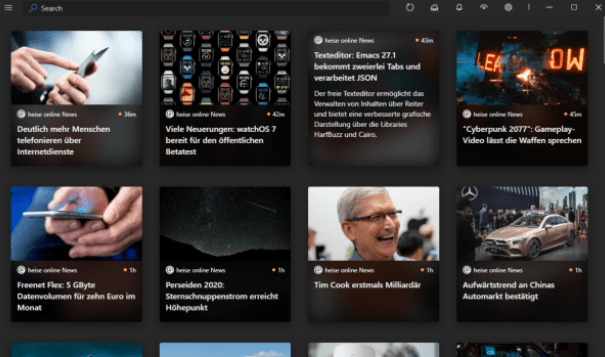
This is an unofficial snap package of Fluent Reader. The official one, just have a AppImage for Linux. Upgrades coming instantly.
Features
• A modern UI inspired by Fluent Design System with full dark mode support.
• Read locally or sync with self-hosted services through Fever API.
• Importing or exporting OPML files, full application data backup & restoration.
• Read the full content with the built-in article view or load webpages by default.
• Search for articles with regular expressions or filter by read status.
• Organize your subscriptions with folder-like groupings.
• Single-key keyboard shortcuts.
• Hide, mark as read, or star articles automatically as they arrive with regular expression rules.
• Fetch articles in the background and send push notifications.
・ Feeds
News reader for GNOME.

Rss Feed: https://sexyspider.xyz/feed/
1. Desktop computer “Ubuntu Software Center” search installation

Feeds is a minimal RSS/Atom feed reader built with speed and simplicity in mind.
It offers a simple user interface that only shows the latest news from your subscriptions.
Articles are shown in a web view by default, with javascript disabled for a faster and less intrusive user experience. There’s also a reader mode included, built from the one GNOME Web/Epiphany uses.
Feeds can be imported and exported via OPML.
Shotwell
With Shotwell, you can quickly and easily import, organise, edit and view your pictures. And you can share your favourite snaps on all popular photo sites and social networks.
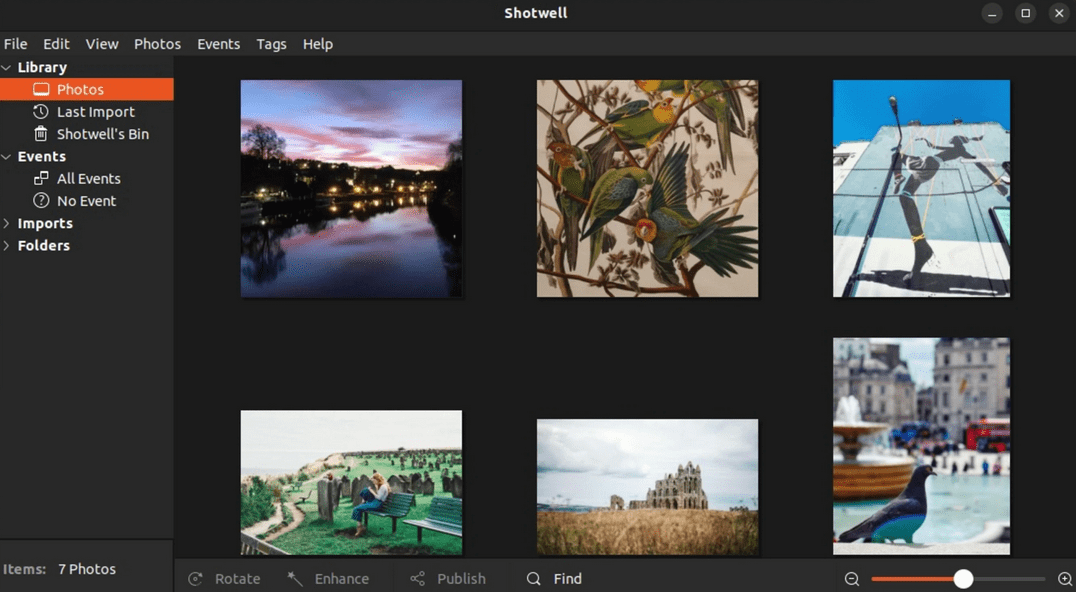
・ Celestia
Free, open source, Real-time 3D visualization of space.
1. Desktop computer “Ubuntu Software Center” search installation
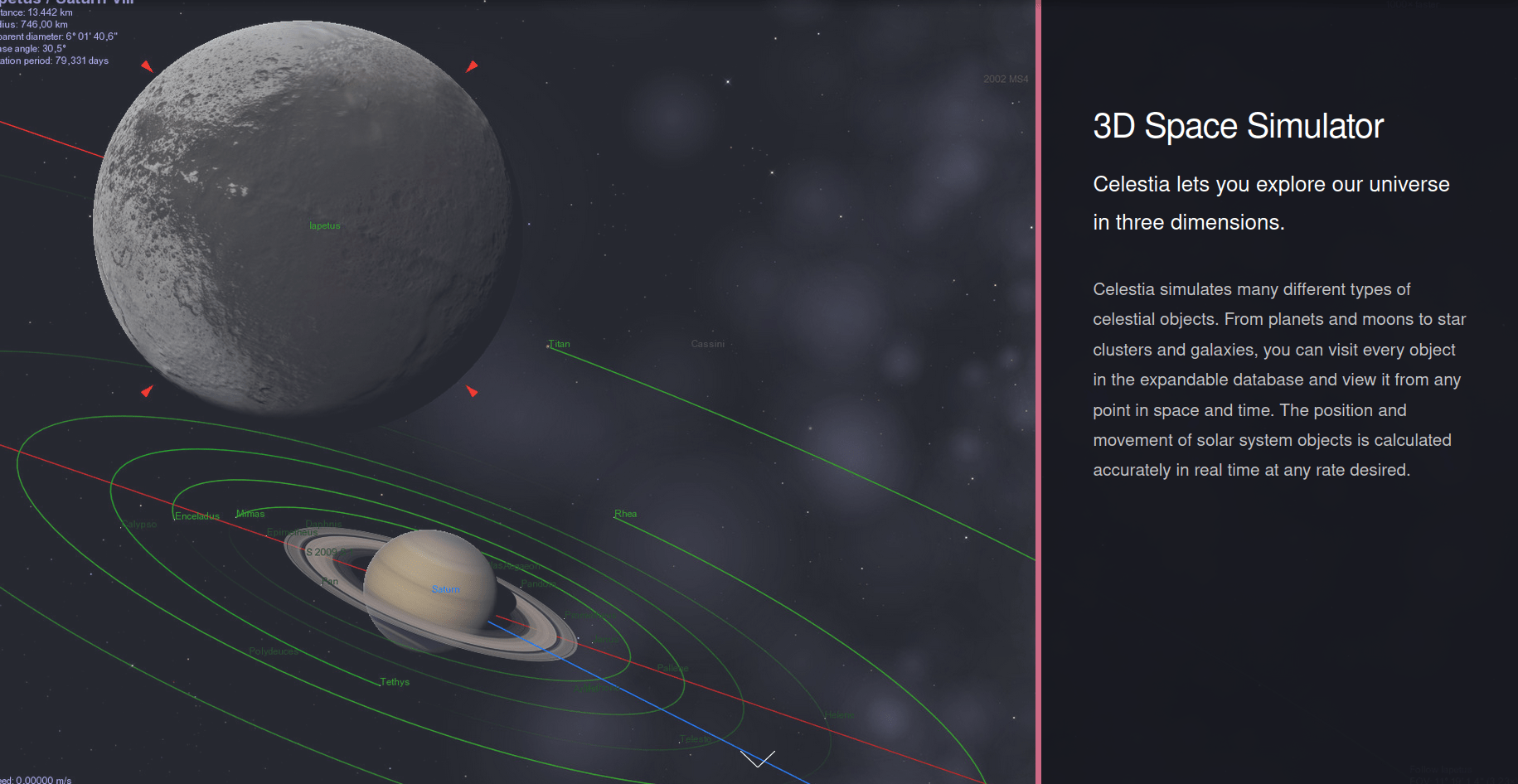
Celestia is a real-time space simulation which lets you experience the universe in three dimensions. Celestia does not confine you to the surface of the Earth, it allows you to travel throughout the solar system, to any of over 100,000 stars, or even beyond the galaxy. Travel in Celestia is seamless; the exponential zoom feature lets you explore space across a huge range of scales, from galaxy clusters down to spacecraft only a few meters across. A ‘point-and-goto’ interface makes it simple to navigate through the universe to the object you want to visit.
Run from terminal : snap run celestia-daily.celestia-qt
To use Add Ons :
• Create .celestia directory inside ~/snap/celestia-daily/current/ and copy celestia.cfg.
• Rename celestia.cfg to .celestia.cfg
• Open .celestia.cfg and find ExtrasDirectories [ “extras-standard” “extras”] and replace it with ExtrasDirectories [ “extras-standard” “extras” “~/.celestia”]
or use the code :
cd ~/snap/celestia-daily/current/
mkdir .celestia
echo “Extras Directories [ “extras-standard” “extras” “~/.celestia”]” > .celestia.cfg
• Paste Add On files inside .celestia directory.
・ Stellarium
Desktop Planetarium.
1. Desktop computer “Ubuntu Software Center” search installation
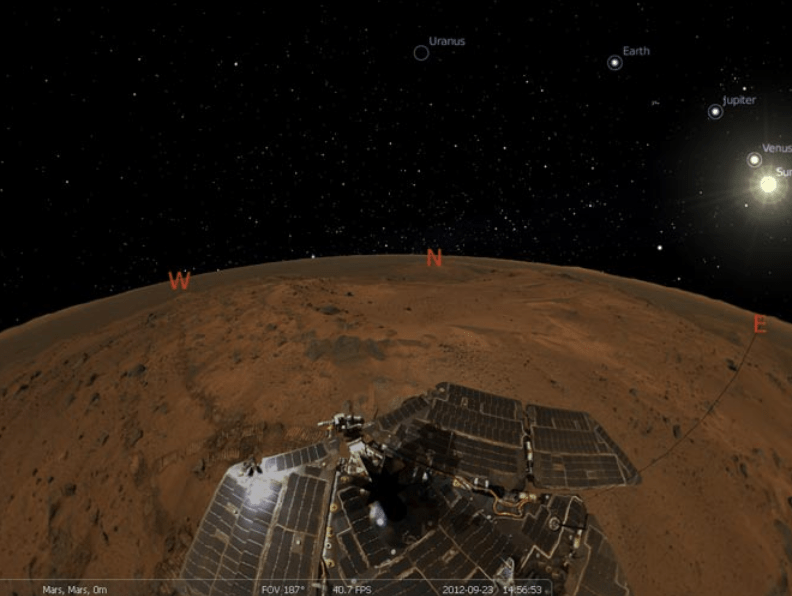
• Stellarium renders 3D photo-realistic skies in real time with OpenGL. It displays stars, constellations, planets and nebulae, and has many other features including multiple panoramic landscapes, fog, light pollution simulation and a built-in scripting engine.
• Stellarium comes with a star catalogue of about 600 thousand stars and it is possible to download extra catalogues with up to 210 million stars.
• Stellarium has multiple sky cultures – see the constellations from the traditions of Polynesian, Inuit, Navajo, Korean, Lakota, Egyptian and Chinese astronomers, as well as the traditional Western constellations.
• It is also possible to visit other planets in the solar system – see what the sky looked like to the Apollo astronauts, or what the rings of Saturn looks like from Titan.
Rhythmbox
Rhythmbox is a free and open-source audio player software, tag editor and music organizer for digital audio files on Linux and Unix-like systems.
Rhythmbox is designed to work well under GNOME, but can function on other desktop environments. It is very scalable, able to handle libraries with tens of thousands of songs with ease. It provides a full feature set including full support for Unicode, fast but powerful tag editing, and a variety of plug-ins.
Rhythmbox is the default audio player on many Linux distributions including Fedora, Ubuntu since v12.04 LTS, and Linux Mint as of version 18.1.
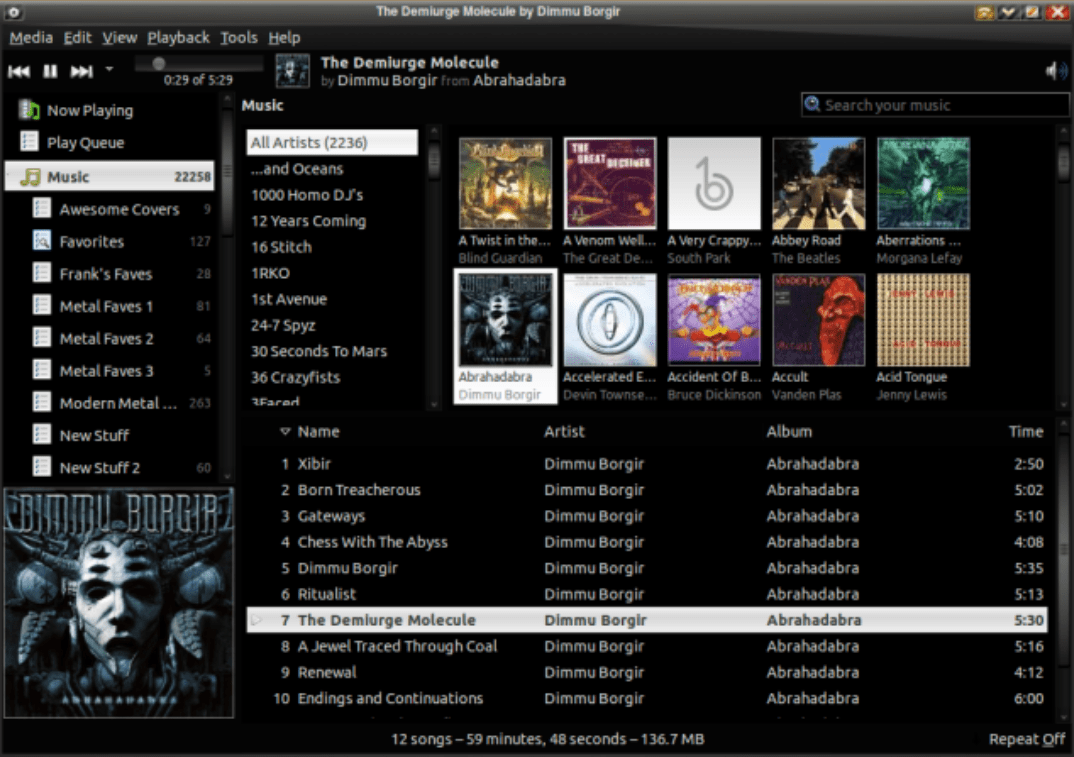
・ Transitions DJ
DJ Mixer
Transitions DJ is an app for mixing music, great for live DJing and mixtape production. Features include SoundCloud access, crossfading, tempo adjustment, looping, cue points, and tempo synchronization. Transitions DJ provides free access to an online database of song structure containing beats, bars, and phrases to aid in mix preparation and performance.
1. Desktop computer “Ubuntu Software Center” search installation
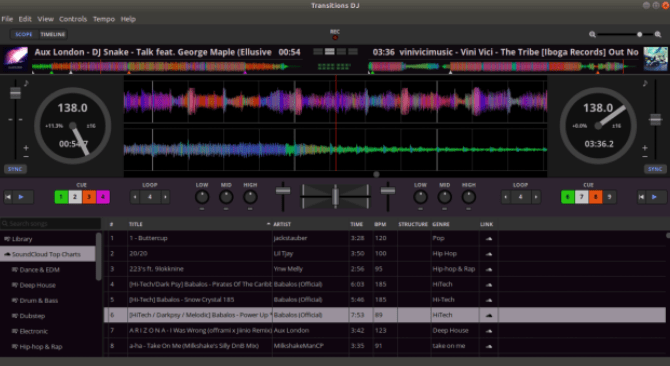
Features:
• SoundCloud access
• Local file access
• Recording
• BPM detection
• Tempo sync
• Looping
• Key lock
• 3-band EQ with kill switches
• Cue points
• Pitch bend
• Scratching
• Effects
• Zoomable waveforms, colored by sound frequency
• Annotations of beats, bars, and phrases (verse, chorus, etc.)
• Headphones pre-cueing
• MIDI controller support
・ SonoBus
SonoBus is an easy to use application for streaming high-quality, low-latency peer-to-peer audio between devices over the internet or a local network.
1. Desktop computer “Ubuntu Software Center” search installation
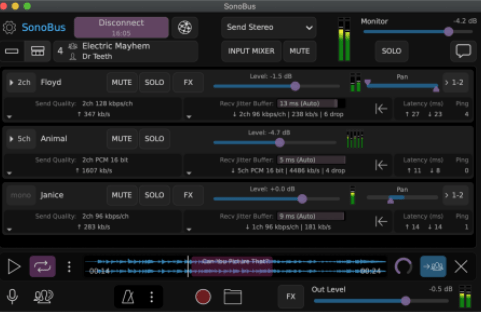
Simply choose a unique group name (with optional password), and instantly connect multiple people together to make music, remote sessions, podcasts, etc. Easily record the audio from everyone, as well as playback any audio content to the whole group. Connects multiple users together to send and receive audio among all in a group, with fine-grained control over latency, quality and overall mix. Includes optional input compression, noise gate, and EQ effects, along with a master reverb. All settings are dynamic, network statistics are clearly visible.
・ MuseScore
Create, play and print beautiful sheet music.
1. Desktop computer “Ubuntu Software Center” search installation
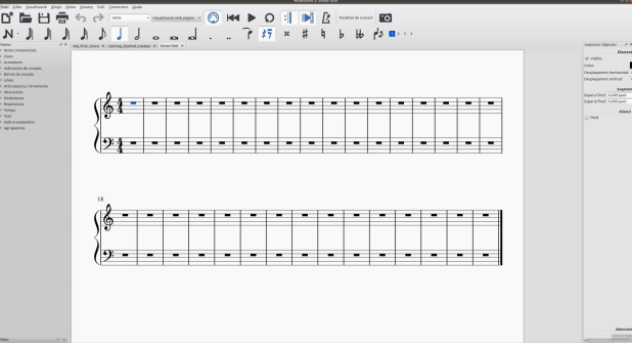
MuseScore is the world’s leading free and open-source software for writing music, with a user-friendly interface and immensely powerful features. It is free to install on Windows, Mac, and Linux.
Some interfaces need to be connected manually:
$ sudo snap connect musescore:cups-control
$ sudo snap connect musescore:network-manager
$ sudo snap connect musescore:alsa
$ sudo snap connect musescore:removable-media
But most of the application functionality works without them.
・ Audacity
Audio software for multi-track recording and editing
1. Desktop computer “Ubuntu Software Center” search installation
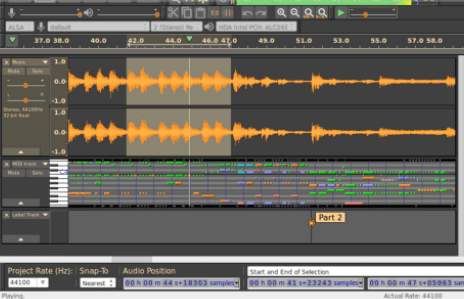
Audacity® is a free, easy-to-use, multi-track audio editor and recorder for Windows, Mac OS X, GNU/Linux and other operating systems. The interface is translated into many languages.
You can use Audacity to:
• Record live audio
• Convert tapes and records into digital recordings or CDs
• Edit WAV, AIFF, FLAC, MP2, MP3 or Ogg Vorbis sound files
• Cut, copy, splice or mix sounds together
• Change the speed or pitch of a recording
• Apply a wide range of other effects to audio recordings
・ Spotify
Music for everyone
1. Desktop computer “Ubuntu Software Center” search installation
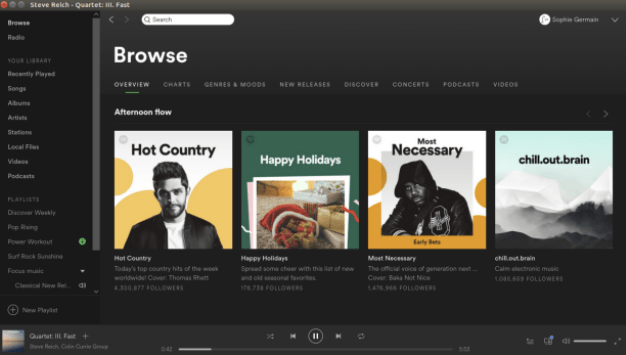
Love music? Play your favorite songs and albums free on Linux with Spotify.
Stream the tracks you love instantly, browse the charts or fire up readymade playlists in every genre and mood. Radio plays you great song after great song, based on your music taste. Discover new music too, with awesome playlists built just for you.
Stream Spotify free, with occasional ads, or go Premium.
Free: • Play any song, artist, album or playlist instantly • Browse hundreds of readymade playlists in every genre and mood • Stay on top of the Charts • Stream Radio • Enjoy podcasts, audiobooks and videos • Discover more music with personalized playlists
Premium: • Download tunes and play offline • Listen ad-free • Get even better sound quality • Try it free for 30 days, no strings attached
Game/Free Software
・ Steam
Launcher for the Steam software distribution service.
1. Desktop computer “Ubuntu Software Center” search installation
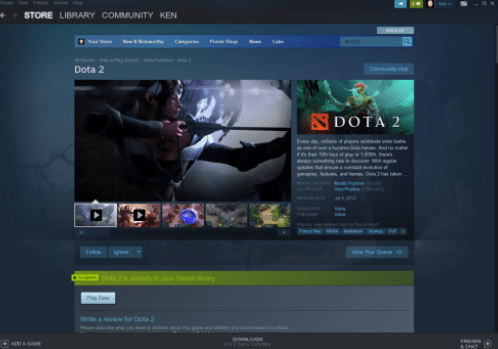
Steam is a software distribution service with an online store, automated installation, automatic updates, achievements, SteamCloud synchronized savegame and screenshot functionality, and many social features.
This package is maintained by Canonical and not officially supported by Valve. Please report any issues through the contact or website links.
DLsite
DLsite Doujin is a download shop for doujinshi, doujin games, doujin voice works, and ASMR content. You can immediately download and enjoy products you like! New items appear every day so you’re sure to find something for you. Welcome to Japan’s largest 2D content online retail site.

・ Minecraft
Minecraft is a 2011 sandbox game developed by Mojang Studios and originally released in 2009. The game was created by Markus “Notch” Persson in the Java programming language. Following several early private testing versions, it was first made public in May 2009 before being fully released on November 18, 2011, with Notch stepping down and Jens “Jeb” Bergensten taking over development. Minecraft has become the best-selling video game in history, with over 300 million copies sold and nearly 140 million monthly active players as of 2023. It has been ported to several platforms.
1. Desktop computer “Ubuntu Software Center” search installation

In Minecraft, players explore a blocky, pixelated procedurally generated, three-dimensional world with virtually infinite terrain. Players can discover and extract raw materials, craft tools and items, and build structures, earthworks, and machines. Depending on their chosen game mode, players can fight hostile mobs, as well as cooperate with or compete against other players in the same world. Game modes include a survival mode (in which players must acquire resources to build in the world and maintain health), creative mode (in which players have unlimited resources and the ability to fly), spectator mode (in which players can fly, go through blocks, and enter the bodies of other players and entities), adventure mode (in which players have to survive without being able to build and place blocks) and hardcore mode (in which the difficulty is set to Hard and dying causes the player to lose their ability to play on that world). The game’s large community also offers a wide variety of user-generated content, such as modifications, servers, skins, texture packs, and custom maps, which add new game mechanics and possibilities.
Minecraft has received critical acclaim, winning several awards and being cited by some as one of the greatest video games ever created; social media, parodies, adaptations, merchandise, and the annual Minecon conventions played prominent roles in popularizing the game. The game has also been used in educational environments to teach chemistry, computer-aided design, and computer science. In 2014, Mojang and the Minecraft intellectual property were purchased by Microsoft for US$2.5 billion. Several spin-offs have also been made, including Minecraft: Story Mode, Minecraft Earth, Minecraft Dungeons, and Minecraft Legends. In addition, a live-action film of the same name is scheduled for a theatrical release in 2025.
888 Casino
Play with the EGR WINNER 2022 Casino of the Year ✓ Exclusive Slots, Blackjack, Roulette & Live Casino Games ✓

888 Sport
Get the latest Sports Betting Odds. At 888sport, we’re passionate about all kinds of sports betting, from odds on premier league football, to racing and tennis.

888 Poker
888 poker is made to play with £50 Bonus ✓ FIRST DEPOSIT BONUS, T&Cs apply. Play online poker with access to the widest variety of poker games.

Video Games
Amazon Global ships million of video games to over 100 countries around the world. Shop Playstation 4, Xbox 360, and Nintendo games and accessories that ship to your international destination.
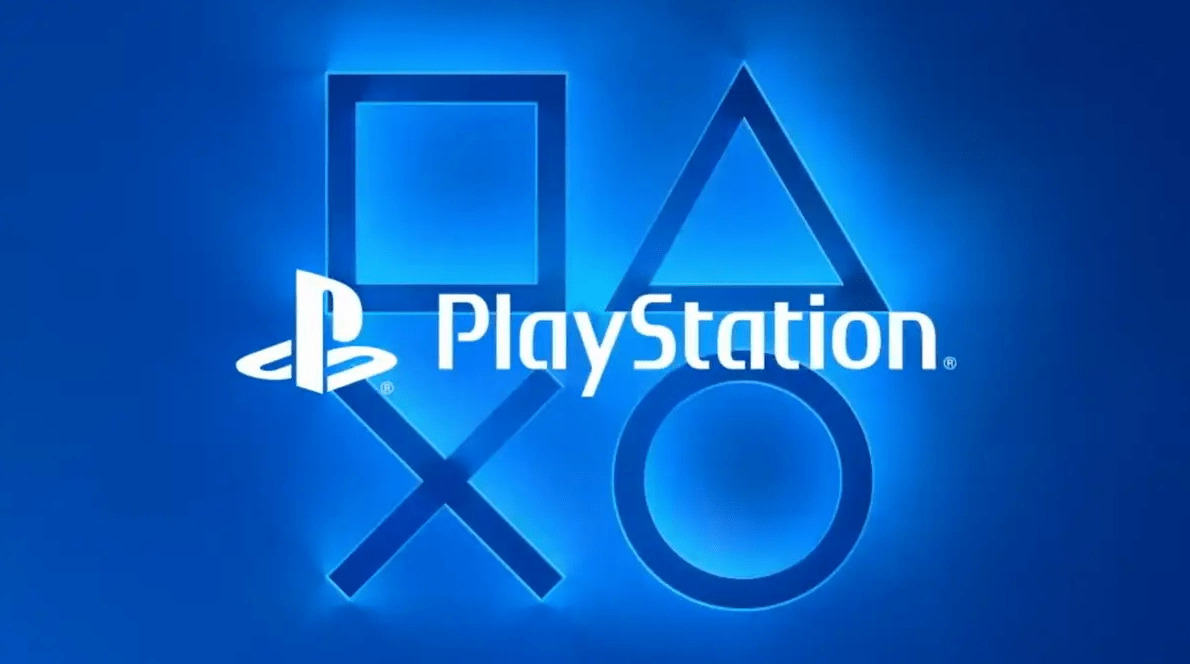
・ Linux World Map
Easily access maps from anywhere in the world. Search by city or address to quickly find the place you’re looking for and quickly find a meeting point.
This map app utilizes the OpenStreetMap database. This database has been created by a large number of people around the world working together.
1. Desktop computer “Ubuntu Software Center” search installation
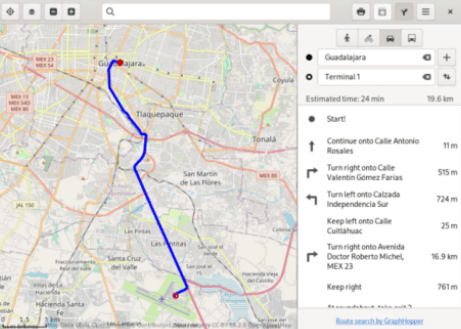
・ GNOME Dictionary
GNOME Dictionary is a simple dictionary application that looks up definitions of words online.
Though it looks up English definitions by default, you can easily switch to Spanish or add other online dictionaries using the DICT protocol to suit your needs.
1. Desktop computer “Ubuntu Software Center” search installation
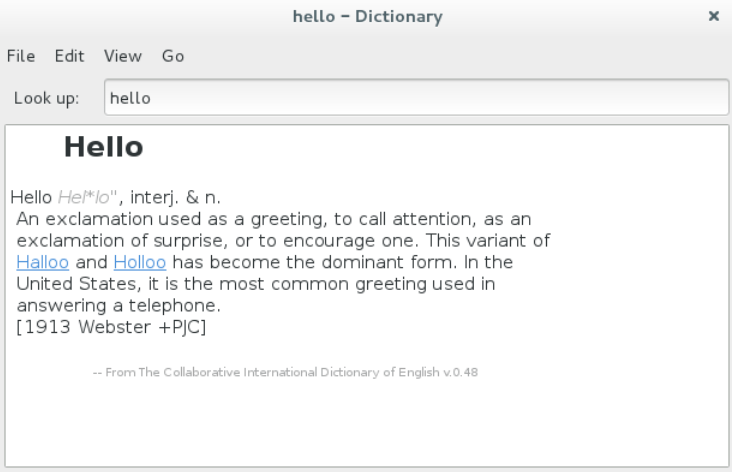
・ Extensions
Manage GNOME extensions
1. Desktop computer “Ubuntu Software Center” search installation

“Extensions” allows you to configure, update, and delete GNOME Shell extensions, as well as disable unnecessary extensions.
・ Extension Manager
Utility that allows you to easily search for and add GNOME Shell extensions.
1. Desktop computer “Ubuntu Software Center” search installation
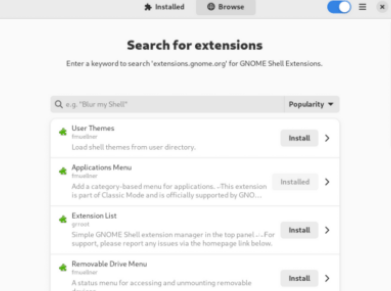
Function:
• Explore extensions.gnome.org within the app.
• You can also manage extensions you have added so far.
GNOME Characters
Character Map Application.

Characters is a simple utility for finding and inserting unusual characters. Keyword search allows you to quickly find characters.
You can also browse by categories like punctuation symbols and emojis.
・ Gnome Tweak
GNOME Tweaks is a tool for adjusting advanced options in GNOME.
With this tool, you can install and manage themes and extensions, change power settings, manage startup applications, set desktop icons, and more.
1. Desktop computer “Ubuntu Software Center” search installation
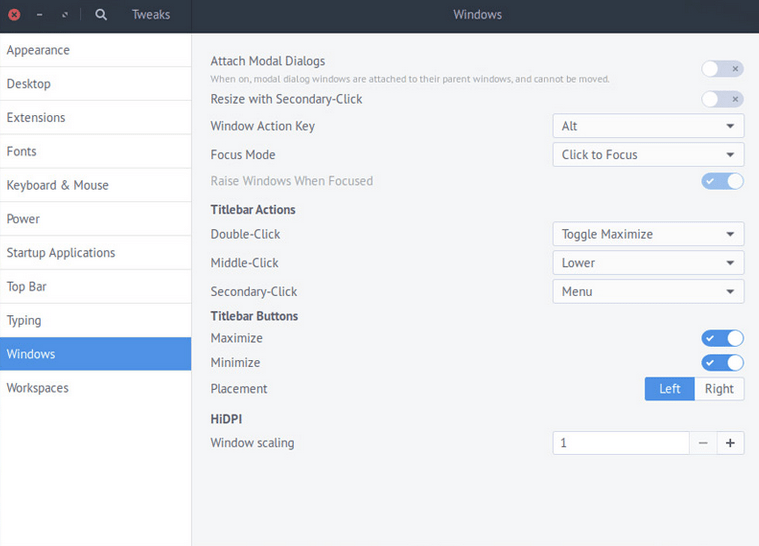
GNOME
GNOME (/ɡəˈnoʊm, ˈnoʊm/), originally an acronym for GNU Network Object Model Environment, is a free and open-source desktop environment for Linux and other Unix-like operating systems.
Many major Linux distributions, including Debian, Fedora Linux, Ubuntu, Red Hat Enterprise Linux, and SUSE Linux Enterprise distribute GNOME as their default desktop environment; it is also the default in Oracle Solaris, a Unix operating system.
GNOME is developed by the GNOME Project, which is composed of both volunteers and paid contributors, the largest corporate contributor being Red Hat. It is an international project that aims to develop frameworks for software development, to program end-user applications based on these frameworks, and to coordinate efforts for the internationalization, localization, and accessibility of that software.
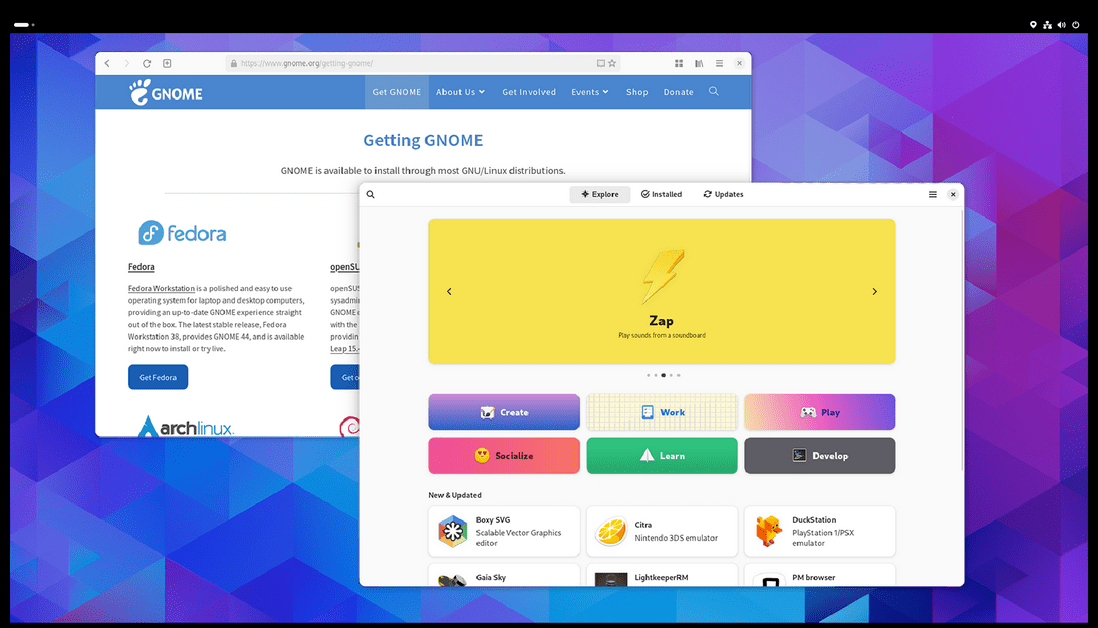
KDE
KDE is an international free software community that develops free and open-source software. As a central development hub, it provides tools and resources that allow collaborative work on this kind of software. Well-known products include the Plasma Desktop, KDE Frameworks, and a range of cross-platform applications such as Amarok, digiKam, and Krita that are designed to run on Unix and Unix-like operating systems, Microsoft Windows, and Android.
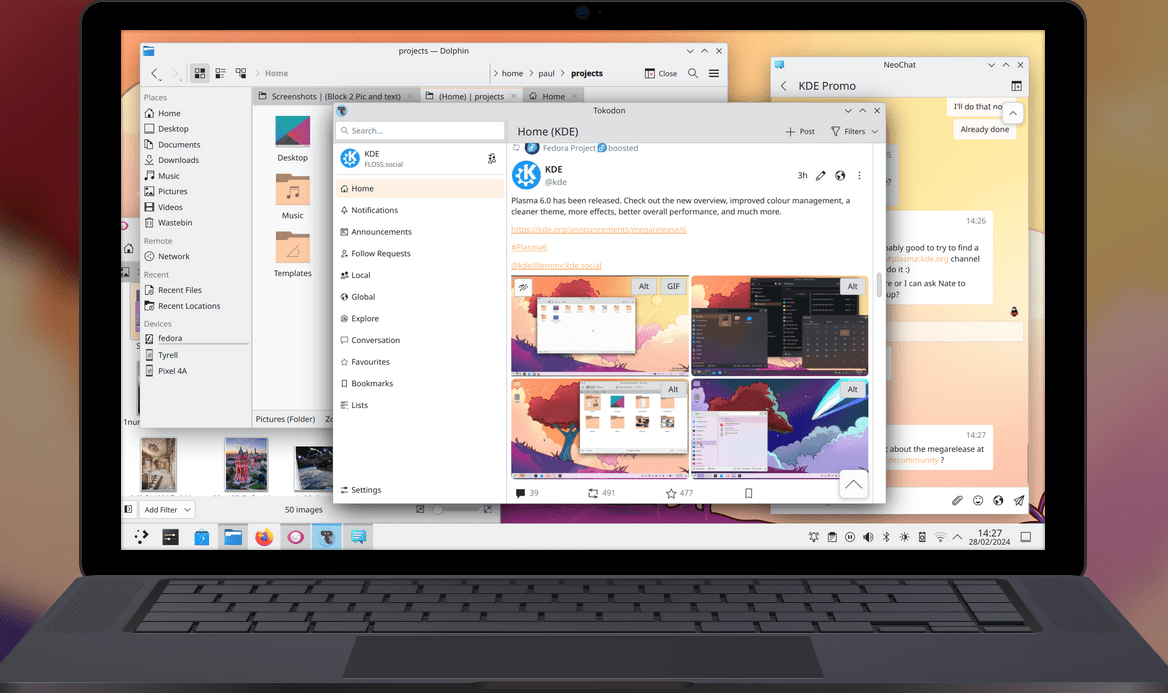
GTK
GTK (formerly GIMP ToolKit and GTK+) is a free software cross-platform widget toolkit for creating graphical user interfaces (GUIs). It is licensed under the terms of the GNU Lesser General Public License, allowing both free and proprietary software to use it. It is one of the most popular toolkits for the Wayland and X11 windowing systems.
The GTK team releases new versions on a regular basis. GTK 4 and GTK 3 are maintained, while GTK 2 is end-of-life. GTK1 is independently maintained by the CinePaint project.
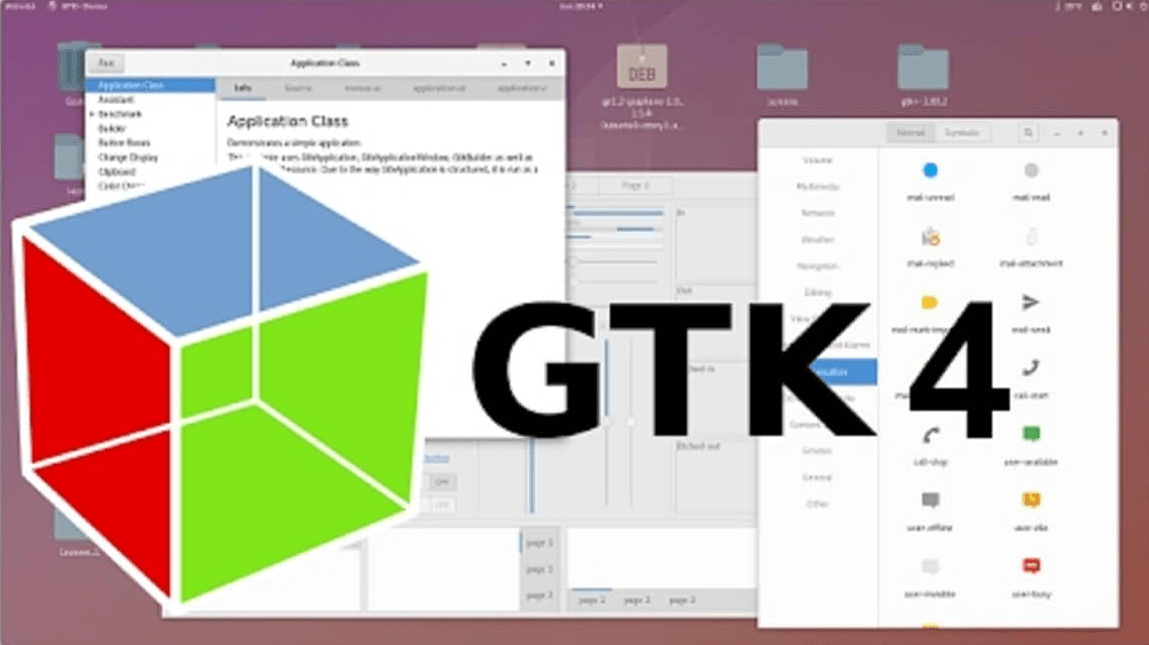
Wayland
Wayland is a replacement for the X11 window system protocol and architecture with the aim to be easier to develop, extend, and maintain.
Wayland is the language (protocol) that applications can use to talk to a display server in order to make themselves visible and get input from the user (a person). A Wayland server is called a “compositor”. Applications are Wayland clients.
Wayland also refers to a system architecture. It is not just a server-client relationship between a compositor and applications. There is no single common Wayland server like Xorg is for X11, but every graphical environment brings with it one of many compositor implementations. Window management and the end user experience are often tied to the compositor rather than swappable components.
A core part of Wayland architecture is libwayland: an inter-process communication library that translates a protocol definition in XML to a C language API. This library does not implement Wayland, it merely encodes and decodes Wayland messages. The actual implementations are in the various compositor and application toolkit projects.
Wayland does not restrict where and how it is used. A Wayland compositor could be a standalone display server running on Linux kernel modesetting and evdev input devices or on many other operating systems, or a nested compositor that itself is an X11 or Wayland application (client). Wayland can even be used in application-internal communication as is done in some web browsers.
Part of the Wayland project is also the Weston reference implementation of a Wayland compositor. Weston can run as an X client or under Linux KMS and ships with a few demo clients. The Weston compositor is a minimal and fast compositor and is suitable for many embedded and mobile use cases.
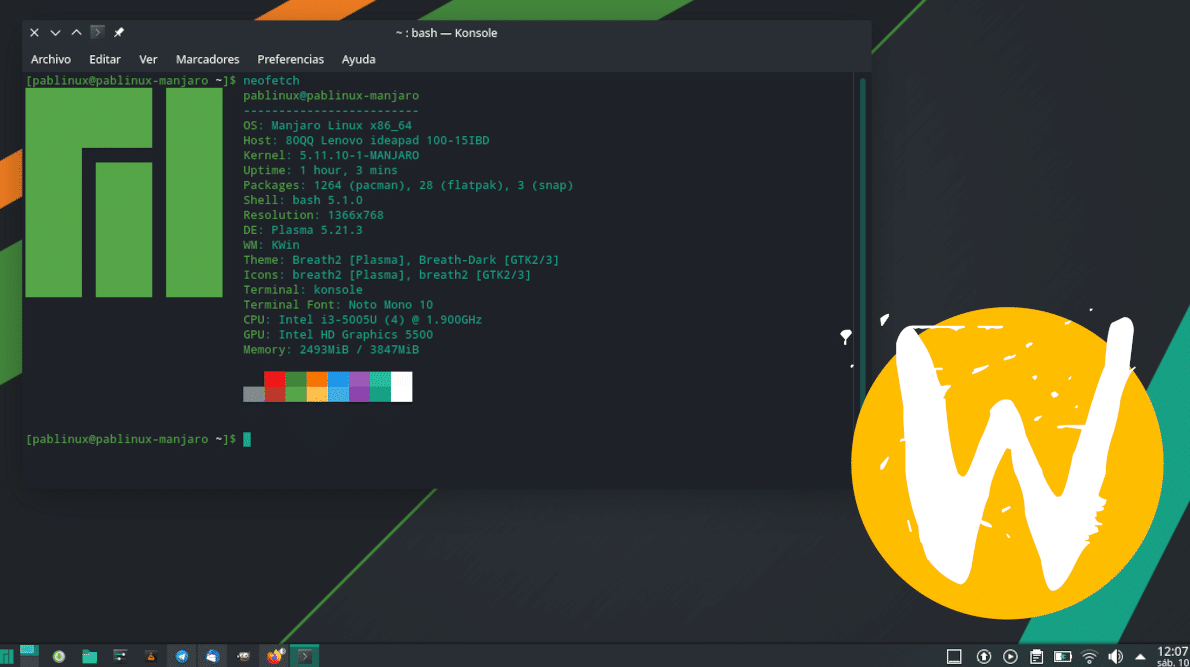
X Window System
The X Window System (X11, or simply X) is a windowing system for bitmap displays, common on Unix-like operating systems.
X provides the basic framework for a GUI environment: drawing and moving windows on the display device and interacting with a mouse and keyboard. X does not mandate the user interface – this is handled by individual programs. As such, the visual styling of X-based environments varies greatly; different programs may present radically different interfaces.
X originated as part of Project Athena at Massachusetts Institute of Technology (MIT) in 1984. The X protocol has been at version 11 (hence “X11”) since September 1987. The X.Org Foundation leads the X project, with the current reference implementation, X.Org Server, available as free and open-source software under the MIT License and similar permissive licenses.
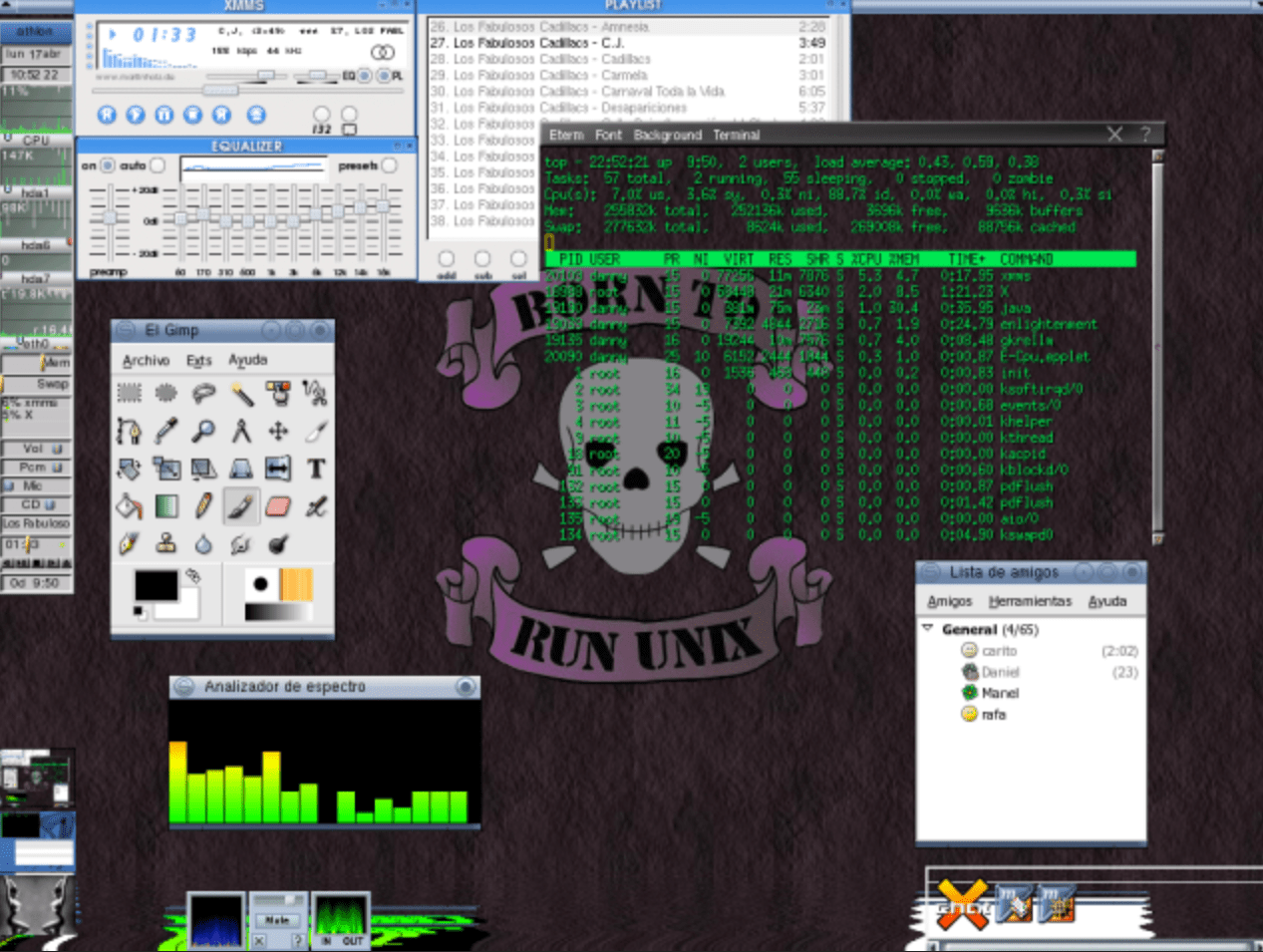
The GNU Operating System and the Free Software Movement
Since 1983, developing the free Unix style operating system GNU, so that computer users can have the freedom to share and improve the software they use.

Danger Zone
Welcome to the Underground World. From this point onwards, it will be a “Danger Zone“, so please show the animation to your child.
![]()
“Danger Zone” first learned about the technology called “Internet” and launched a “DOS/V ” “homepage” in “1997”
Difference between graphical interface “GUI” and “CUI” command line interface.
The “Microsoft” and “Macintosh” graphical interfaces appeared in the “Linux” command line era and fascinated users all over the world.
Operation programs around the world are written in alphanumeric codes. “Linux” “CUI” command line user interface. It is simply called an “OS”. You won’t believe it, but in 1997, a computer manufactured Graphical user interface “GUI” by “Microsoft” and “Macintosh” cost $7,000.
Sex Toy/Adult Goods
“Danger Zone”
“Black market” such and such items that are prohibited by law. Welcome to the “underground” world.
“GUI”?
Graphical user interface.
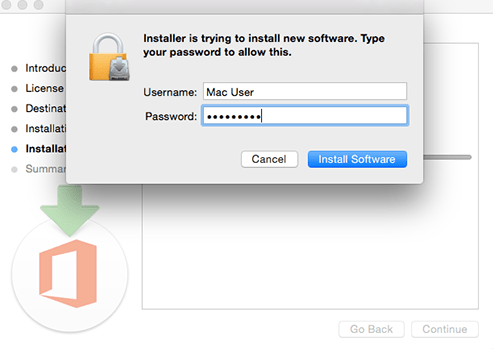
“CUI”?
Command line user interface.

Do you prefer free operation interface software or paid operation interface software?
GitHub
“Black market” network exists between free application programs developed by individuals and paid application programs developed by companies.

Oracle
Oracle Corporation is an American multinational computer technology company headquartered in Austin, Texas, United States. In 2020, Oracle was the third-largest software company in the world by revenue and market capitalization. In 2023, the company’s seat in Forbes Global 2000 was 80. The company sells database software (particularly the Oracle Database) and cloud computing. Oracle’s core application software is a suite of enterprise software products, such as enterprise resource planning (ERP) software, human capital management (HCM) software, customer relationship management (CRM) software, enterprise performance management (EPM) software, Customer Experience Commerce(CX Commerce) and supply chain management (SCM) software.
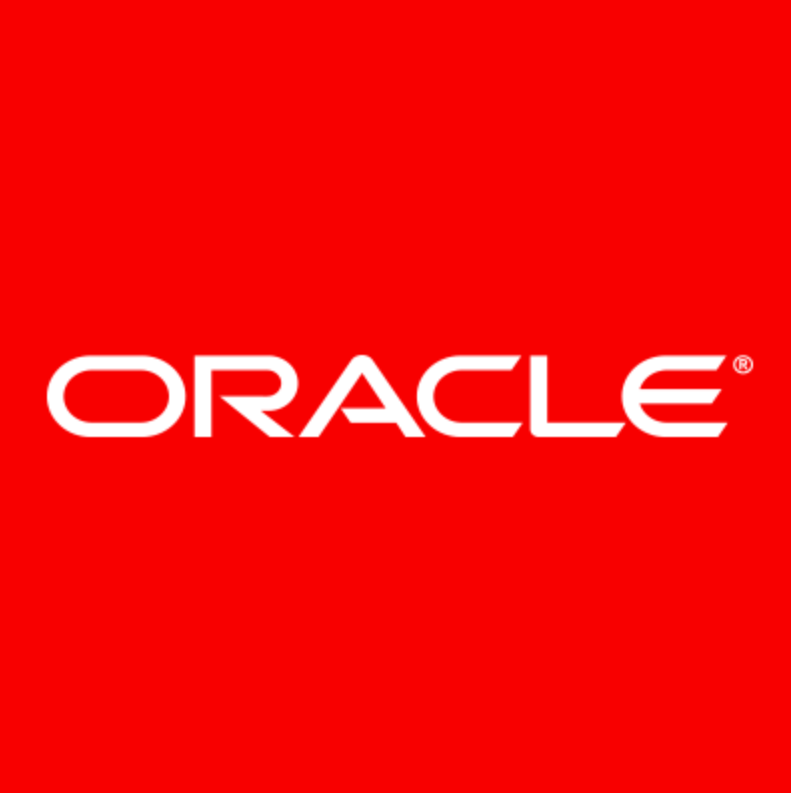
Linux.org
Friendly Linux Forum.

Popular Linux Distributions
Debian
Debian is an operating system and a distribution of Free Software. It is maintained and updated through the work of many users who volunteer their time and effort.

CentOS
Community-driven free software effort focused around the goal of providing a rich base platform for open source communities to build upon.

Fedora
An innovative platform for hardware, clouds, and containers, built with love by you.

Slackware
Want to give Slackware 15.0 a test drive without modifying your disk drive? Then check out Slackware Live Edition! This is a complete Slackware installation that can run from a DVD or USB stick. Thanks to Eric Hameleers for the great work on this! Here’s where to find it: https://download.liveslak.org/
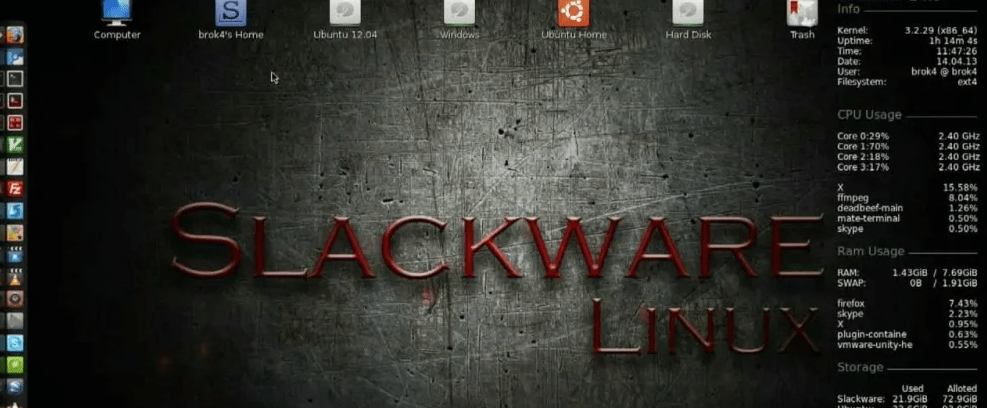
linux Mint
Linux Mint is an elegant, easy to use, up to date and comfortable desktop operating system.
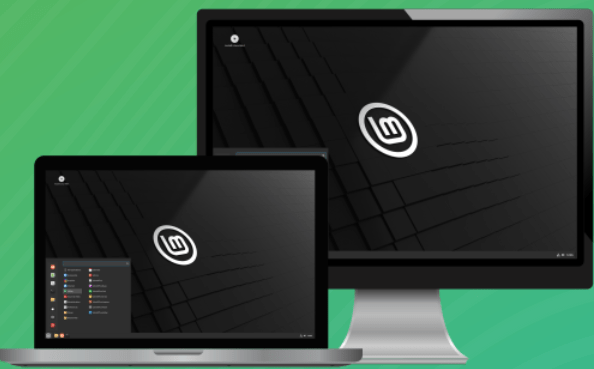
Xubuntu
Xubuntu is an elegant and easy to use operating system. Xubuntu comes with Xfce, which is a stable, light and configurable desktop environment.
Xubuntu is perfect for those who want the most out of their desktops, laptops and netbooks with a modern look and enough features for efficient, daily usage. It works well on older hardware too.

Arch Linux
Arch Linux is an independently developed, x86-64 general-purpose Linux distribution that strives to provide the latest stable versions of most software by following a rolling-release model. The default installation is a minimal base system, configured by the user to only add what is purposely required.

openSUSE
Discover Tumbleweed and get the newest Linux packages with our rolling release. Fast! Integrated! Stabilized! Tested!. Discover Leap and get the most complete Linux distribution with openSUSE’s latest regular-release version!
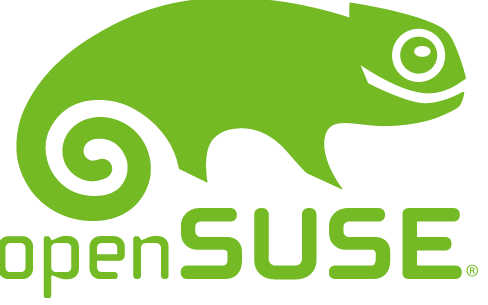
Red Hat
Red Hat, Inc. (formerly Red Hat Software, Inc.) is an American software company that provides open source software products to enterprises and is a subsidiary of IBM. Founded in 1993, Red Hat has its corporate headquarters in Raleigh, North Carolina, with other offices worldwide.
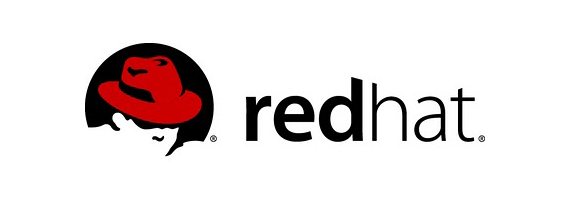
PureOS
A fully-convergent, user friendly, secure and freedom respecting OS for your daily usage.
With PureOS, you are the only one in control of your digital life.

Zorin
Zorin OS is designed to be easy, so you don’t need to learn anything to get started. The Zorin Appearance app lets you change the desktop layout to feel like the environment you’re familiar with, whether it’s Windows, macOS, or Linux.
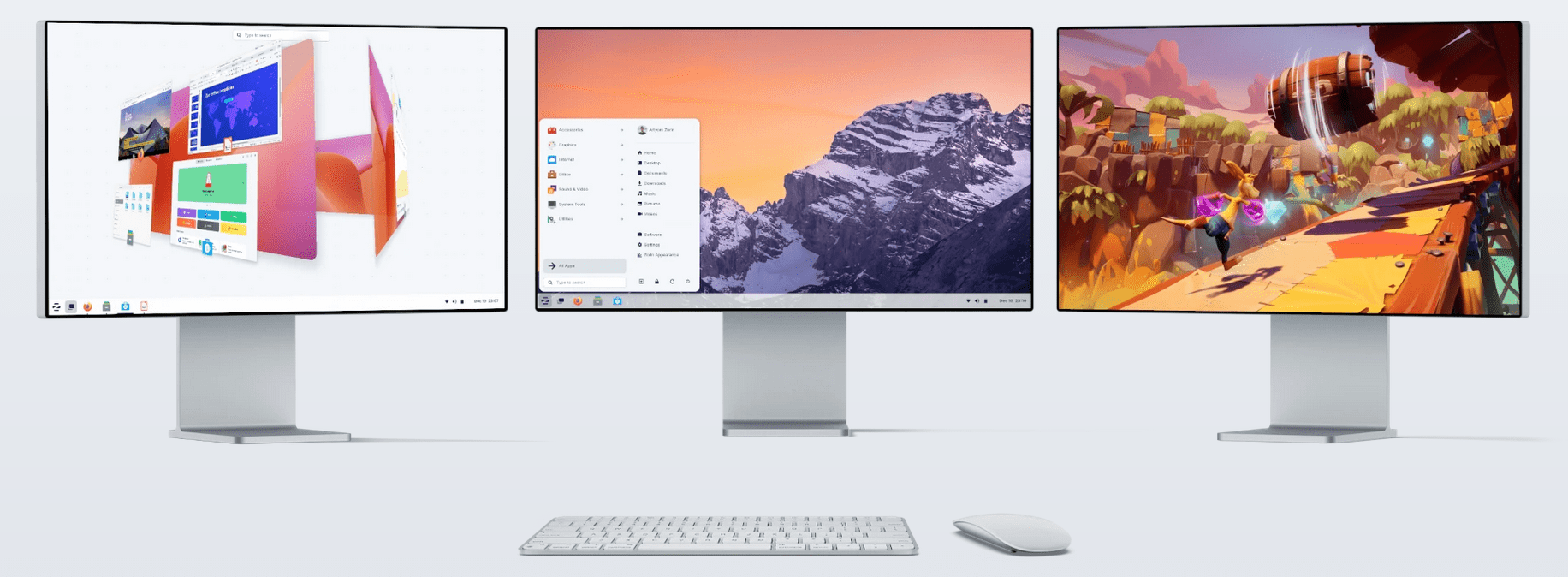
Kubuntu
Kubuntu, making your PC friendly
Kubuntu is an operating system built by a worldwide community of developers, testers, supporters and translators. Kubuntu is a free, complete, and open-source alternative to Microsoft Windows and Mac OS X which contains everything you need to work, play, or share. Check out the Feature Tour if you would like to learn more!
Kubuntu unites Ubuntu with KDE and the fabulous Plasma desktop, bringing you a full set of applications. The installation includes productivity, office, email, graphics, photography, and music applications ready to use at startup.
Firefox, Kmail, LibreOffice, Gwenview are just a few installed and ready to use, with thousands more, available in just a click, from the Discover software centre. Built using the Qt toolkit, Kubuntu is fast, slick and beautiful. Kubuntu is mobile-ready, enabling easy integration between your PC desktop and phone or tablet. Simply use the Google Play store to install KDE Connect on your Android device and you can integrate your device with your desktop.

Lubuntu
Lubuntu is a complete Operating System that ships the essential apps and services for daily use: office applications, PDF reader, image editor, music and video players, etc.
If you need more, you can use the Discover Software Center to download the required app that suits your needs, for free.
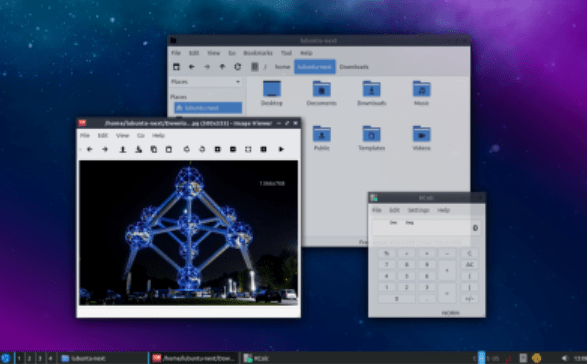
Kali
Kali Linux is an open-source, Debian-based Linux distribution geared towards various information security tasks, such as Penetration Testing, Security Research, Computer Forensics and Reverse Engineering.
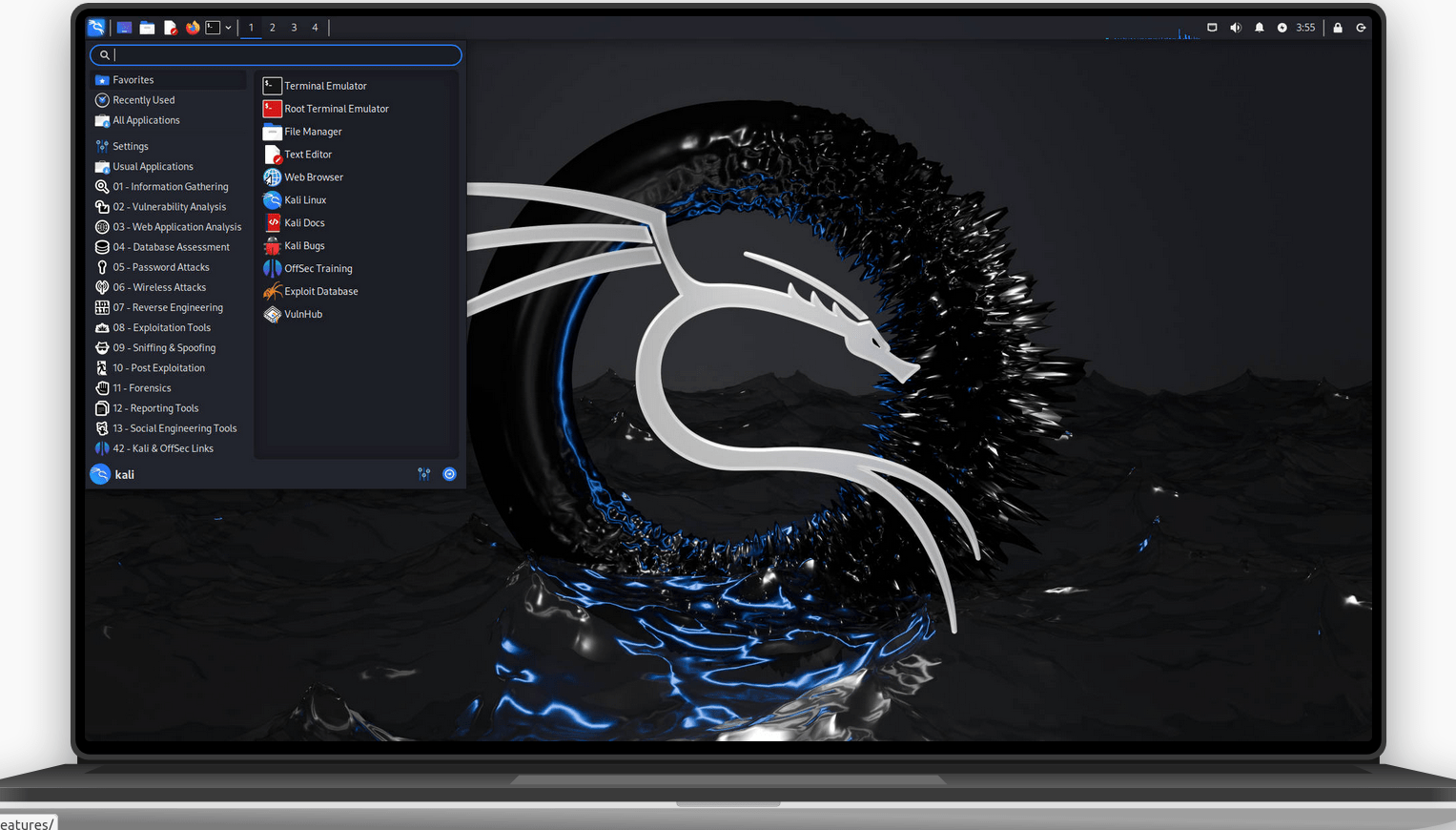
AlmaLinux
Free Linux OS for the community, by the community
An Open Source, community owned and governed, forever-free enterprise Linux distribution, focused on long-term stability, providing a robust production-grade platform. AlmaLinux OS is binary compatible with RHEL®.
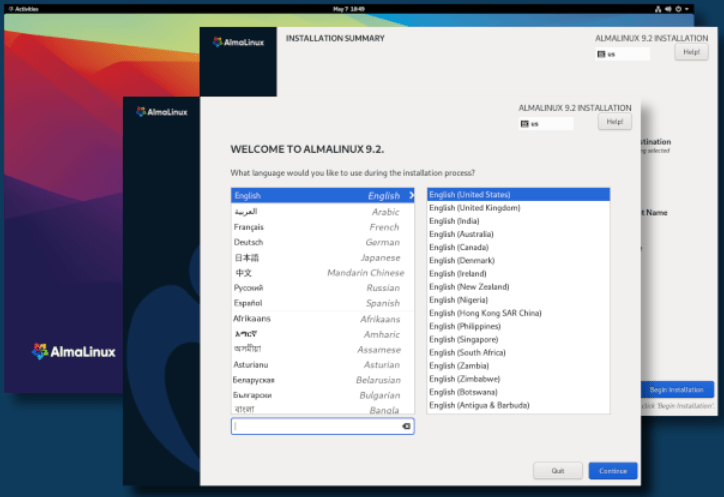
Rocky Linux
Rocky Linux is an open-source enterprise operating system designed to be 100% bug-for-bug compatible with Red Hat Enterprise Linux®. It is under intensive development by the community.
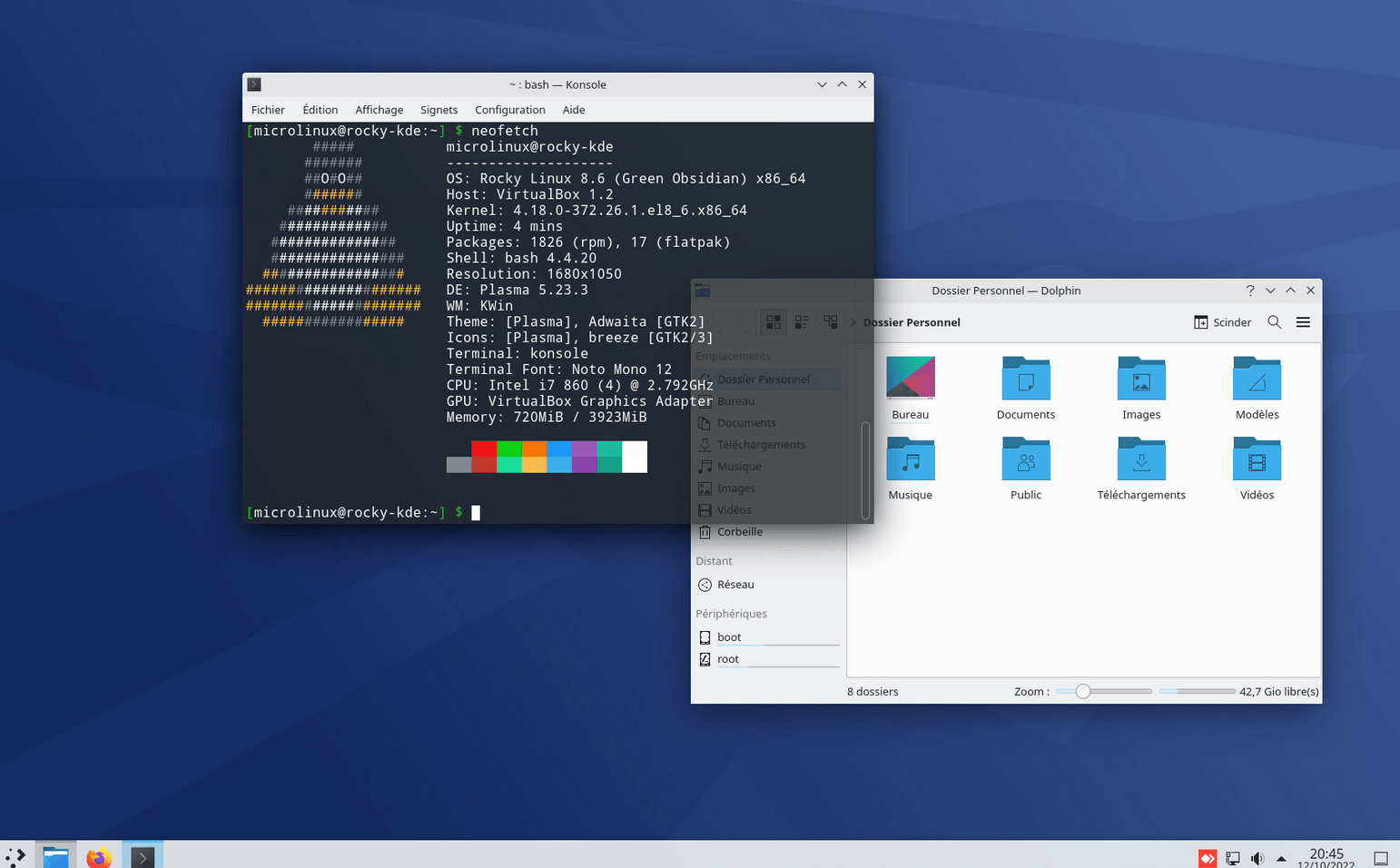
Enterprise Open Source and Linux | Ubuntu
Ubuntu is the modern, open source operating system on Linux for the enterprise server, desktop, cloud, and IoT.

Free Web Server
How to start a free web server.

Software required for free web server
Users who are not familiar with Linux
1. Desktop computer “Ubuntu Software Center” search installation
2. Synaptic search installation
3. Ubuntu Terminal
Security Software. Free web server system monitoring software.
・ Gufw
GUIs for Uncomplicated Firewall. Gufw is intended to be an easy, intuitive graphical user interface for managing Uncomplicated Firewall. It supports common tasks such as allowing or blocking pre-configured, common P2P, or individual ports. Gufw has been designed for Ubuntu, but is also available in Debian-based distributions and in Arch Linux; anywhere Python, GTK and UFW are available.
1. Desktop computer “Ubuntu Software Center” search installation
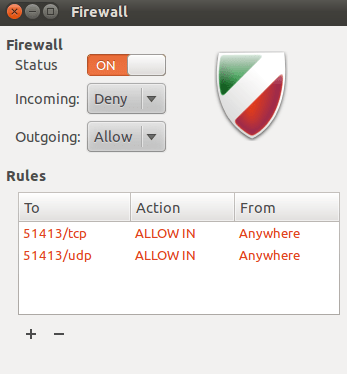
・ ClamTK
ClamTk is a free software graphical interface for the ClamAV command line antivirus software program, for Linux desktop users. It provides both on-demand and scheduled scanning. The project was started by Dave Mauroni in February 2004 and remains under development.
ClamTk was originally written using the Tk widget toolkit, for which it is named, but it was later re-written in Perl, using the GTK toolkit. The interface has evolved considerably over time and recent versions are quite different than early releases, adding features and changing the interface presentation. It is dual-licensed under the GNU General Public License version 1 or later, and the Artistic License.
1. Desktop computer “Ubuntu Software Center” search installation

・ Psensor
Psensor is a graphical temperature monitor for Linux. Psensor is a GTK+ application for monitoring hardware sensors, including temperatures and fan speeds. It displays a curve for each sensor, alerts user using Desktop Notification and Application Indicator when a temperature is too high.
It can monitor: * the temperature of the motherboard and CPU sensors (using lm-sensors). * the temperature of the NVidia GPUs (using XNVCtrl). * the temperature of the Hard Disk Drives (using hddtemp or atasmart lib). * the rotation speed of the fans (using lm-sensors). * the sensors of a remote computer (using psensor-server).
1. Desktop computer “Ubuntu Software Center” search installation

・ GNOME System Monitor
You can also click any one of the tabs at the top of the window to get even more information about your system. The Resources tab is a very handy way to get real-time data on CPU, Memory, Swap, and Network (Figure 4).
Linux Pre-installed software
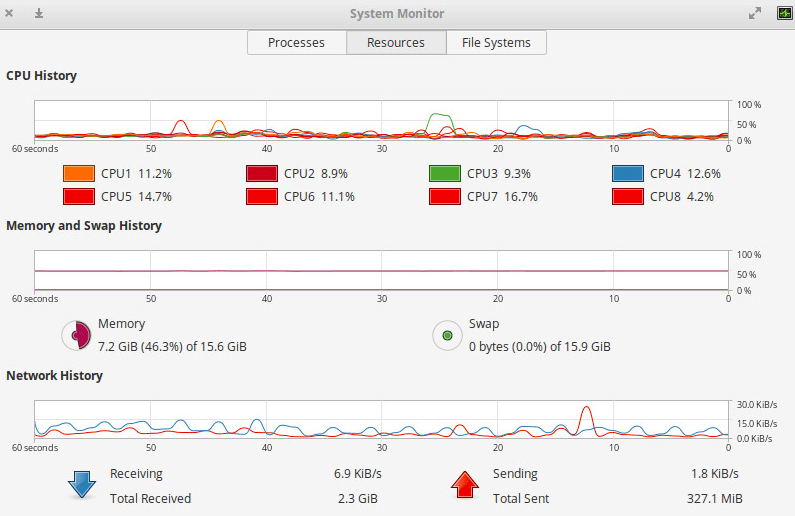
・ Conky
Conky is a free software desktop system monitor for the X Window System. It is available for Linux, FreeBSD, and OpenBSD. Conky is highly configurable and is able to monitor many system variables including the status of the CPU, memory, swap space, disk storage, temperatures, processes, network interfaces, battery power, system messages, e-mail inboxes, Arch Linux updates, many popular music players (MPD, XMMS2, BMPx, Audacious, etc.), weather updates, breaking news, and much more. Unlike system monitors that use high-level widget toolkits to render their information, Conky is drawn directly in an X window. This allows it to be configured such that it consumes relatively few system resources.
Conky was hailed as “one of the best maintained, and definitely one of the most useful, programs in the world of open source” in Linux Magazine.
It comes pre-configured in the default installation of Pinguy OS and CrunchBang Linux.

・ Conky install
2. Synaptic search installation
“Conky all” search install
・ lm-sensors install
3. Ubuntu Terminal
$ sudo apt install lm-sensors
Let lm-sensors recognize device information.
$ sudo sensors-detect
There were about 10 inquiries and I answered “yes” to all of them.
sensors detect completed
$ sensors
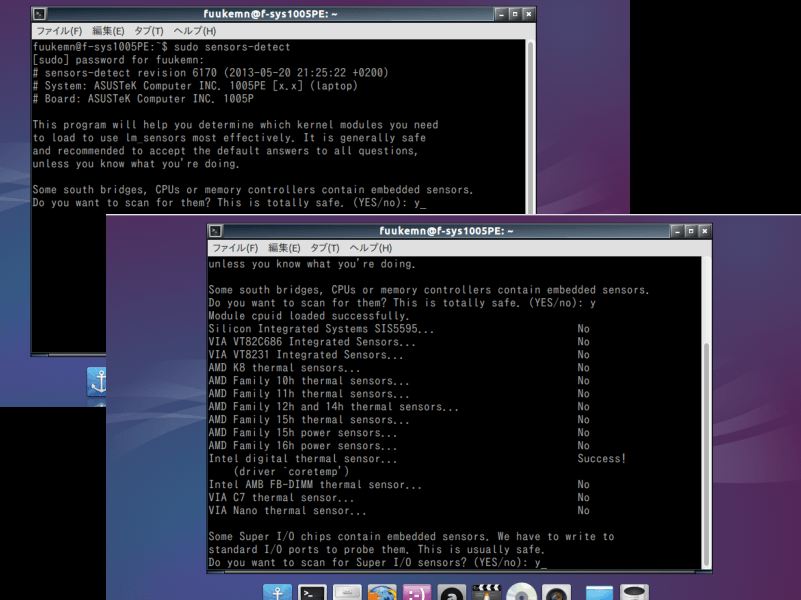
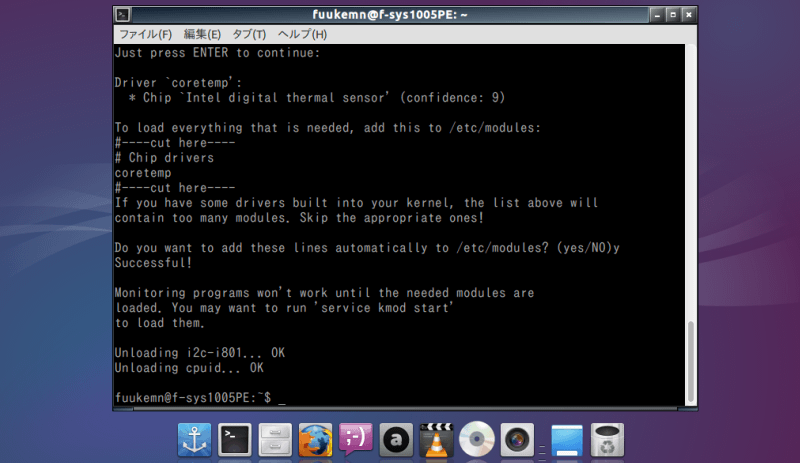
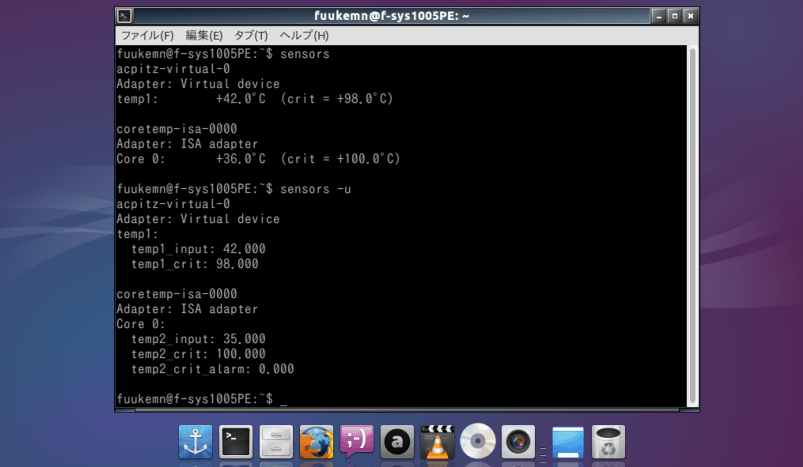
HDD temperature
$ sudo hddtemp /dev/sda

・ hddtemp install
3. Ubuntu Terminal
$ sudo apt update
$ wget http://archive.ubuntu.com/ubuntu/pool/universe/h/hddtemp/hddtemp_0.3-beta15-53_amd64.deb
$ sudo apt install ./hddtemp_0.3-beta15-53_amd64.deb
・ Start Conky automatically

Default Conky
/etc/conky/conky_no_x11.conf
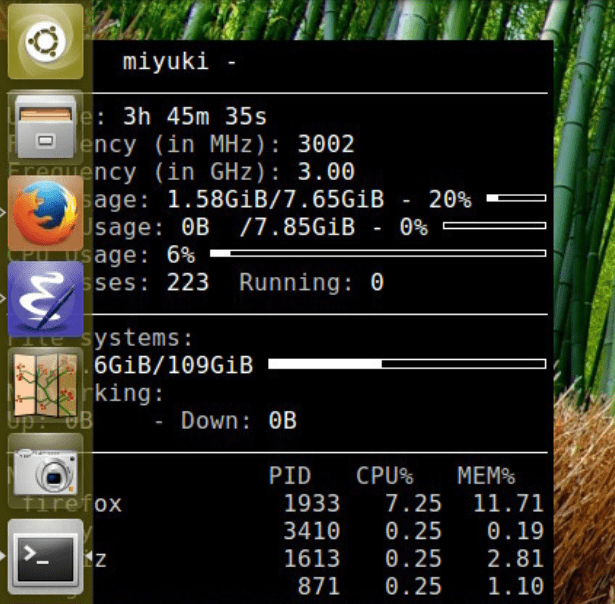
— Conky, a system monitor https://github.com/brndnmtthws/conky
—
— This configuration file is Lua code. You can write code in here, and it will
— execute when Conky loads. You can use it to generate your own advanced
— configurations.
—
— Try this (remove the `–`):
—
— print(“Loading Conky config”)
—
— For more on Lua, see:
— https://www.lua.org/pil/contents.html
conky.config = {
background = false,
cpu_avg_samples = 2,
net_avg_samples = 2,
no_buffers = true,
out_to_stderr = false,
update_interval = 1.0,
uppercase = false,
use_spacer = ‘none’,
};
conky.text =
[[${scroll 16 $nodename – $sysname $kernel on $machine | }
Uptime: $uptime
Frequency (in MHz): $freq
Frequency (in GHz): $freq_g
RAM Usage: $mem/$memmax – $memperc% ${membar 4}
Swap Usage: $swap/$swapmax – $swapperc% ${swapbar 4}
CPU Usage: $cpu% ${cpubar 4}
Processes: $processes Running: $running_processes
File systems:
/ ${fs_used /}/${fs_size /} ${fs_bar 6 /}
Networking:
Up: ${upspeed} – Down: ${downspeed}
Name PID CPU% MEM%
${top name 1} ${top pid 1} ${top cpu 1} ${top mem 1}
${top name 2} ${top pid 2} ${top cpu 2} ${top mem 2}
${top name 3} ${top pid 3} ${top cpu 3} ${top mem 3}
${top name 4} ${top pid 4} ${top cpu 4} ${top mem 4}
]];
Custom Conky
$ sudo nano /etc/conky/conky.conf
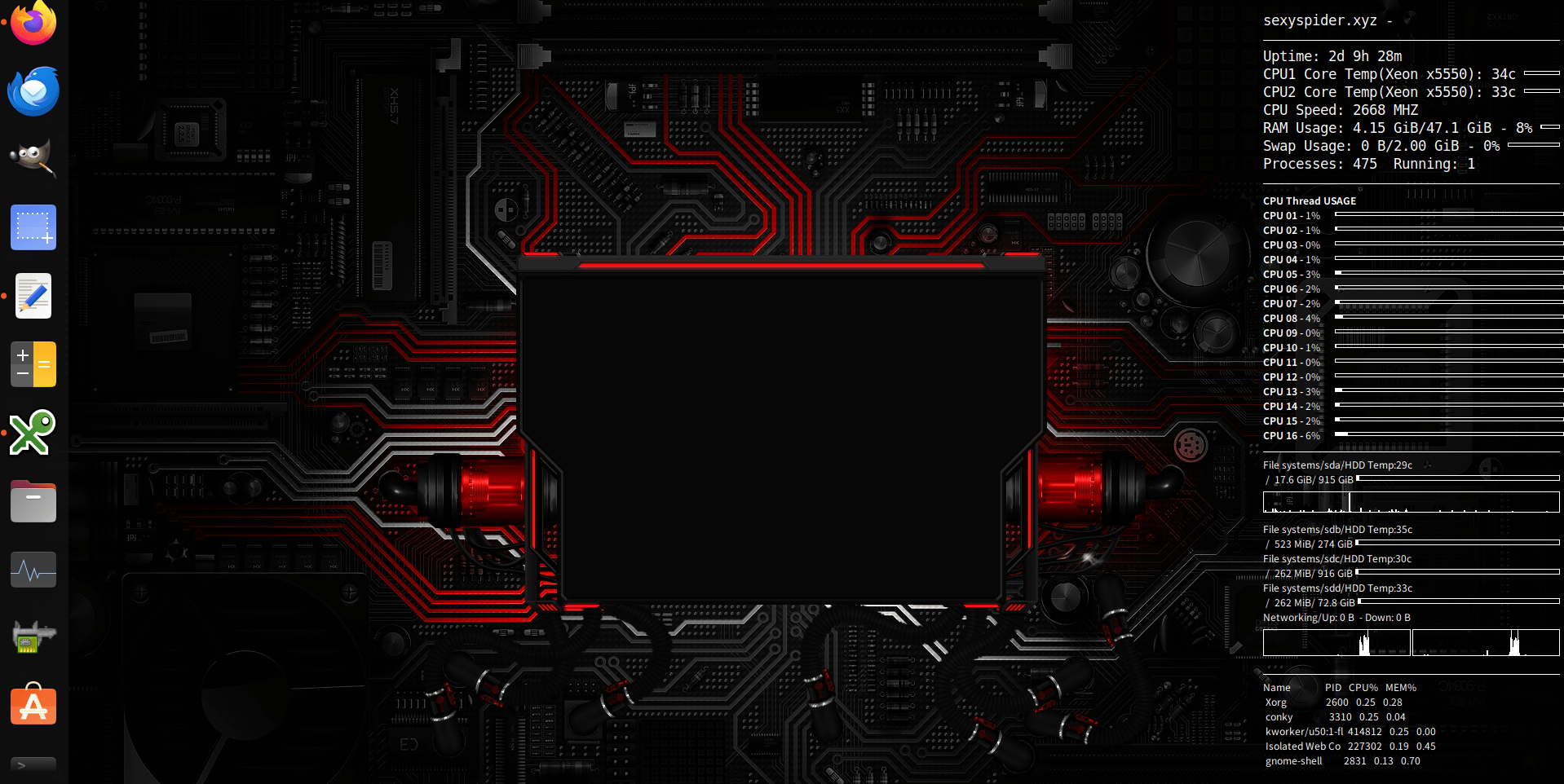
— Conky, a system monitor https://github.com/brndnmtthws/conky
—
— This configuration file is Lua code. You can write code in here, and it will
— execute when Conky loads. You can use it to generate your own advanced
— configurations.
—
— Try this (remove the `–`):
—
— print(“Loading Conky config”)
—
— For more on Lua, see:
— https://www.lua.org/pil/contents.html
conky.config = {
alignment = ‘top_right’,
background = true,
border_width = 1,
cpu_avg_samples = 8,
default_color = ‘white’,
default_outline_color = ‘white’,
default_shade_color = ‘white’,
draw_borders = false,
draw_graph_borders = true,
draw_outline = false,
draw_shades = false,
use_xft = true,
font = ‘DejaVu Sans Mono:size=13’,
gap_x = 5,
gap_y = 60,
minimum_height = 5,
minimum_width = 5,
net_avg_samples = 2,
no_buffers = true,
double_buffer = true,
out_to_console = false,
out_to_stderr = false,
extra_newline = false,
own_window = true,
own_window_class = ‘Conky’,
own_window_type = ‘normal’,
own_window_transparent = true,
own_window_argb_visual = true,
own_window_hints = ‘undecorated,below,sticky,skip_taskbar,skip_pager’,
stippled_borders = 0,
update_interval = 1.0,
uppercase = false,
use_spacer = ‘none’,
show_graph_scale = false,
show_graph_range = false
}
conky.text = [[
${scroll 16 $nodename – $sysname $kernel on $machine | }
$hr
${color white}Uptime:$color $uptime
${color white}CPU1 Core Temp(Xeon x5550):$color ${execi 5 sensors -u coretemp-isa-0000 | grep ‘temp2_input’ | cut -c16-17}c ${cpubar 4}
${color white}CPU2 Core Temp(Xeon x5550):$color ${execi 5 sensors -u coretemp-isa-0001 | grep ‘temp2_input’ | cut -c16-17}c ${cpubar 4}
${color white}CPU Speed:$color ${freq} MHZ
${color white}RAM Usage:$color $mem/$memmax – $memperc% ${membar 4}
${color white}Swap Usage:$color $swap/$swapmax – $swapperc% ${swapbar 4}
${color white}Processes:$color $processes ${color white}Running:$color $running_processes
$hr
${color2}${font NotoSans:bold:size=9}CPU Thread USAGE ${color}
${font NotoSans:style=Bold:size=9}CPU 01 – ${font NotoSans:size=9}${cpu cpu1}% ${goto 90}\
${if_match ${cpu cpu1} <= 75}${color2}${else}${if_match ${cpu cpu1} > 90}${color4}${else}${if_match ${cpu cpu1} > 75}${color3}${endif}${endif}${endif} \
${cpubar cpu1 4, 280}${color}
${font NotoSans:style=Bold:size=9}CPU 02 – ${font NotoSans:size=9}${cpu cpu2}% ${goto 90}\
${if_match ${cpu cpu2} <= 75}${color2}${else}${if_match ${cpu cpu2} > 90}${color4}${else}${if_match ${cpu cpu2} > 75}${color3}${endif}${endif}${endif} \
${cpubar cpu2 4, 280}${color}
${font NotoSans:style=Bold:size=9}CPU 03 – ${font NotoSans:size=9}${cpu cpu3}% ${goto 90}\
${if_match ${cpu cpu3} <= 75}${color2}${else}${if_match ${cpu cpu3} > 90}${color4}${else}${if_match ${cpu cpu3} > 75}${color3}${endif}${endif}${endif} \
${cpubar cpu3 4, 280}${color}
${font NotoSans:style=Bold:size=9}CPU 04 – ${font NotoSans:size=9}${cpu cpu4}% ${goto 90}\
${if_match ${cpu cpu4} <= 75}${color2}${else}${if_match ${cpu cpu4} > 90}${color4}${else}${if_match ${cpu cpu4} > 75}${color3}${endif}${endif}${endif} \
${cpubar cpu4 4, 280}${color}
${font NotoSans:style=Bold:size=9}CPU 05 – ${font NotoSans:size=9}${cpu cpu5}% ${goto 90}\
${if_match ${cpu cpu5} <= 75}${color2}${else}${if_match ${cpu cpu5} > 90}${color4}${else}${if_match ${cpu cpu5} > 75}${color3}${endif}${endif}${endif} \
${cpubar cpu5 4, 280}${color}
${font NotoSans:style=Bold:size=9}CPU 06 – ${font NotoSans:size=9}${cpu cpu6}% ${goto 90}\
${if_match ${cpu cpu6} <= 75}${color2}${else}${if_match ${cpu cpu6} > 90}${color4}${else}${if_match ${cpu cpu6} > 75}${color3}${endif}${endif}${endif} \
${cpubar cpu6 4, 280}${color}
${font NotoSans:style=Bold:size=9}CPU 07 – ${font NotoSans:size=9}${cpu cpu7}% ${goto 90}\
${if_match ${cpu cpu7} <= 75}${color2}${else}${if_match ${cpu cpu7} > 90}${color4}${else}${if_match ${cpu cpu7} > 75}${color3}${endif}${endif}${endif} \
${cpubar cpu7 4, 280}${color}
${font NotoSans:style=Bold:size=9}CPU 08 – ${font NotoSans:size=9}${cpu cpu8}% ${goto 90}\
${if_match ${cpu cpu8} <= 75}${color2}${else}${if_match ${cpu cpu8} > 90}${color4}${else}${if_match ${cpu cpu8} > 75}${color3}${endif}${endif}${endif} \
${cpubar cpu8 4, 280}${color}
${font NotoSans:style=Bold:size=9}CPU 09 – ${font NotoSans:size=9}${cpu cpu9}% ${goto 90}\
${if_match ${cpu cpu9} <= 75}${color2}${else}${if_match ${cpu cpu9} > 90}${color4}${else}${if_match ${cpu cpu9} > 75}${color3}${endif}${endif}${endif} \
${cpubar cpu9 4, 280}${color}
${font NotoSans:style=Bold:size=9}CPU 10 – ${font NotoSans:size=9}${cpu cpu10}% ${goto 90}\
${if_match ${cpu cpu10} <= 75}${color2}${else}${if_match ${cpu cpu10} > 90}${color4}${else}${if_match ${cpu cpu10} > 75}${color3}${endif}${endif}${endif} \
${cpubar cpu10 4, 280}${color}
${font NotoSans:style=Bold:size=9}CPU 11 – ${font NotoSans:size=9}${cpu cpu11}% ${goto 90}\
${if_match ${cpu cpu11} <= 75}${color2}${else}${if_match ${cpu cpu11} > 90}${color4}${else}${if_match ${cpu cpu11} > 75}${color3}${endif}${endif}${endif} \
${cpubar cpu11 4, 280}${color}
${font NotoSans:style=Bold:size=9}CPU 12 – ${font NotoSans:size=9}${cpu cpu12}% ${goto 90}\
${if_match ${cpu cpu12} <= 75}${color2}${else}${if_match ${cpu cpu12} > 90}${color4}${else}${if_match ${cpu cpu12} > 75}${color3}${endif}${endif}${endif} \
${cpubar cpu12 4, 280}${color}
${font NotoSans:style=Bold:size=9}CPU 13 – ${font NotoSans:size=9}${cpu cpu13}% ${goto 90}\
${if_match ${cpu cpu13} <= 75}${color2}${else}${if_match ${cpu cpu13} > 90}${color4}${else}${if_match ${cpu cpu13} > 75}${color3}${endif}${endif}${endif} \
${cpubar cpu13 4, 280}${color}
${font NotoSans:style=Bold:size=9}CPU 14 – ${font NotoSans:size=9}${cpu cpu14}% ${goto 90}\
${if_match ${cpu cpu14} <= 75}${color2}${else}${if_match ${cpu cpu14} > 90}${color4}${else}${if_match ${cpu cpu14} > 75}${color3}${endif}${endif}${endif} \
${cpubar cpu14 4, 280}${color}
${font NotoSans:style=Bold:size=9}CPU 15 – ${font NotoSans:size=9}${cpu cpu15}% ${goto 90}\
${if_match ${cpu cpu15} <= 75}${color2}${else}${if_match ${cpu cpu15} > 90}${color4}${else}${if_match ${cpu cpu15} > 75}${color3}${endif}${endif}${endif} \
${cpubar cpu15 4, 280}${color}
${font NotoSans:style=Bold:size=9}CPU 16 – ${font NotoSans:size=9}${cpu cpu16}% ${goto 90}\
${if_match ${cpu cpu16} <= 75}${color2}${else}${if_match ${cpu cpu16} > 90}${color4}${else}${if_match ${cpu cpu16} > 75}${color3}${endif}${endif}${endif} \
${cpubar cpu16 4, 280}${color}
$hr
${color white}File systems/sda/${color white}HDD Temp:${hddtemp /dev/sda}c
/ $color ${fs_used /}/ ${fs_size /} ${fs_bar 6 /}
${diskiograph}
${color white}File systems/sdb/${color white}HDD Temp:${hddtemp /dev/sdb}c
/ $color ${fs_used /media/user/sdb}/ ${fs_size /media/user/sdb} ${fs_bar 6 /}
${color white}File systems/sdc/${color white}HDD Temp:${hddtemp /dev/sdc}c
/ $color ${fs_used /media/user/sdc}/ ${fs_size /media/user/sdc} ${fs_bar 6 /}
${color white}File systems/sdd/${color white}HDD Temp:${hddtemp /dev/sdd}c
/ $color ${fs_used /media/user/sdd}/ ${fs_size /media/user/sdd} ${fs_bar 6 /}
${color white}Networking/Up:$color ${upspeed User Mac address (?46dj2a?)} ${color white} – Down:$color ${downspeed User Mac address (?46dj2a?)}
${upspeedgraph User Mac address (?46dj2a?) 32,180} ${downspeedgraph User Mac address (?46dj2a?) 32,180}
$hr
${color white}Name PID CPU% MEM%
${color white} ${top name 1} ${top pid 1} ${top cpu 1} ${top mem 1}
${color white} ${top name 2} ${top pid 2} ${top cpu 2} ${top mem 2}
${color white} ${top name 3} ${top pid 3} ${top cpu 3} ${top mem 3}
${color white} ${top name 4} ${top pid 4} ${top cpu 4} ${top mem 4}
${color white} ${top name 5} ${top pid 5} ${top cpu 5} ${top mem 5}
]]
POINT
・ User name. /media/user/sdb
・ User Mac address (?46dj2a?)
・ Computer configurations differ for each user
Circular diagram design theme program “LUA”
・ Conky install
2. Synaptic search installation
“Conky all” search install
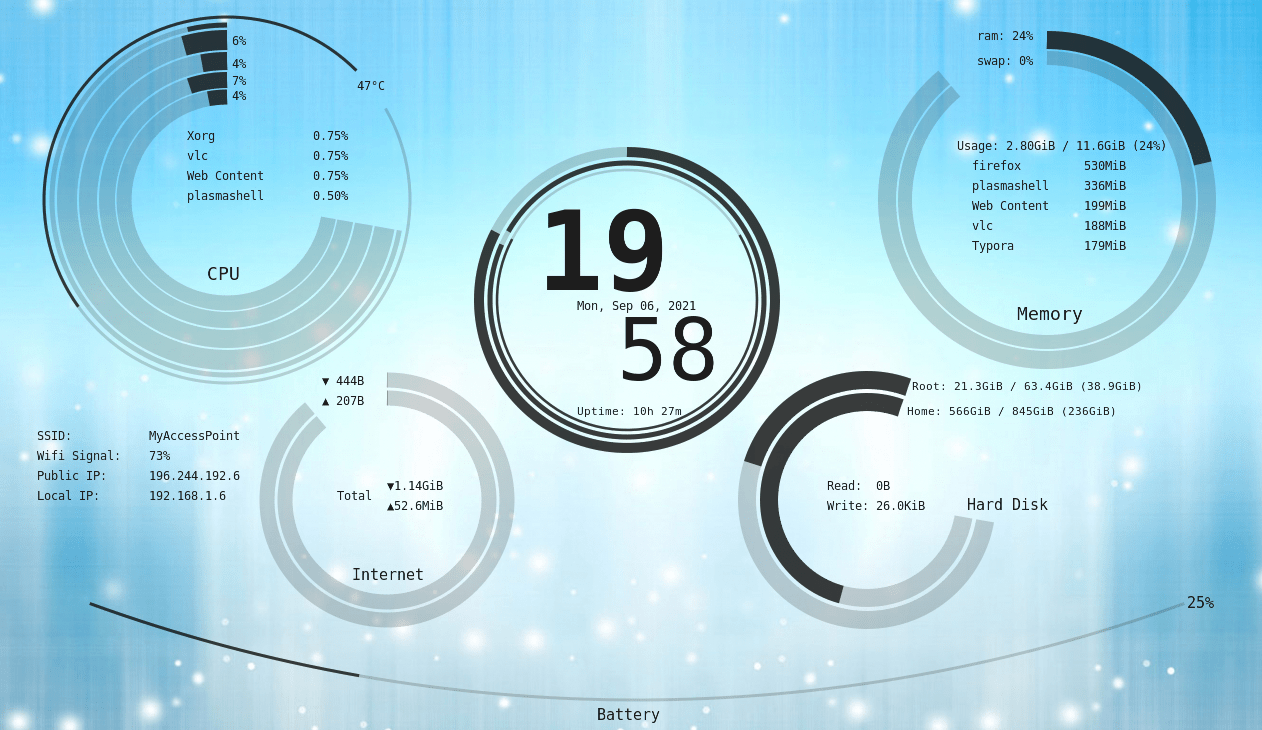
Theme depicting a circular shape is called a Lua. This is a slightly special program, and the download destination for the theme program is “/etc/conky/Program Theme/”.
Detailed explanation: Programming Lua
Folder Location, Download Theme Program File.
/Download/Program Theme/
Installation destination folder
/etc/conky/
Folder after installation
/etc/conky/Program Theme/
Copy
$ sudo cp -r /Download/Program Theme/ /etc/conky/
[sudo] User password:
Custom Conky
$ sudo nano /etc/conky/Program Theme/conky.conf
LUA Conky Autostart
Command: /etc/conky/Program Theme/Program.sh
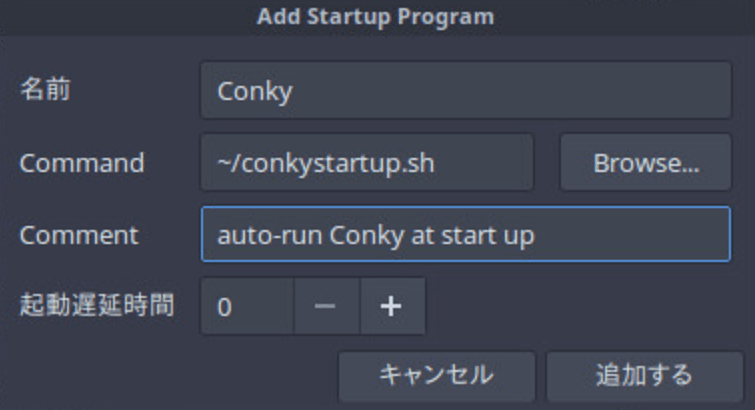
Conky theme Download
Search “conky“. Once you find your favorite theme, access it. Download the source code from the “file” on the screen.
・ Conky install
2. Synaptic search installation
“Conky all” search install
Gnome-look.org
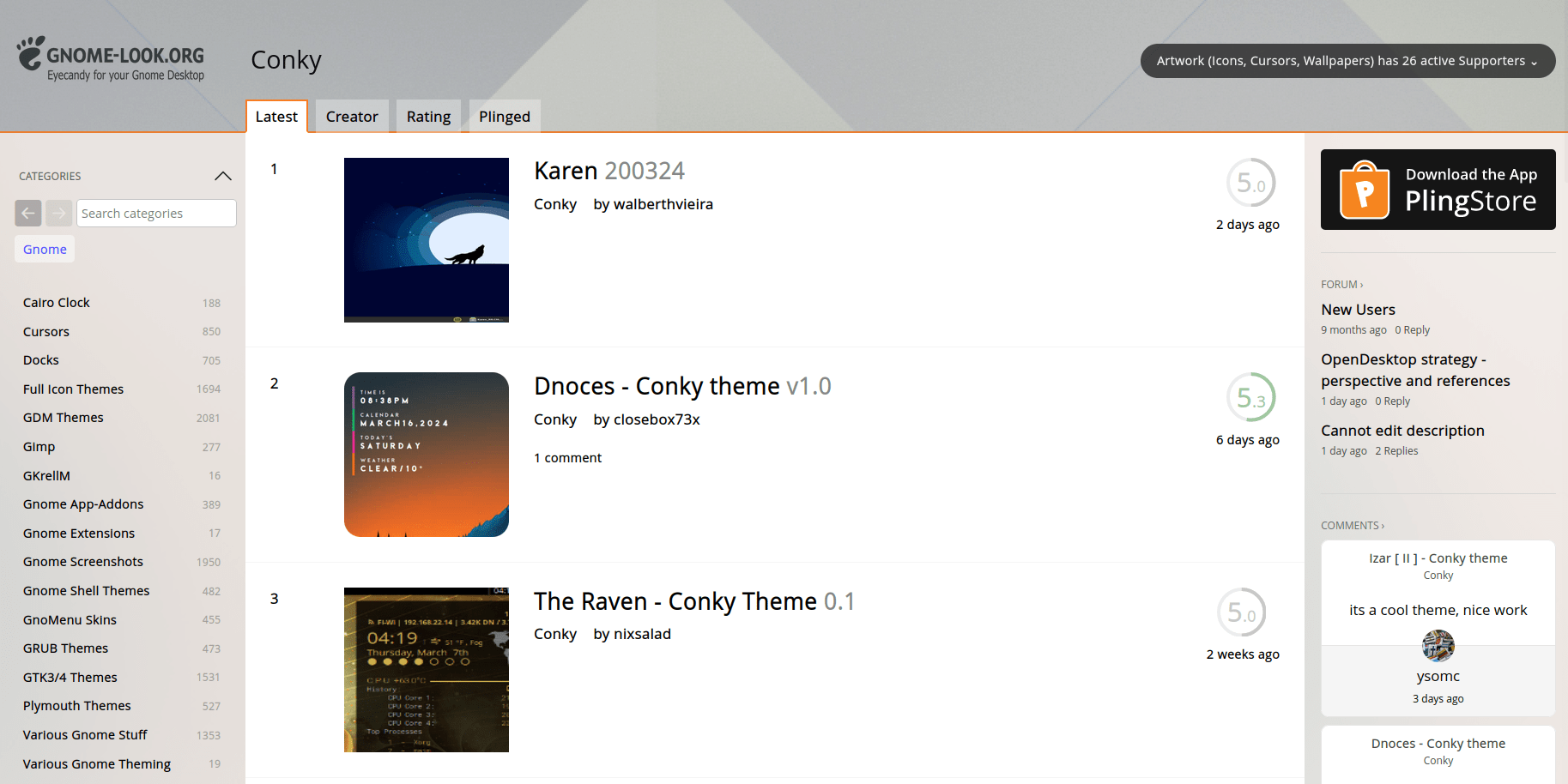

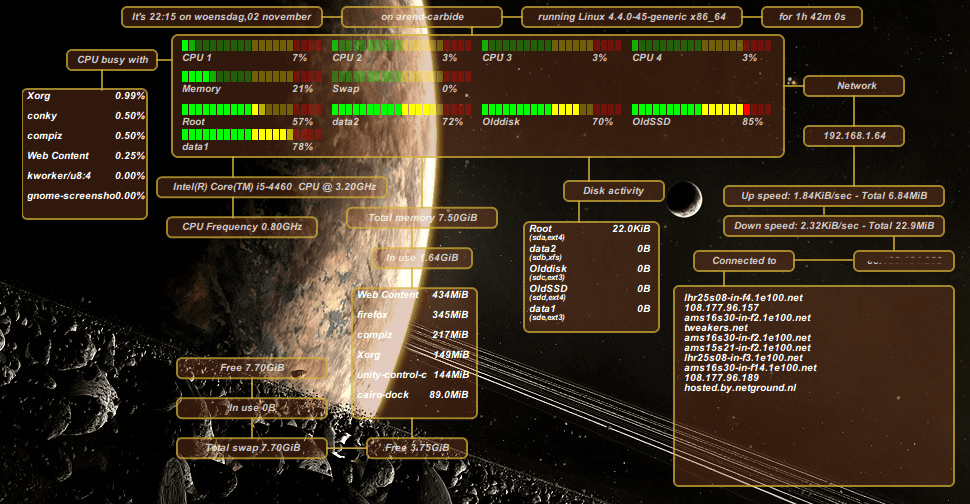
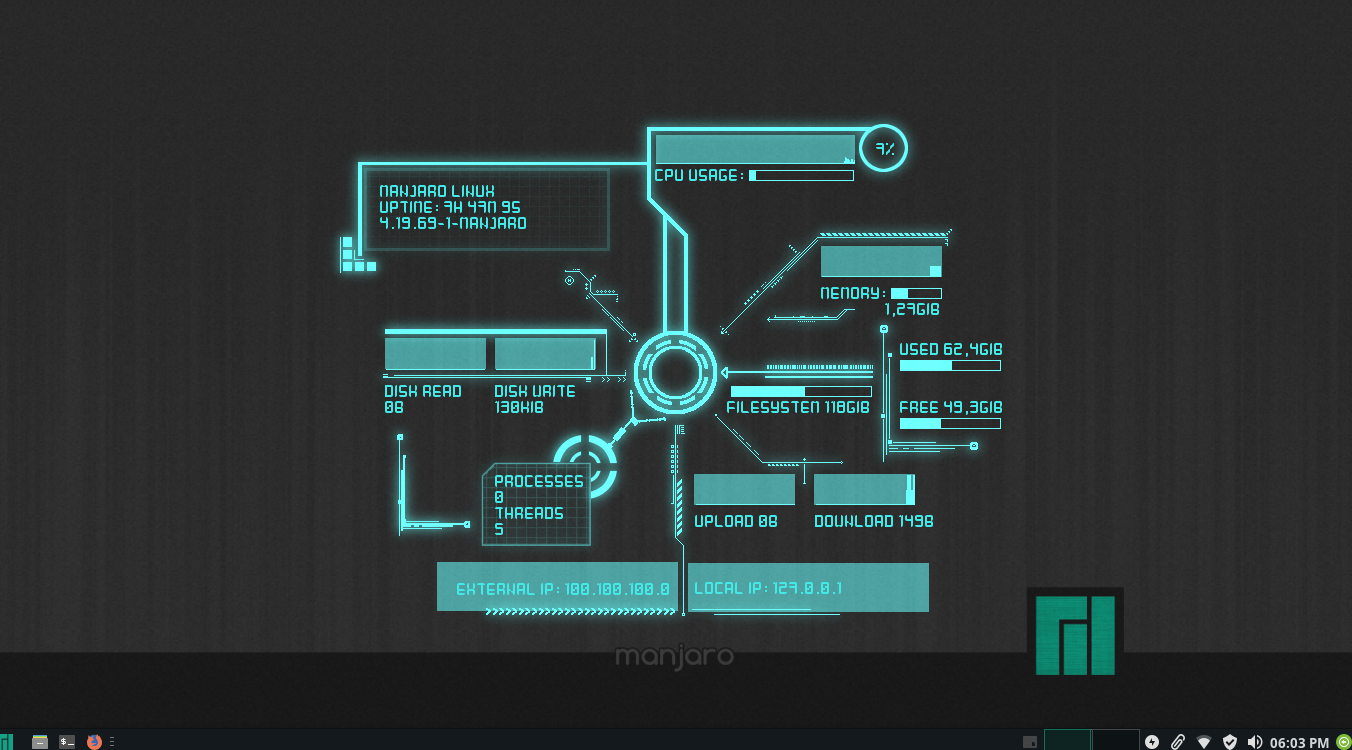

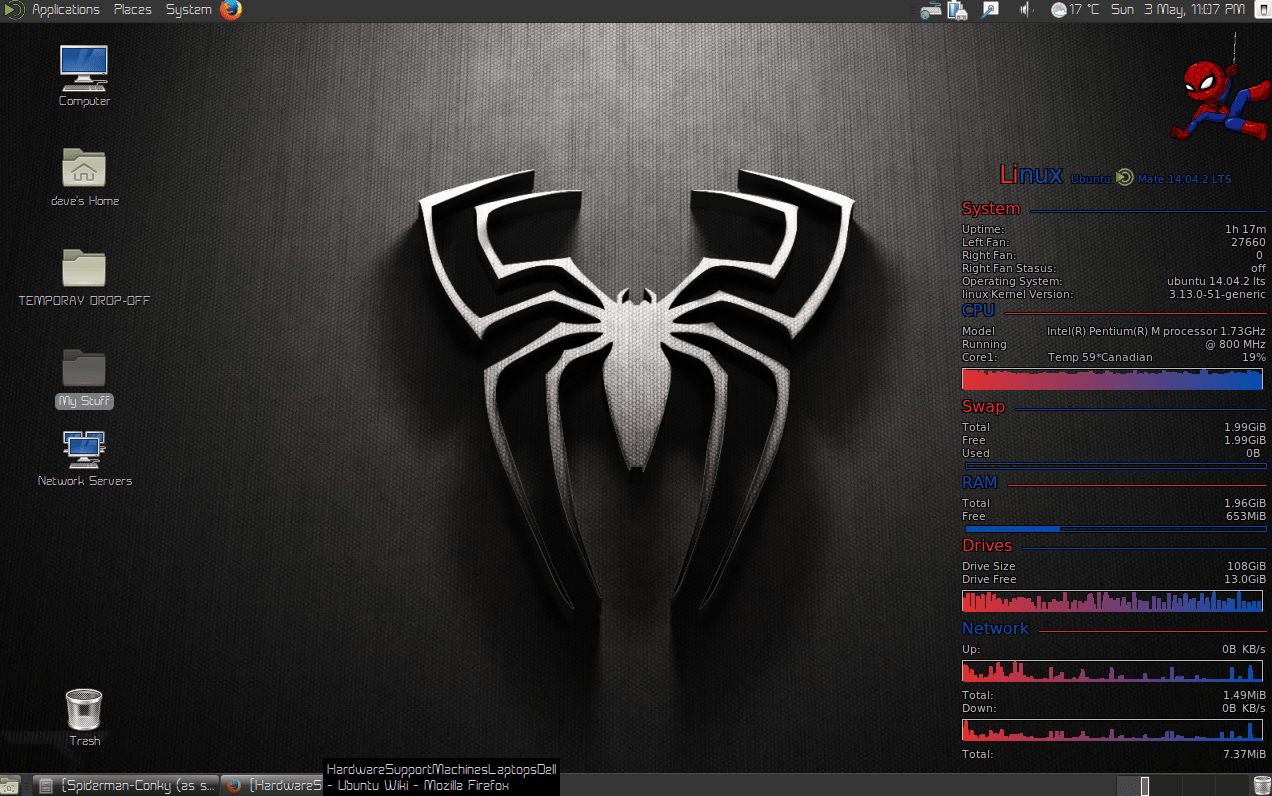
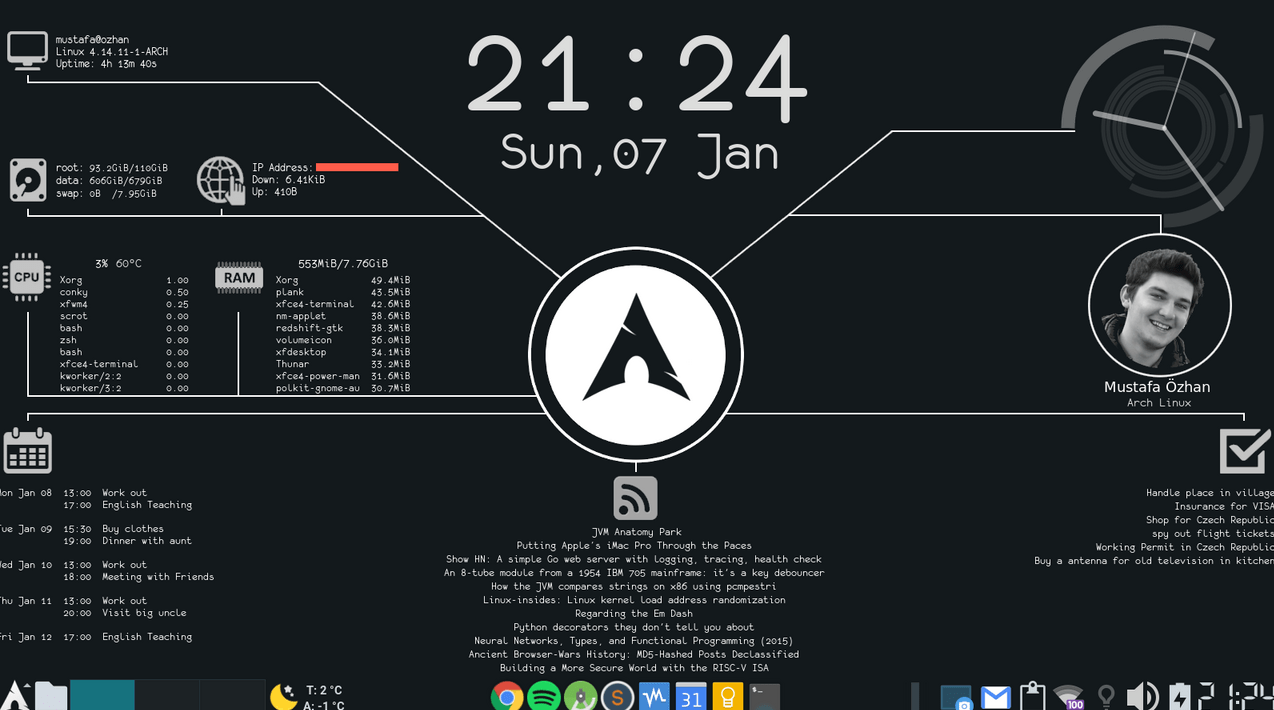
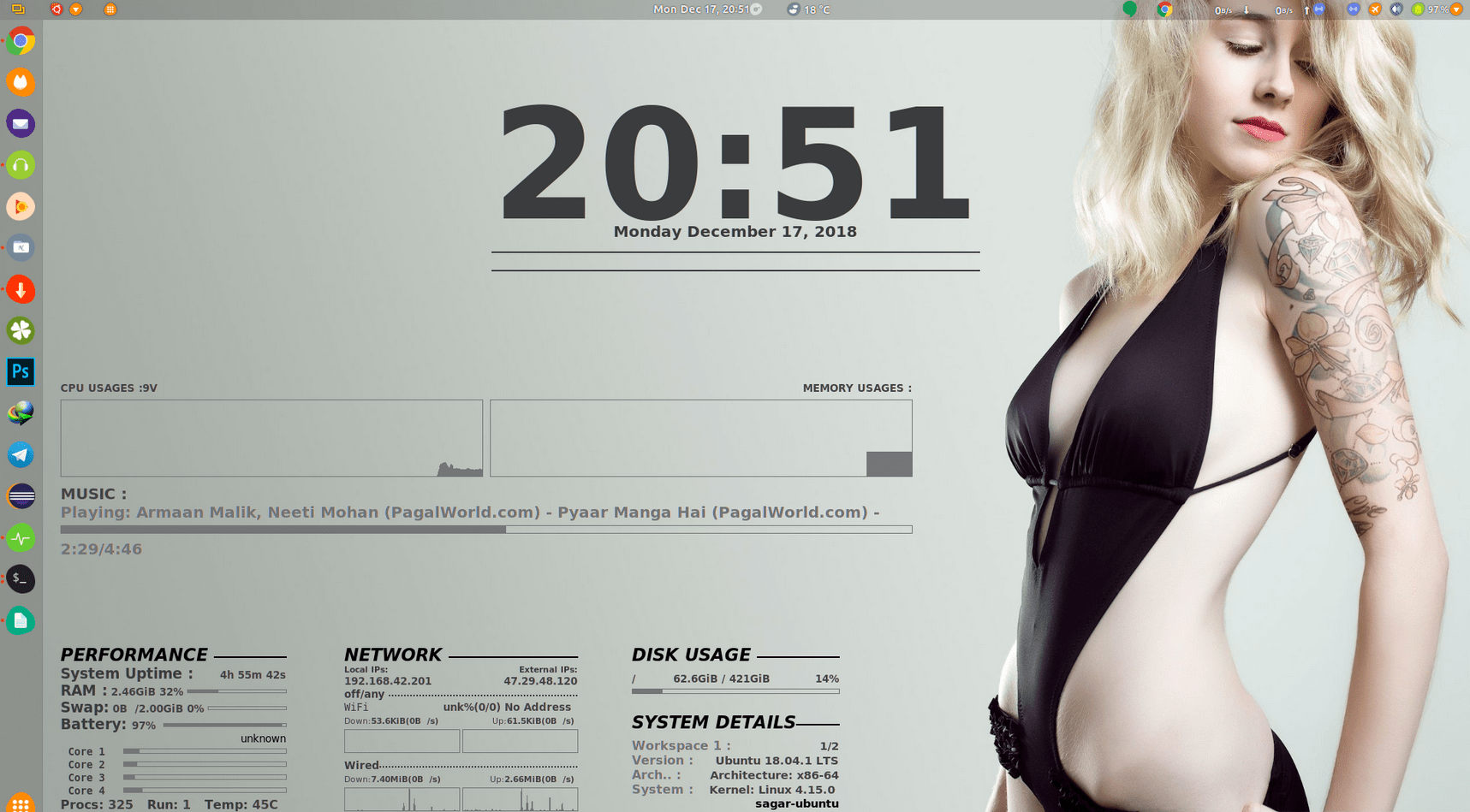
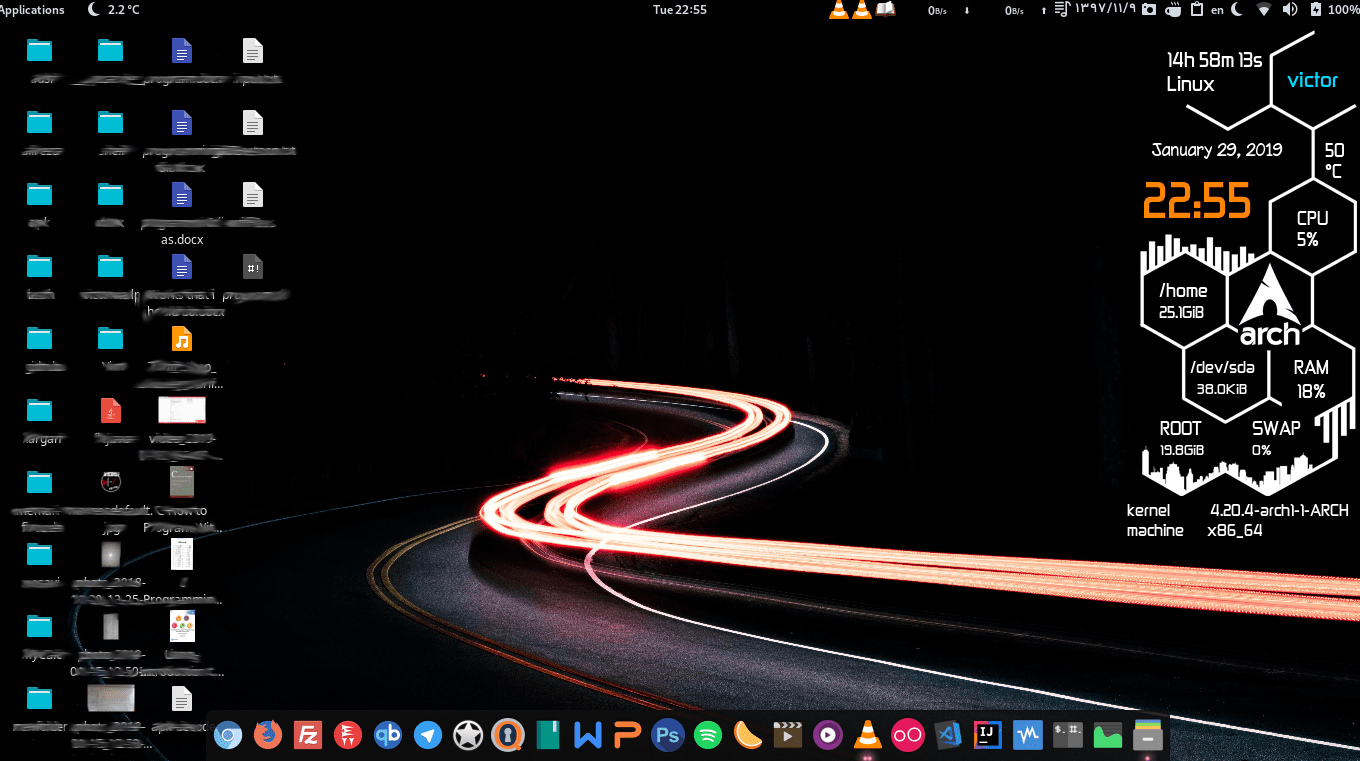
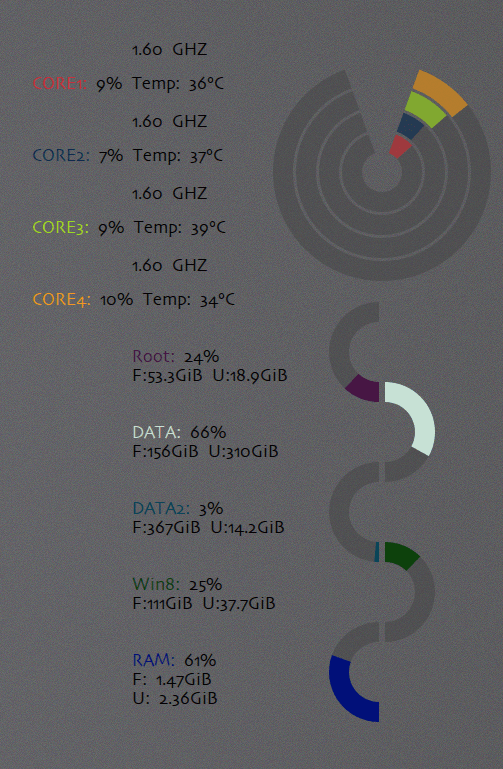

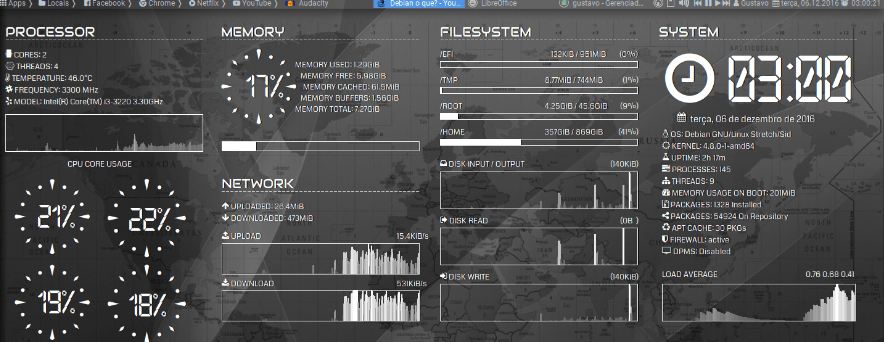
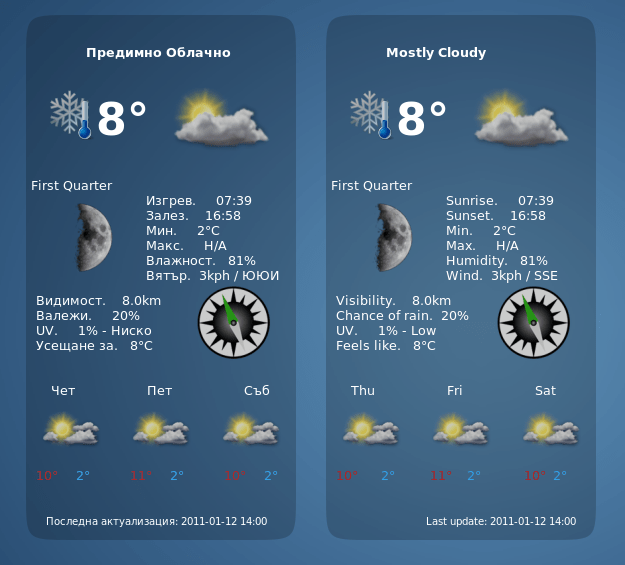
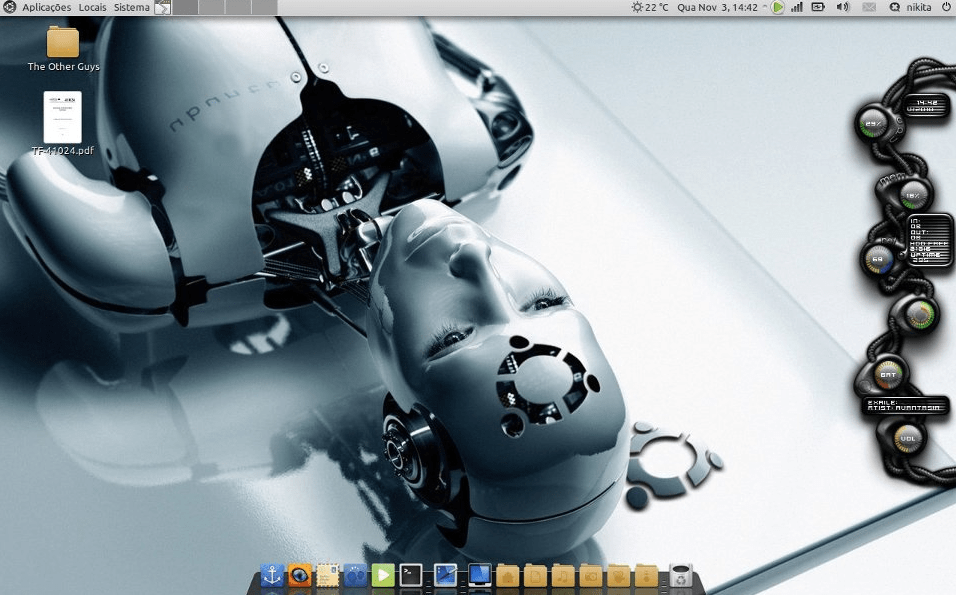
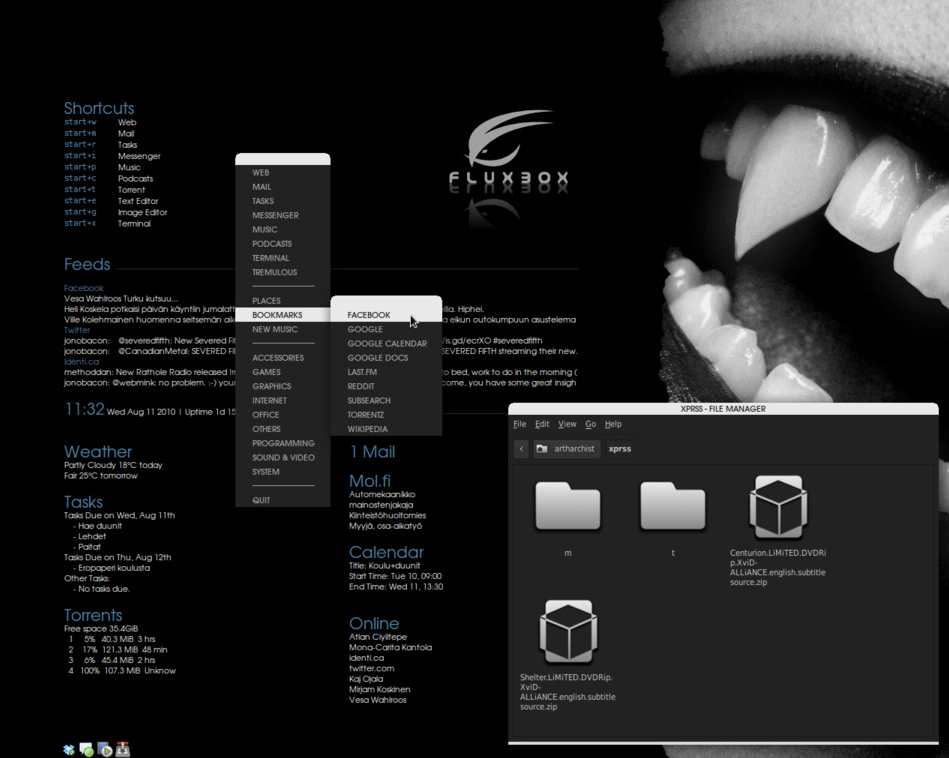
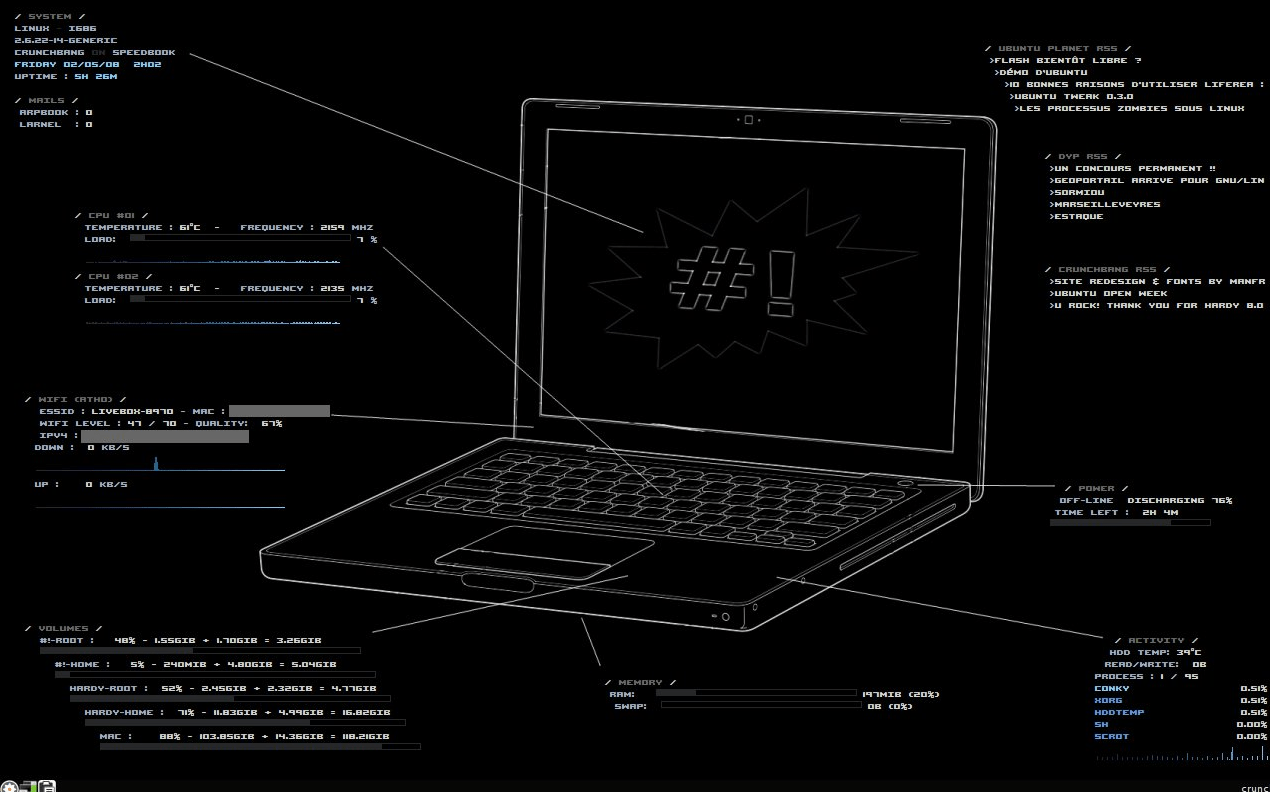
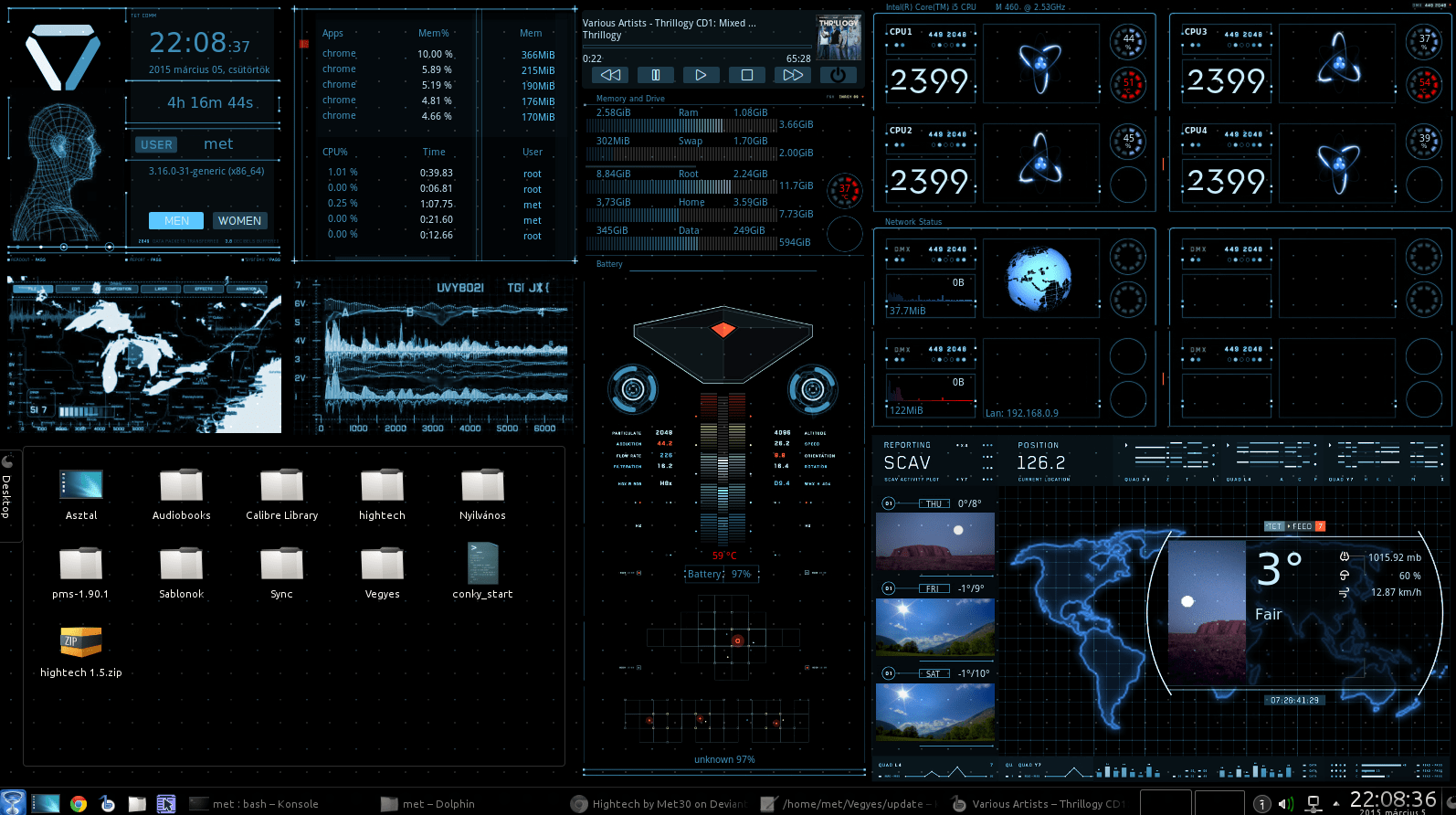
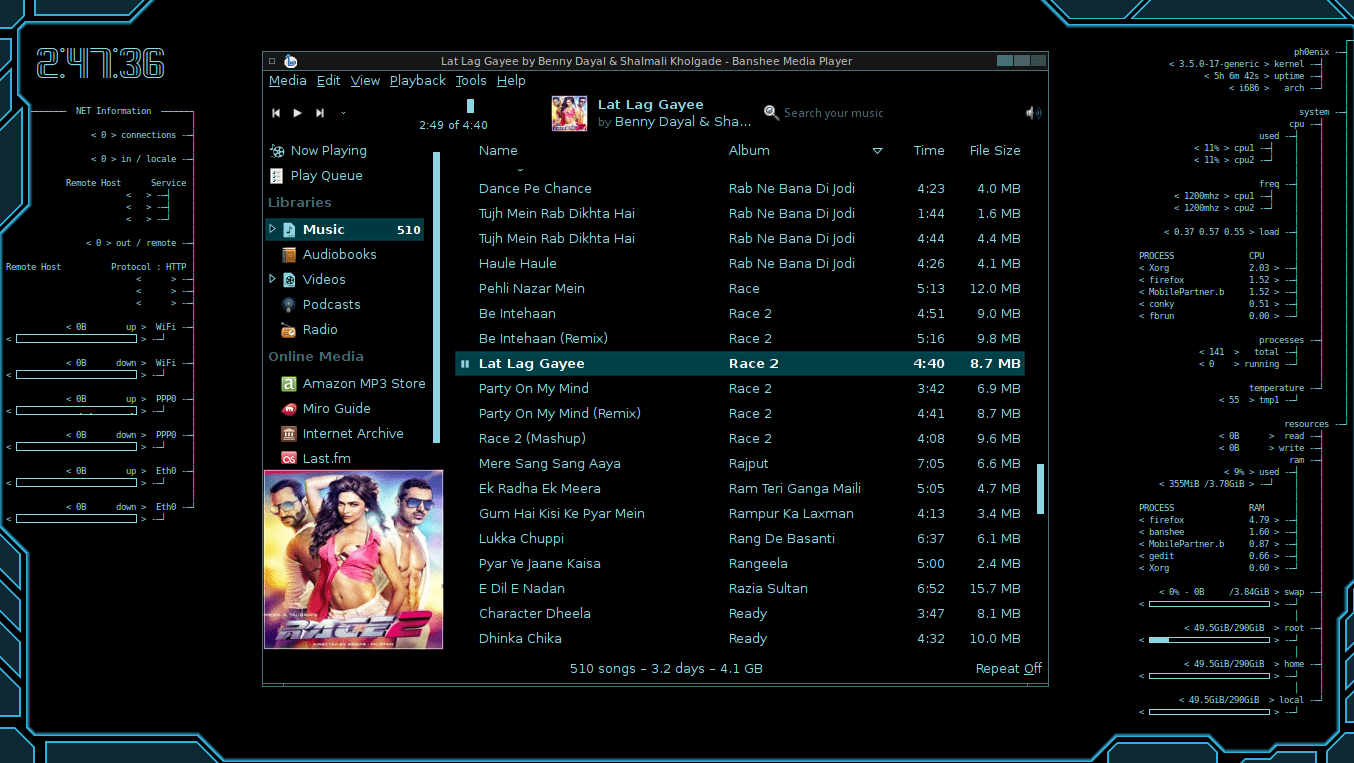
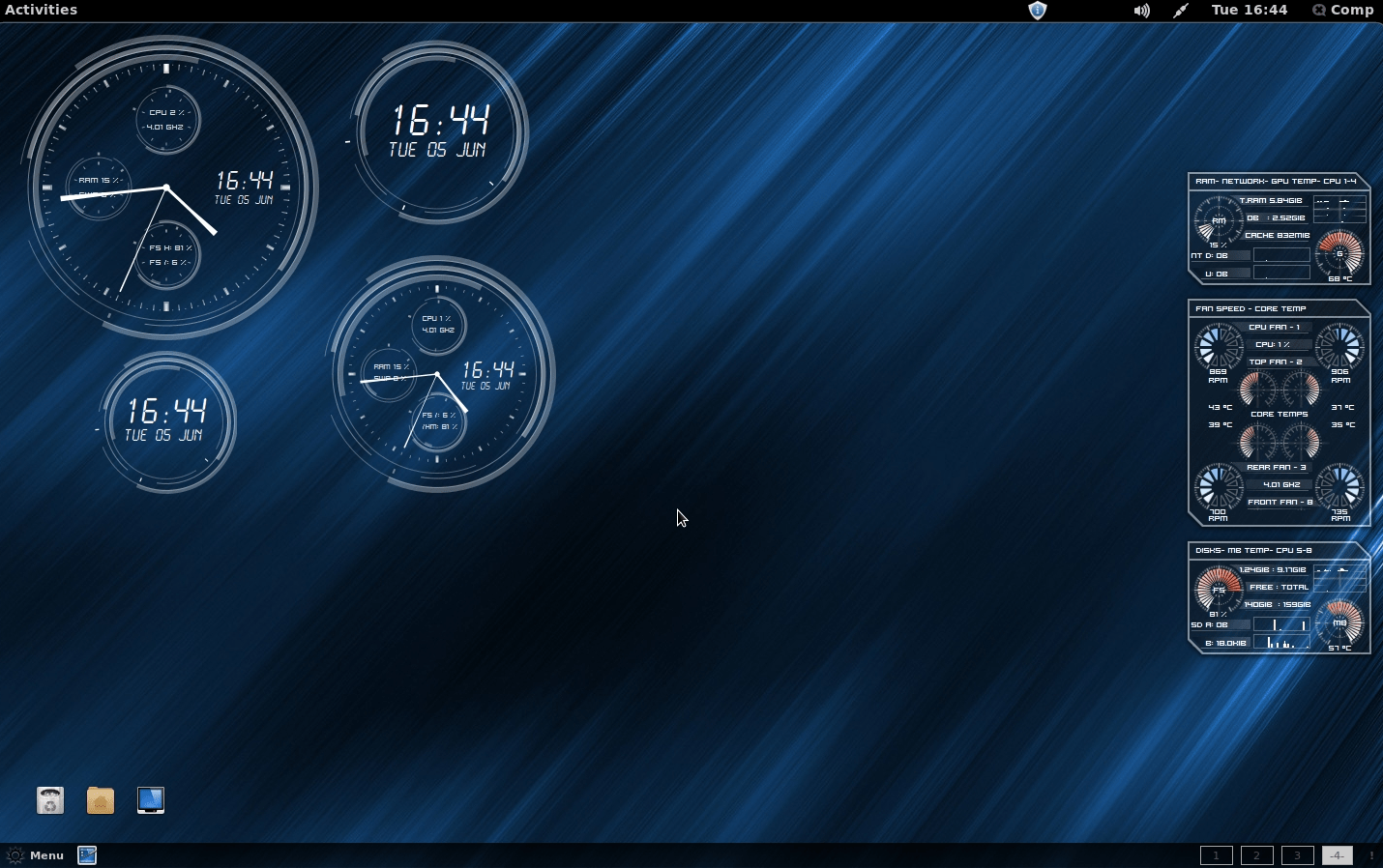
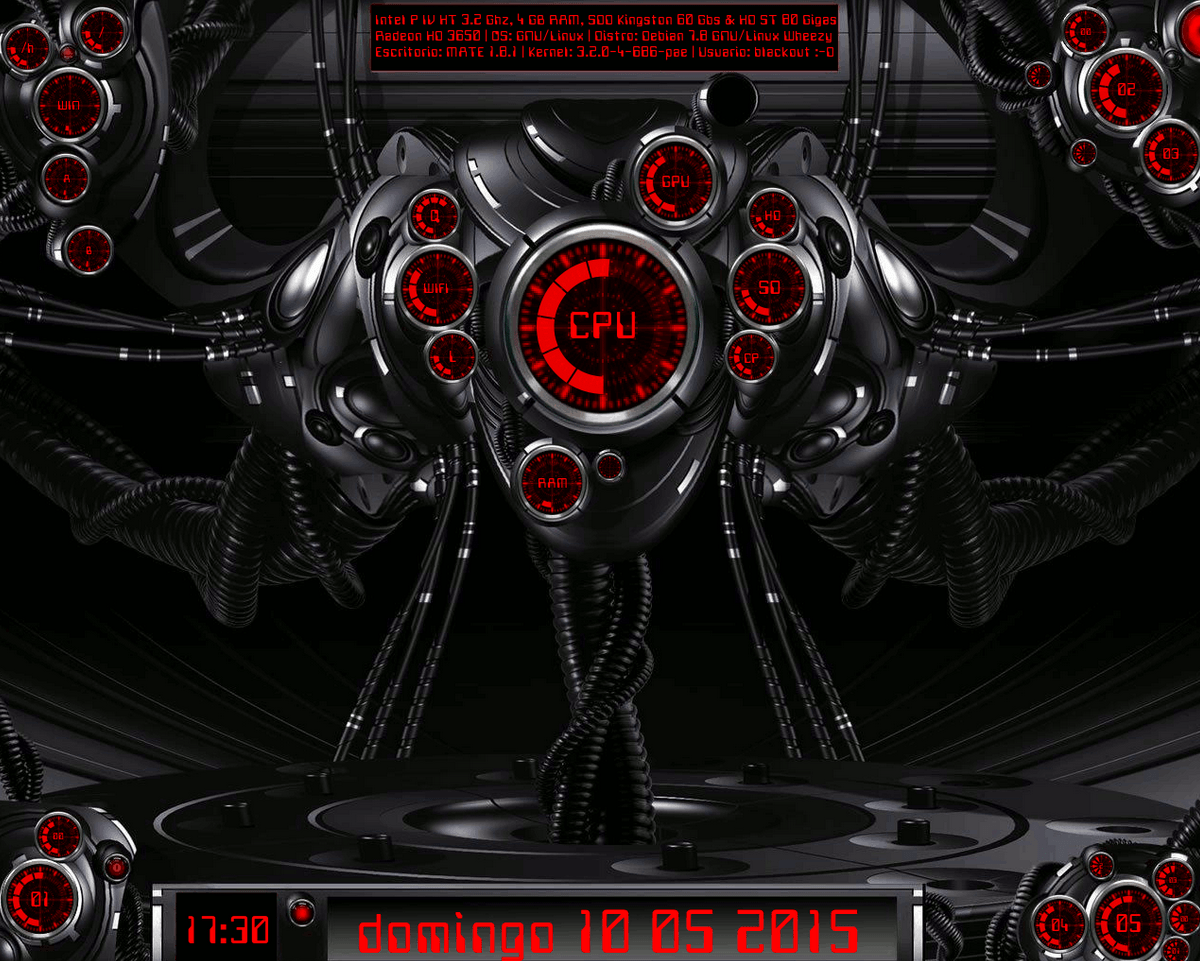
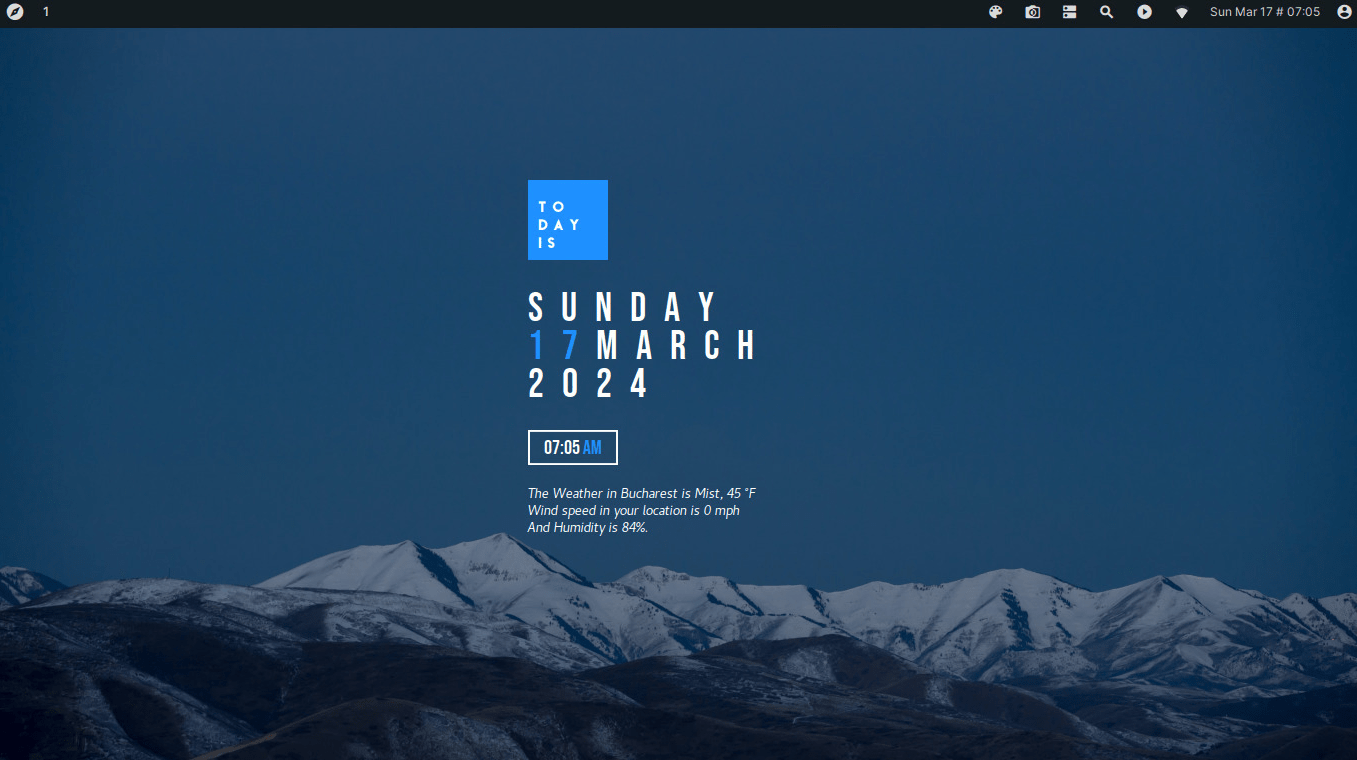
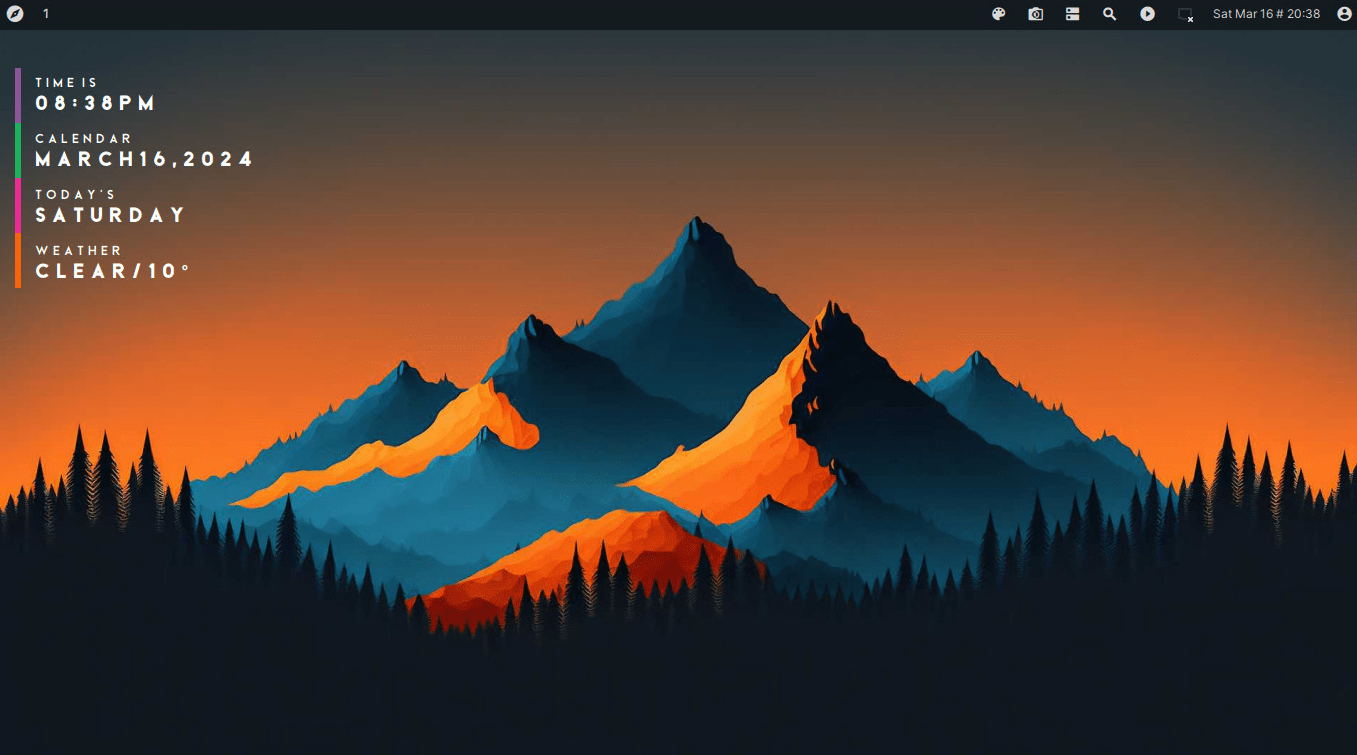
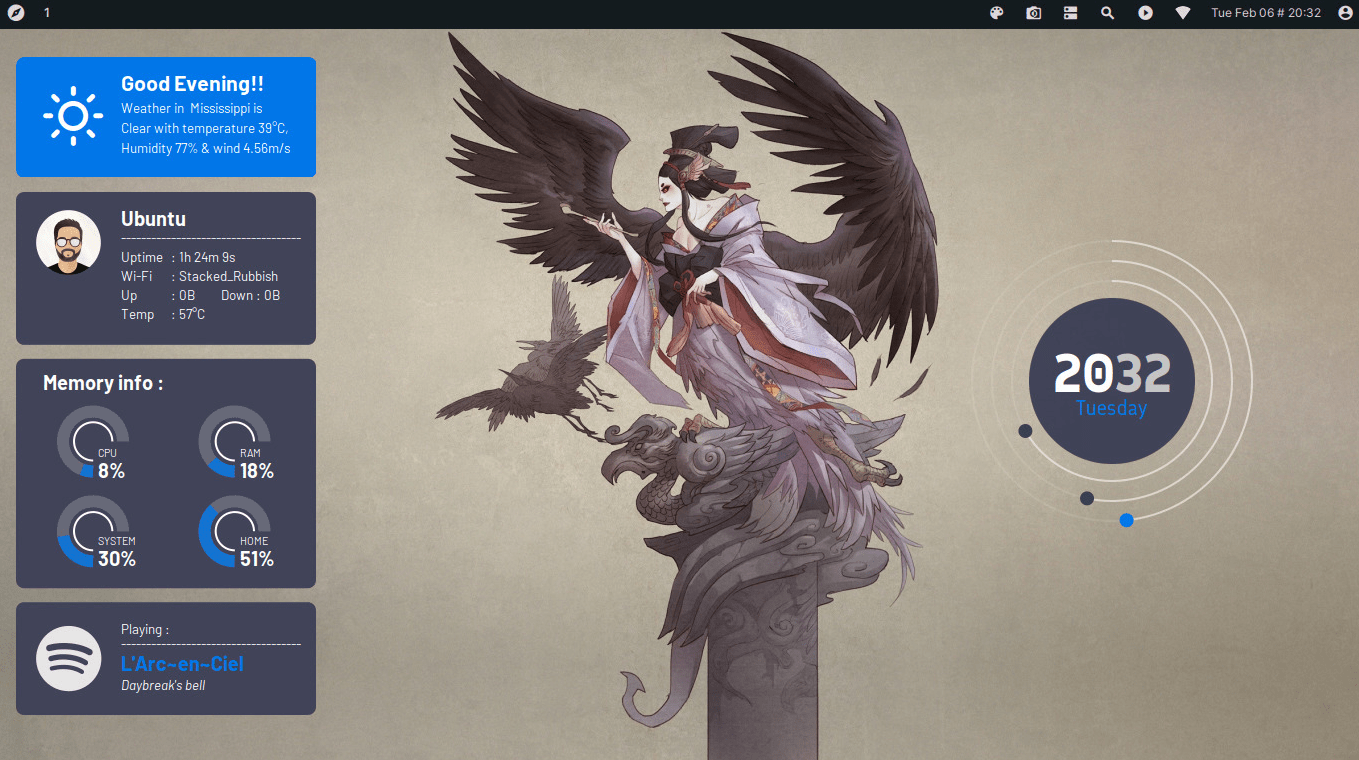
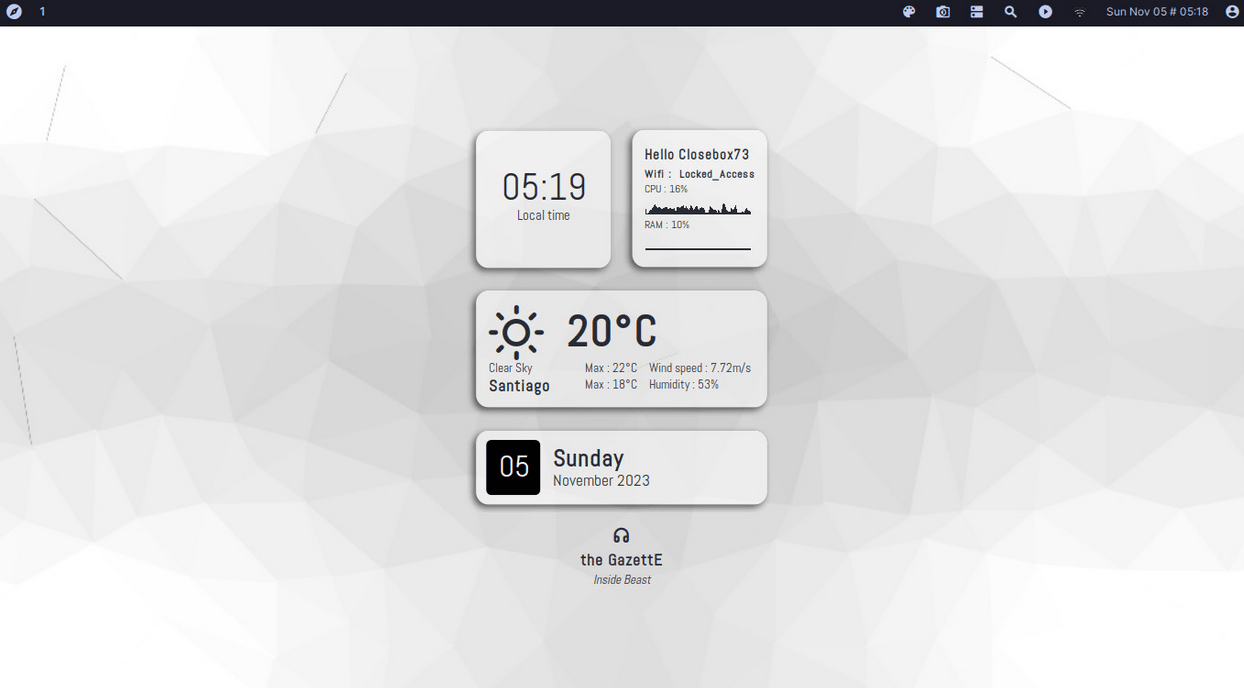
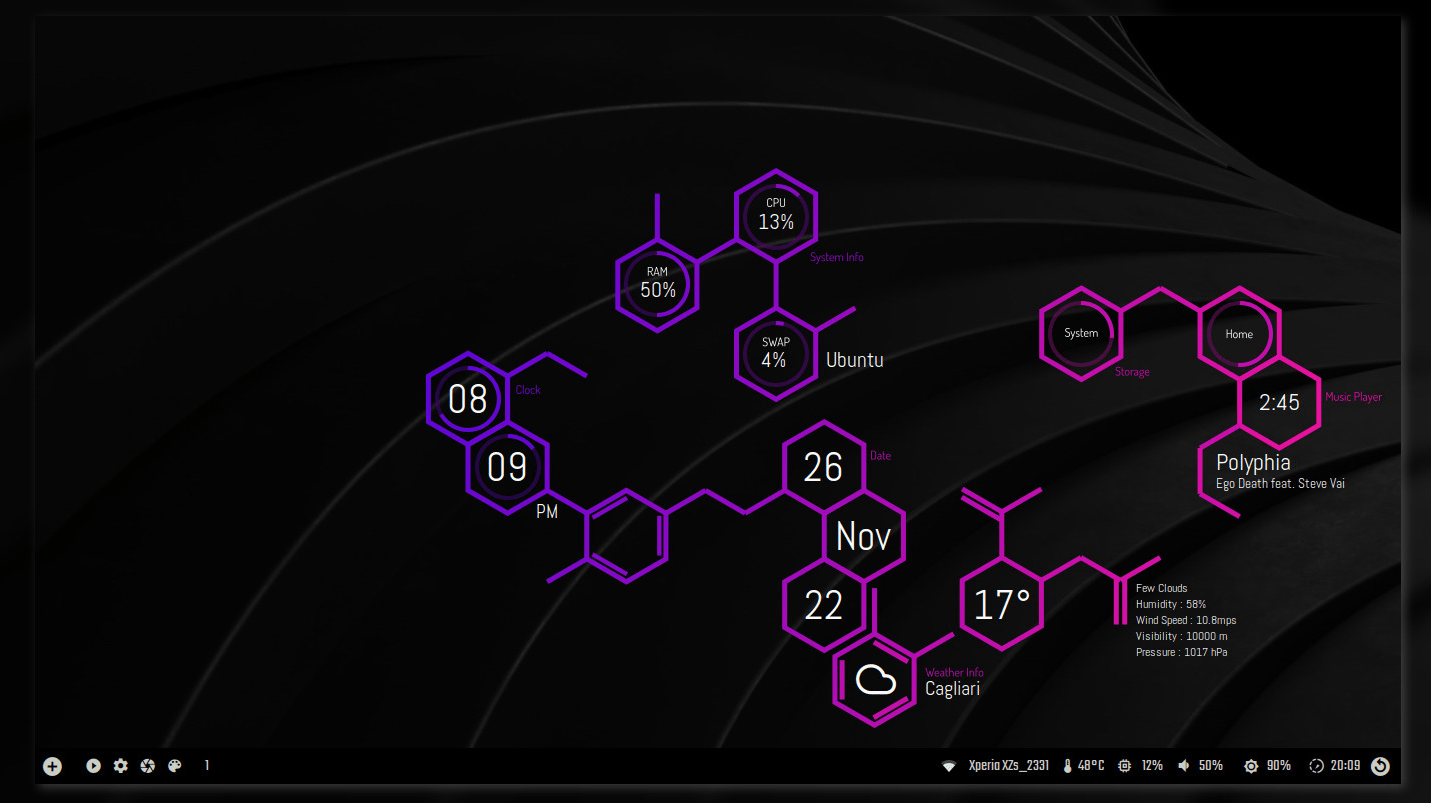
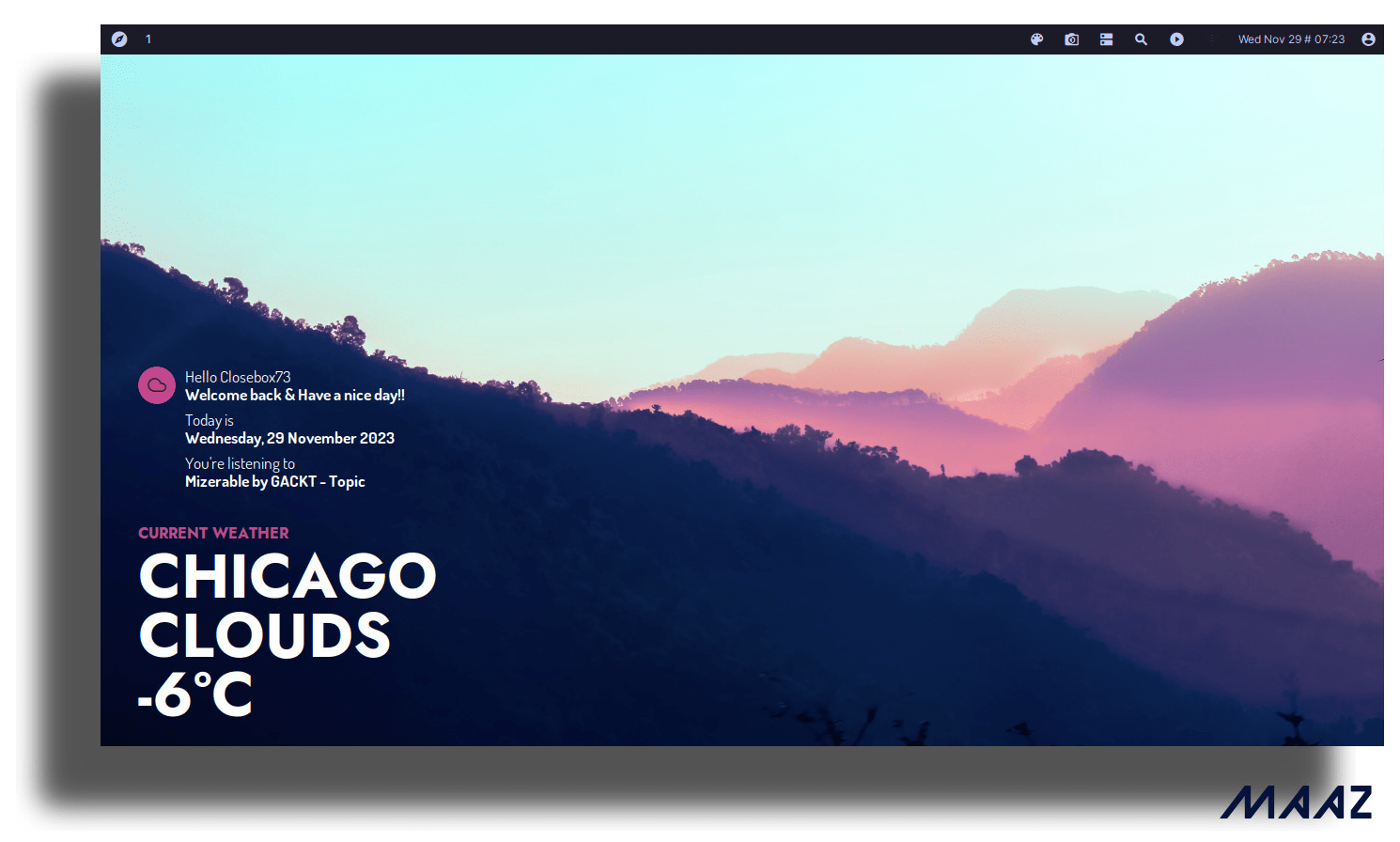
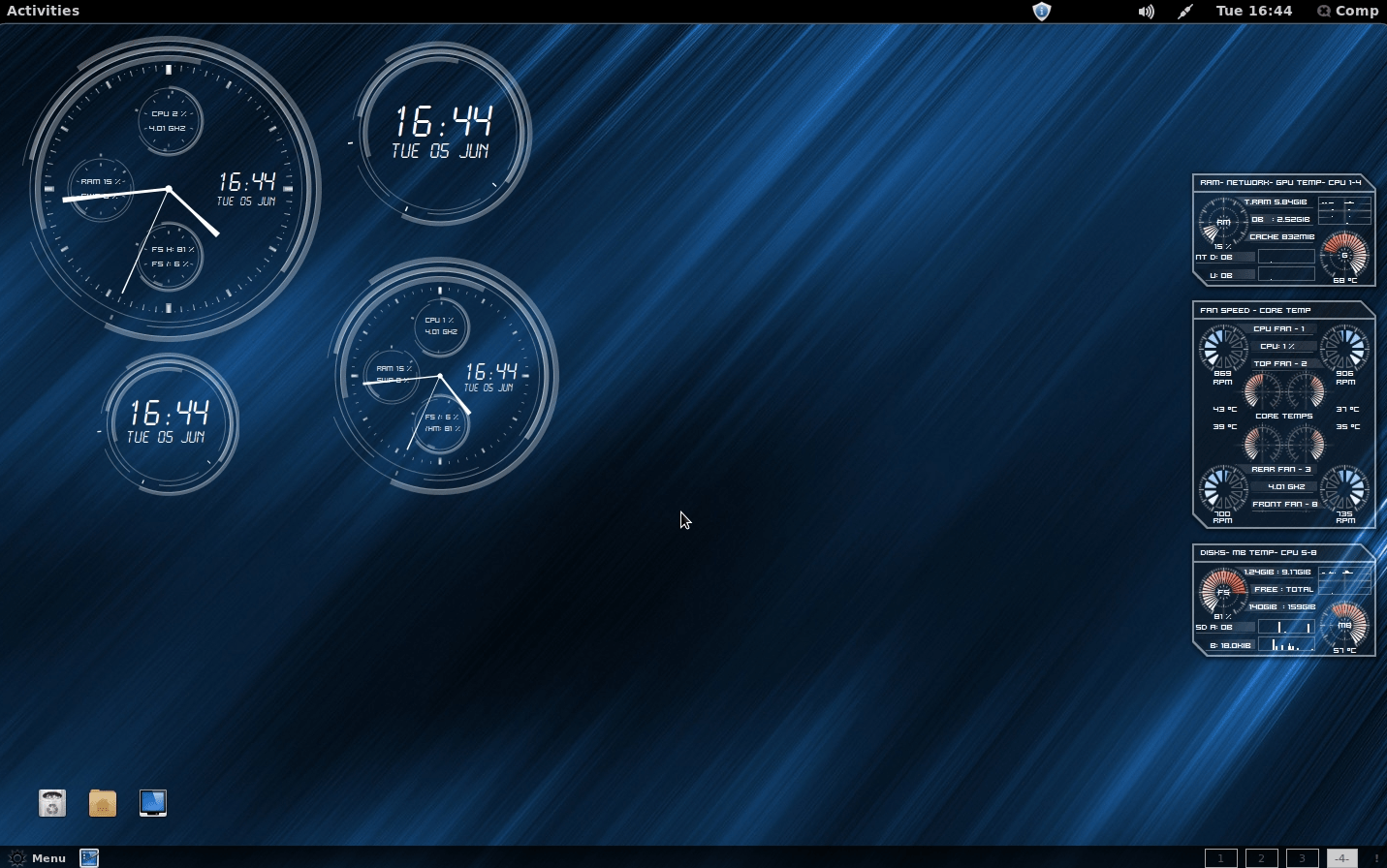
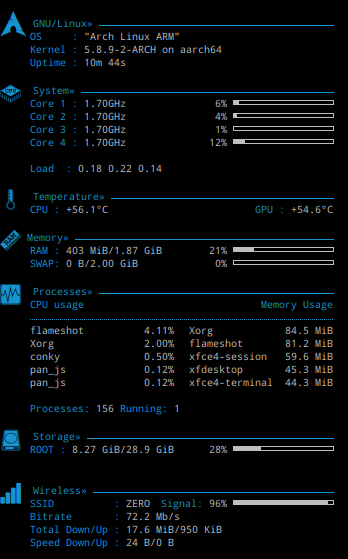
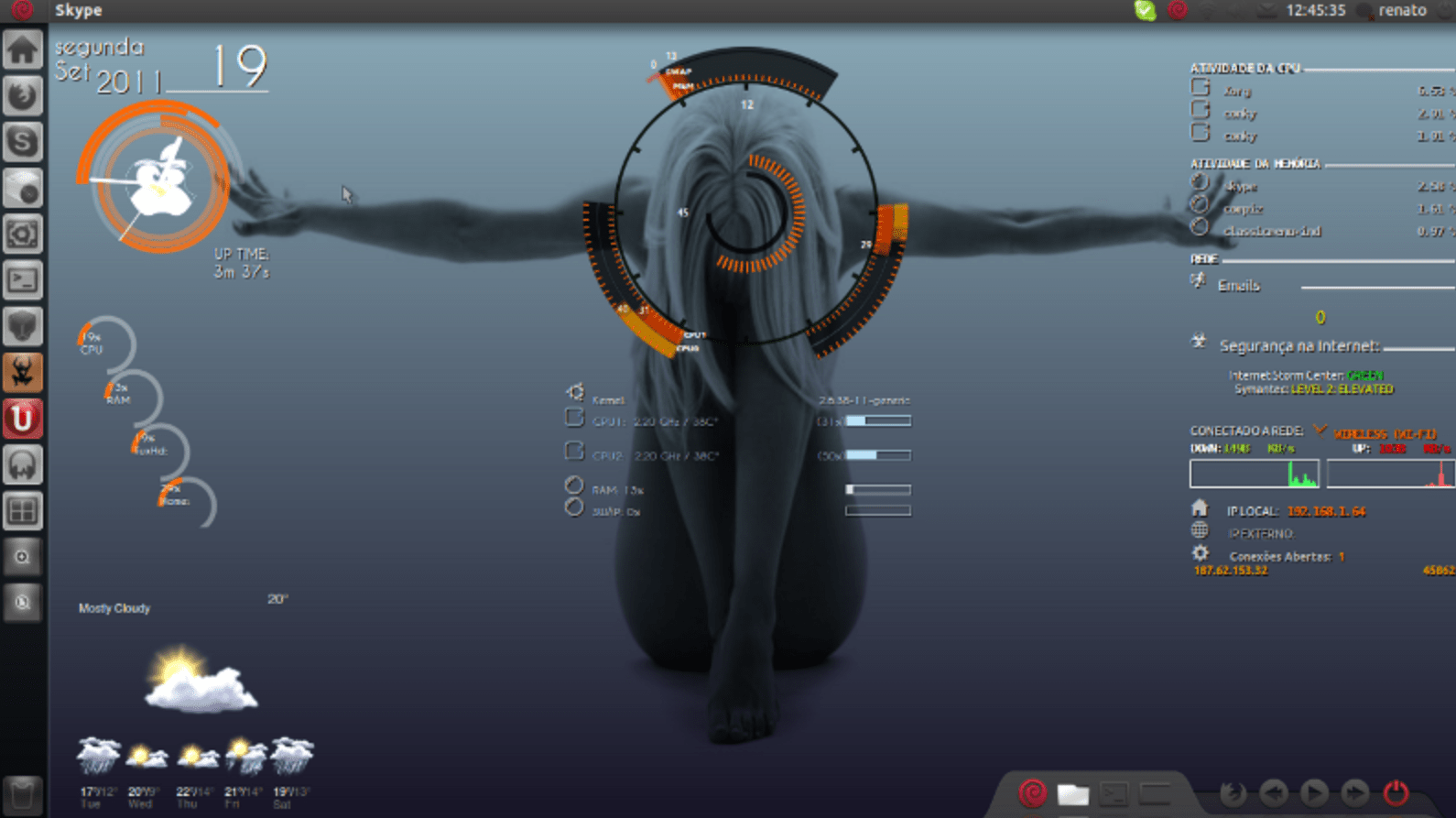
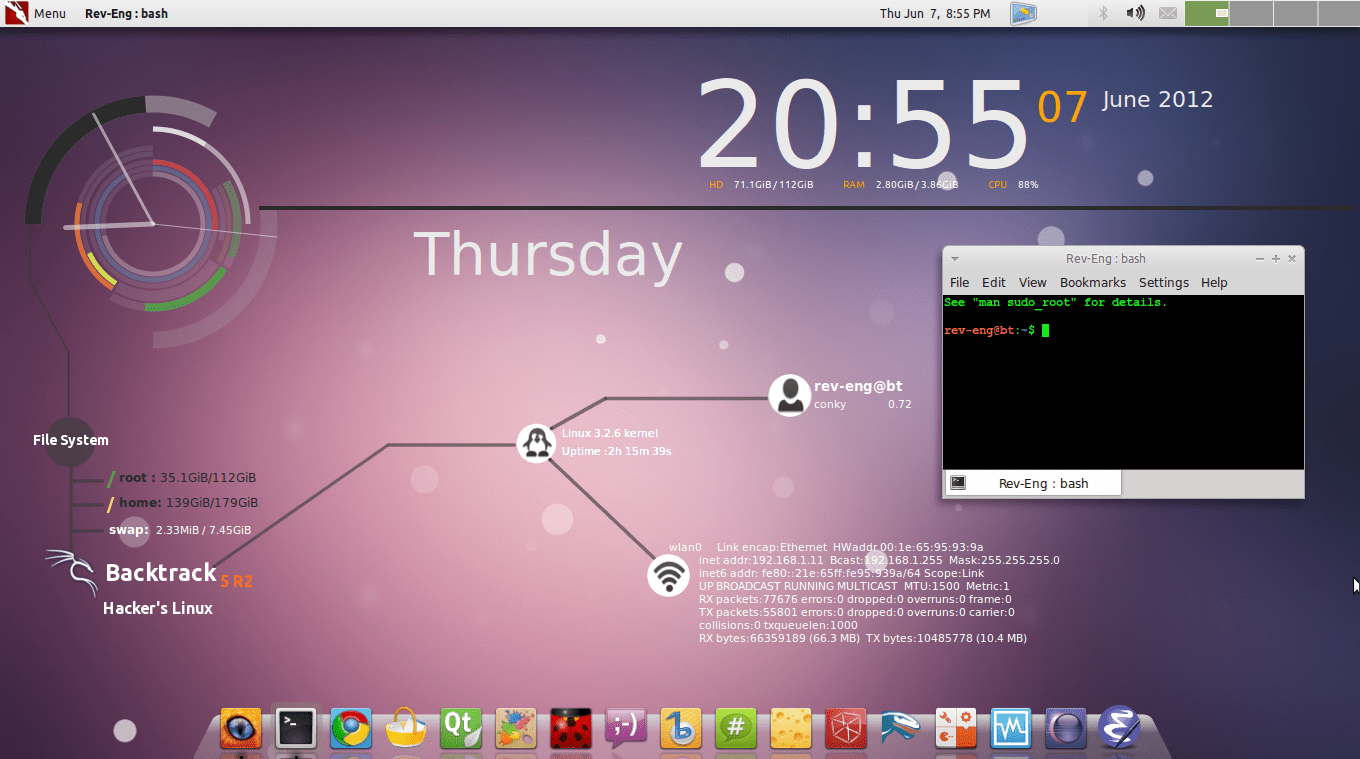
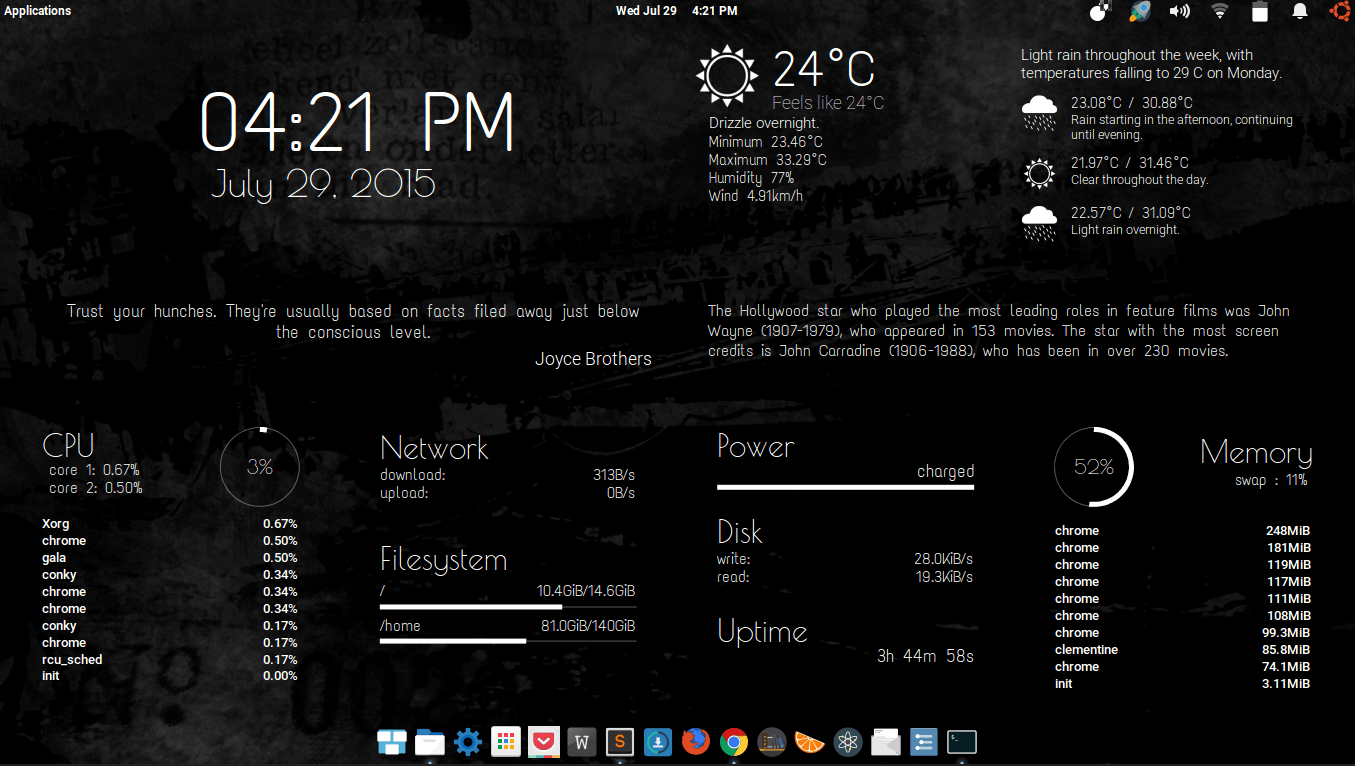
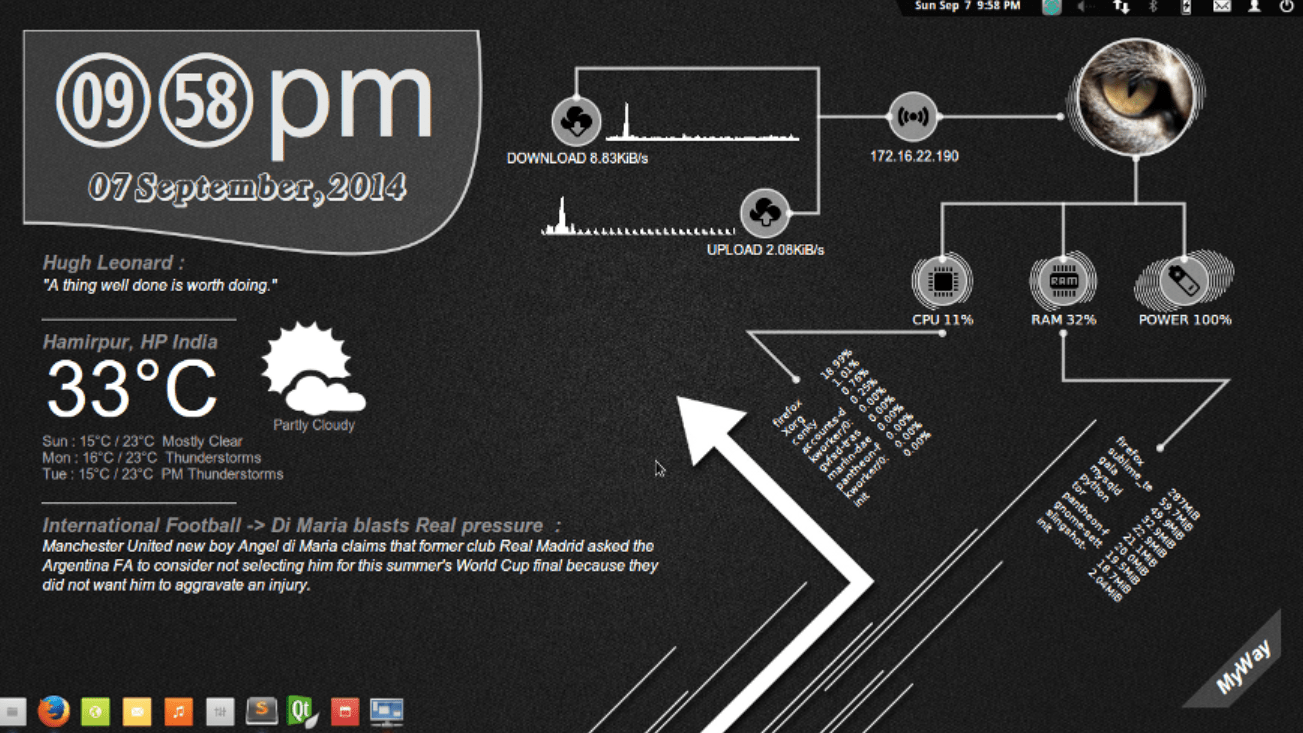
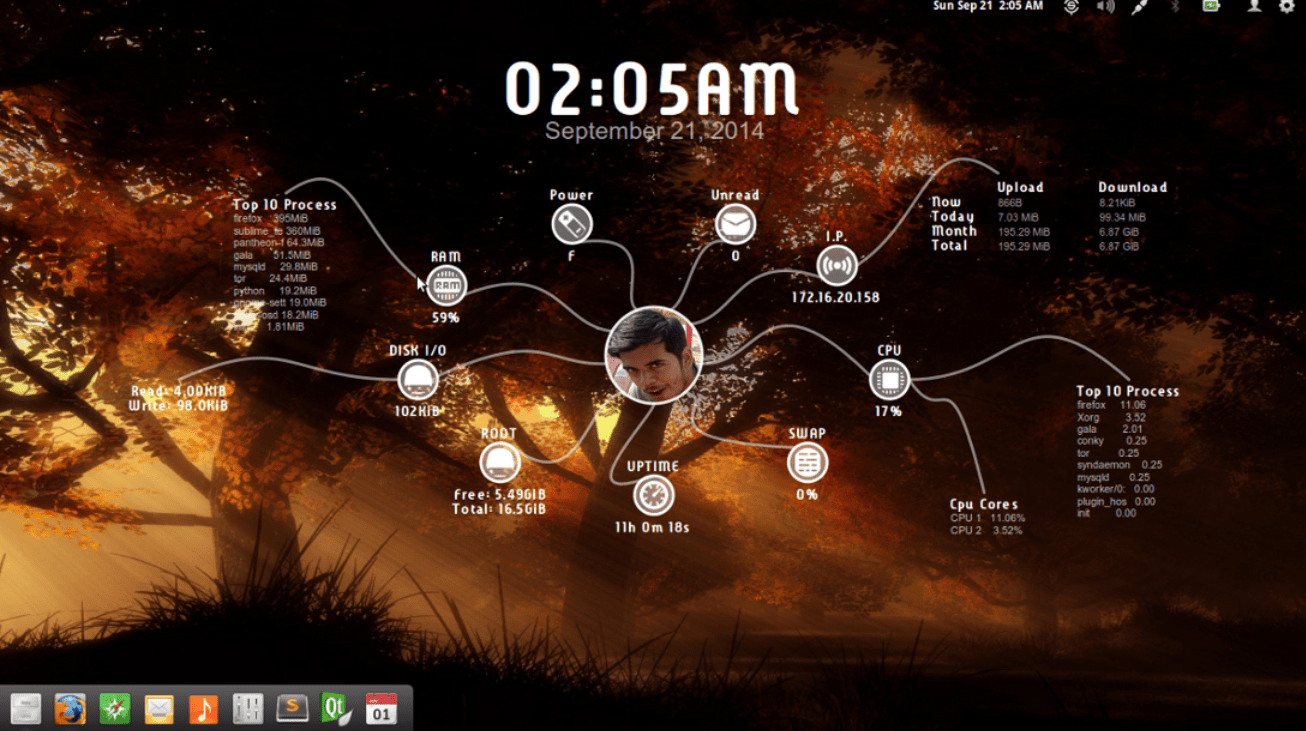
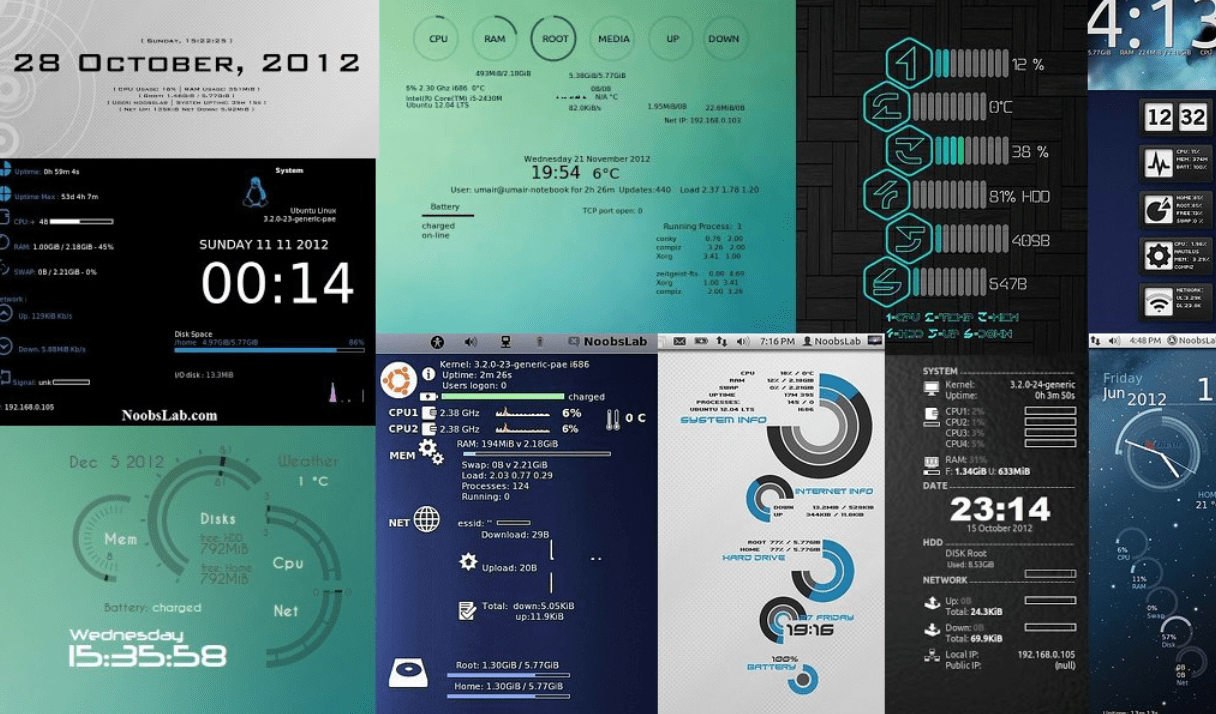


Program that I have been playing with on Linux since 1997, when the Sexy Spider website was launched. We are competing with art techniques from all over the world.
Custom Conky
$ sudo nano /etc/conky/conky.conf
・ Conky install
2. Synaptic search installation
“Conky all” search install
If you fail
Default Conky
Just copy and paste the source code and restore the default settings.
/etc/conky/conky_no_x11.conf

— Conky, a system monitor https://github.com/brndnmtthws/conky
—
— This configuration file is Lua code. You can write code in here, and it will
— execute when Conky loads. You can use it to generate your own advanced
— configurations.
—
— Try this (remove the `–`):
—
— print(“Loading Conky config”)
—
— For more on Lua, see:
— https://www.lua.org/pil/contents.html
conky.config = {
background = false,
cpu_avg_samples = 2,
net_avg_samples = 2,
no_buffers = true,
out_to_stderr = false,
update_interval = 1.0,
uppercase = false,
use_spacer = ‘none’,
};
conky.text =
[[${scroll 16 $nodename – $sysname $kernel on $machine | }
Uptime: $uptime
Frequency (in MHz): $freq
Frequency (in GHz): $freq_g
RAM Usage: $mem/$memmax – $memperc% ${membar 4}
Swap Usage: $swap/$swapmax – $swapperc% ${swapbar 4}
CPU Usage: $cpu% ${cpubar 4}
Processes: $processes Running: $running_processes
File systems:
/ ${fs_used /}/${fs_size /} ${fs_bar 6 /}
Networking:
Up: ${upspeed} – Down: ${downspeed}
Name PID CPU% MEM%
${top name 1} ${top pid 1} ${top cpu 1} ${top mem 1}
${top name 2} ${top pid 2} ${top cpu 2} ${top mem 2}
${top name 3} ${top pid 3} ${top cpu 3} ${top mem 3}
${top name 4} ${top pid 4} ${top cpu 4} ${top mem 4}
]];
$ sudo nano /etc/conky/conky.conf
Conky Script Code
Variable/Description
background: Run in background
use_xft: Use font
xftfont: specify font
xftalpha: Fine-tune font display format
update_interval: Specify update timing
total_run_times: Specifies how many times to update Conky before quitting. 0 to run indefinitely.
own_window: Single window presence/absence
own_window_type: Specify the single window type
own_window_transparent: Make a single window transparent
own_window_hints: Configure each single window setting
own_window_colour: Specify the background color of the window. If own_window_transparent: is not set to true, specify the color here.
own_window_argb_visual: Specify transparent display
own_window_argb_value: Specify the degree of transparency
out_to_console: Presence of standard output (message)
out_to_stderr: Presence of standard output (error)
double_buffer: suppress display flickering
minimum_size: Minimum size of the window
maximum_width: Maximum width of the window
draw_shades: Add drop shadow effect to text
draw_outline: Add outline effect to text
draw_borders: Display Conky borders
draw_graph_borders: Make borders graphic
default_color: Basic color settings
default_shade_color: Set the color of the drop shadow effect
default_outline_color: Setting the color of the outline effect
alignment: basic display position
gap_x: Specify display position
gap_y: Specify display position
no_buffers: Whether to use file system buffers
uppercase: uppercase a string
cpu_avg_samples: CPU sampling number
net_avg_samples: Network sampling number
override_utf8_locale: Set the font character code to utf-8
use_spacer: Adjust character position when using a specific font
show_graph_range: Show graph width
show_graph_scale: Show graph memory
border_inner_margin: Margin between text and border
border_outer_margin: window edge and border margin
default_bar_height: Basic height of the bar
default_bar_width: Basic width of the bar
default_gauge_height: Basic height of the gauge
default_gauge_width: basic width of the gauge
draw_graph_borders: Specify whether to draw graph borders
short_units: shorten units
Keywords/Summary
acpiakadapter: Display power adapter status
acpifan: Display cooling fan status
acpitemp: Display system temperature information
battery: Display remaining battery power
buggers: show memory buffer size
cached: Display memory cache size
color: Specify the font color
cpu: Display CPU usage as a percentage
cpubar: Display CPU usage as a graph
downspeed: Display download speed in KB
downspeedf: Display download speed in KB to one decimal place
exec: show shell commands being executed
execi: Similar to exec, but allows interval settings
fs_bar: Display file system usage as a graph
fs_free: Display available free space on a file system
fs_free_perc: Display the free space of the file system as a percentage
fs_size: Display the total capacity of the file system
fs_used: Display file system usage
hr: show separator line
i2c: Display information for I2C devices
kernel: show kernel version
loadavg: Display system load average
machine: show machine architecture
mails: Display number of mails in mail spool
mem: Display memory usage
membar: Display memory usage as a graph
memmax: Display the total amount of memory installed
memperc: Display memory usage as a percentage
new_mails: Display number of unread items in mail spool
nodename: Display computer name
outlinecolor: change the outline color
pre_exec: refer to the previously executed shell command
processes: Display all process counts including sleep
running_processes: Displays the number of running processes
shadecolor: change the text shade color
stippled_hr: Display the separator line as a dotted line
swapbar: Display SWAP usage as a graph
swap: Display SWAP usage
swapmax: Display the total amount of SWAP available
swapperc: Display SWAP usage as a percentage
sysname: Display system name
temp1: Display the temperature of I2C temperature sensor #1
temp2: Display the temperature of I2C temperature sensor #2
time: Display time according to locale
totaldown: Display total download amount
totalup: Display total upload amount
upspeed: Display upload speed in KB
upspeedf: Display upload speed in KB with 1 decimal place
uptime: Display operating time
uptime_short: Display drive time in short format
Variable/Description
alignr: align to the right
alignc: center
goto: Display the next element a value away from the left of the Conky window
offset: Shift the text to the right by the value. Passing a negative number shifts it to the left.
voffset: Don’t shift down by the value in the vertical direction. If you pass a negative number, it will overlap.
Custom Conky
$ sudo nano /etc/conky/conky.conf
・ Conky install
2. Synaptic search installation
“Conky all” search install
If you fail
Default Conky
Just copy and paste the source code and restore the default settings.
/etc/conky/conky_no_x11.conf

・ Wallpaper
It would be interesting to change the wallpaper to match Conky.

・ ColorWall – Browse & Download Wallpapers
Free Ultra HD wallpaper for Desktop
1. Desktop computer “Ubuntu Software Center” search installation
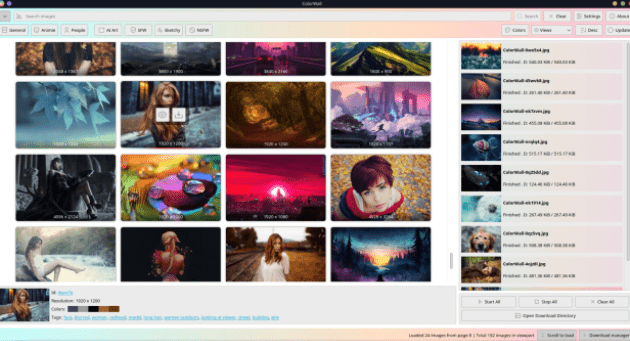
ColorWall is a feature rich Desktop wallpaper store, manager, downloader, and application that provides users with a vast selection of high-quality wallpapers to choose from.
• Comprehensive search: Users can search for wallpapers using various criteria such as Colors, Tags, Categories, Resolution, Popularity, Views, and other Rating criterias with the help of the powerful filter tools.
• Large collection: ColorWall boasts the world’s largest collection of online 4k, 8k and Ultra HD wallpapers, allowing users to browse through a vast selection of stunning images and choose the ones that best suit their taste.
• Cross-platform support: ColorWall supports major desktop environments such as windows, cinnamon, deepin, lxqt, mate, pantheon, kde-plasma-5, unity, xfce4, and even FEH and WAL as supported backends, making it a versatile application that works seamlessly across platforms. (Note: some of these backends may not work if you install ColorWall using sandbox packaging foramts like snap or flatpak)
• Highly optimized browsing experience: ColorWall features an infinity-scrollable wallpaper browsing viewport that is highly optimized for a smooth and seamless user experience, making it easy to browse through the extensive wallpaper collection quickly.
• Tabbed browsing User can open multiple tabs to Browse Images with specified filters and parameters.
• Built-in viewer: With the built-in wallpaper viewer, users can preview wallpapers before downloading them, ensuring that they select only the ones they like.
• Multithreaded download manager: ColorWall comes equipped with a multithreaded download manager that allows users to download multiple wallpapers simultaneously, saving time and effort.
• Smart multiple wallpaper selection mode: The smart multiple wallpaper selection mode enables users to select multiple wallpapers they want to download at once letting them download the selection to defined destination to let them create their own wallpaper collections.
• Smart Image metadata extraction: ColorWall can provide metadata like Dominant color, Subject/theme of wallpaper, and let you search more wallpaper with same metadata.
• Content filtering: ColorWall provides content filtering options, including an age filter, allowing users to filter out wallpapers that may not be suitable for all audiences.
• Customizable wallpaper: The downloaded wallpaper can be cropped, scaled, and adjusted to fit any screen resolution, giving users the freedom to create their own custom wallpaper designs.
• Widget style support: ColorWall offers multiple widget style support with both dark and light mode, allowing users to customize the application interface to match their preferences.
• High-performance: ColorWall is natively written in the Qt/c++ framework, which delivers high performance with very low system footprint, providing users with a smooth and seamless experience while using the application.
Note: ColorWall will gradually be available in other platforms like Windows and MacOs.
・ WallpaperDownloader
Download, manage and change your favorite wallpapers from the Internet.
1. Desktop computer “Ubuntu Software Center” search installation
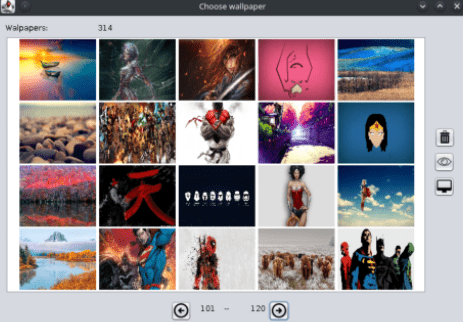
Type the keywords you want to search for, select and tweak your favorite providers (Walhaven.cc, DevianArt, Bing, Social Wallpapering, WallpaperFusion, DualMonitorBackgrounds and Unsplash) and lets WallpaperDownloader does the rest.
WallpaperDownloader is totally free and open source and works with GNOME Shell, Plasma 5 (5.8 and higher), Unity, MATE, XFCE, Cinnamon, Budgie, Deepin and Pantheon desktop environments. Control the application using the Graphic User Interface or via the icon in the system tray when it is minimized.
・ WonderWall – UHD Wallpapers Store
Powerful Desktop Wallpaper manager for Linux Desktop
1. Desktop computer “Ubuntu Software Center” search installation
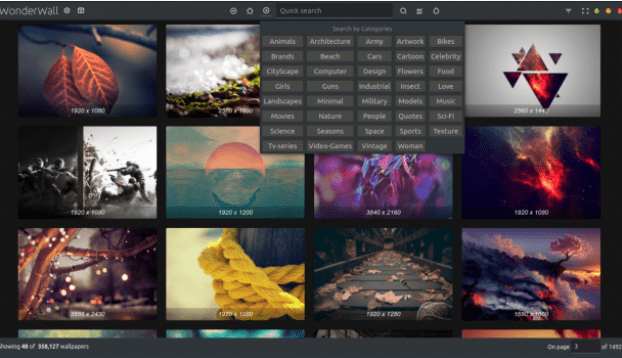
WonderWall is a desktop wallpaper store/manager utility that allows you to browse download and apply wallpaper from huge collection of wallpapers.
WonderWall Key Feature :
• Search wallpaper using Colors, Tags, Categories, Resolution, Popularity, Views, Rating etc with the powerful filter tools.
• Crop/Scale Downloaded wallpaper to make it fit into your Screen Resolution.
• Browse through the world’s largest collection of online 4k and Ultra HD Wallpapers.
• Maintains your own Wallpaper Library.
• Supports major desktop environments – windows, cinnamon, deepin, lxqt, mate, pantheon, kde-plasma-5, unity, xfce4 and even FEH and WAL are added as supported backends.
Downloaded wallpaper location:
• Download location is browsable from the Library or from Application settings. Click “Open Download Location” button.
What’s new:
• Support for Ubuntu’s Dark and Light Color schemes.
・ BingWall – Bing wallpaper of the day
Bing Wallpaper of the day to Gnome Based Desktop
1. Desktop computer “Ubuntu Software Center” search installation
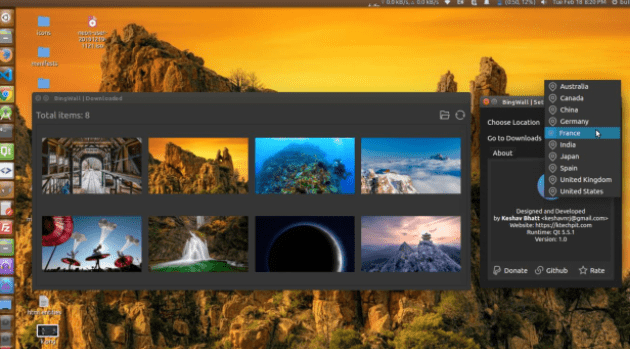
Little powerful utility brings Bing Wallpaper of the day to your desktop with ease of few clicks.
Features
• Allows list bing wallpaper of the day for 10 Countries (All supported by bing API).
• Simple to use neat interface.
• Set Wallpaper of the day on system start-up.
• Bing Wallpaper title watermark (optional).
• Allow Downloading of wallpapers and saving them to a browsable location.
• Downloaded wallpapers are accessible from with in the application.
• Dark Theme out of the box.
Command Line Mode:
• Set wallpaper of the day without opening the GUI with single command. bing-wall –set
Developed and published with in 1 Day
・ Meteo
Check the weather forecast for the next few hours and days with data and maps. Developed with Vala and Gtk using OpenWeatherMap.
1. Desktop computer “Ubuntu Software Center” search installation

・ ClassicMenu Indicator
ClassicMenu Indicator is a notification area applet (application indicator) for the top panel of Ubuntu’s Unity desktop environment and other environments that support the AppIndicator protocol. It provides a simple way to get a GNOME Classic-style application menu for those who prefer this over the Unity dash menu.
1. Desktop computer “Ubuntu Software Center” search installation
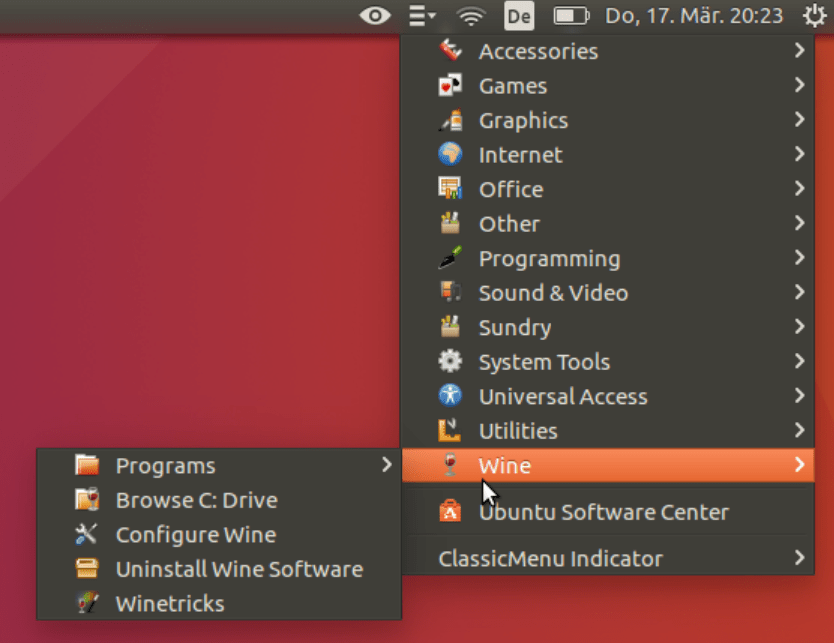
・ GIMP
GNU Image Manipulation Program, commonly known by its acronym GIMP (/ɡɪmp/ GHIMP), is a free and open-source raster graphics editor used for image manipulation (retouching) and image editing, free-form drawing, transcoding between different image file formats, and more specialized tasks. It is extensible by means of plugins, and scriptable. It is not designed to be used for drawing, though some artists and creators have used it in this way.
GIMP is released under the GPL-3.0-or-later license and is available for Linux, macOS, and Microsoft Windows.
1. Desktop computer “Ubuntu Software Center” search installation
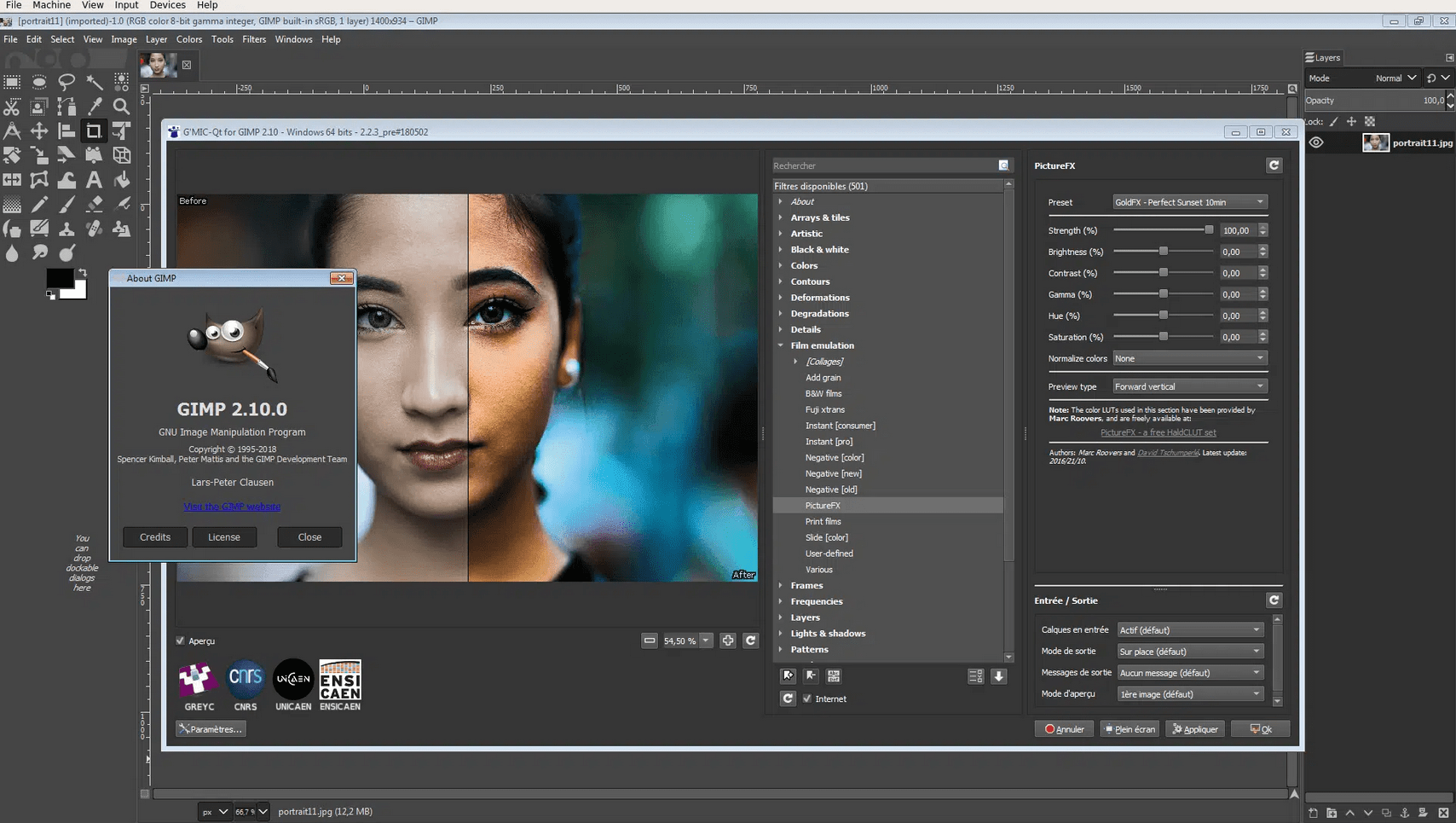
・ Blender
Blender is the free and open source 3D creation suite.
1. Desktop computer “Ubuntu Software Center” search installation
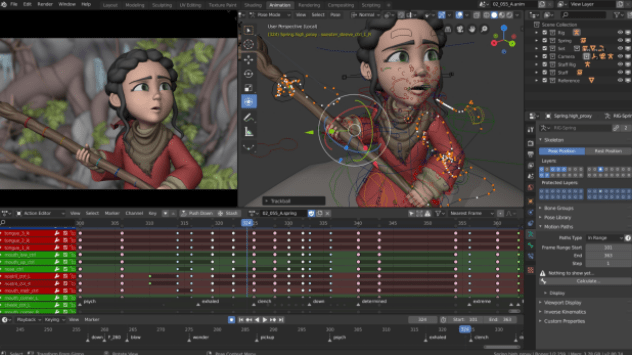
Blender is the free and open source 3D creation suite. It supports the entirety of the 3D pipeline—modeling, rigging, animation, simulation, rendering, compositing and motion tracking, and video editing.
Blender is a public project, made by hundreds of people from around the world; by studios and individual artists, professionals and hobbyists, scientists, students, VFX experts, animators, game artists, modders, and the list goes on.
・ Synfig Studio
Open-source 2D Animation Software
1. Desktop computer “Ubuntu Software Center” search installation
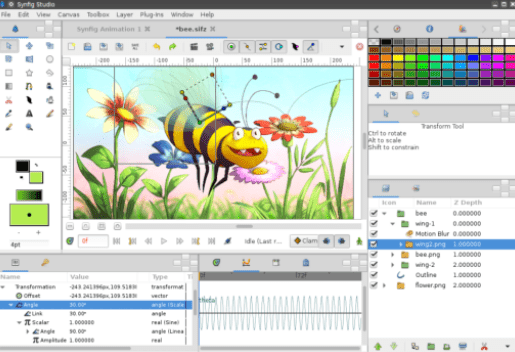
Synfig Studio is a free and open-source 2D animation software, designed as powerful industrial-strength solution for creating film-quality animation using a vector and bitmap artwork. It eliminates the need to create animation frame-by frame, allowing you to produce 2D animation of a higher quality with fewer people and resources.
Features:
• Can manipulate vector and bitmap artwork
• Automatic tweening (independent from FPS)
• Multitude of layers of various types (geometry primitives, shapes, gradients, fractals)
• Full-featured bone system
• Filters and effects for compositing (blurs, distortions, color manipulation, masks)
• All color operations use High Dynamic-Range Imaging (HDRI)
• Pen tablet-friendly tools
• Sound support
• Linking data on file- or parameter-level
• Automatic animation using mathematical functions
・ Drawing
“Drawing” is a basic image editor, supporting PNG, JPEG and BMP file types.
It allows you to draw or edit pictures with tools such as pencil, line or arc (with various options), selection (cut/copy/paste/drag/…), shapes (rectangle, circle, polygon, …), text insertion, resizing, cropping, rotating, …
1. Desktop computer “Ubuntu Software Center” search installation

・ Krita
Digital Painting, Creative Freedom
Krita is the full-featured digital art studio.
It is perfect for sketching and painting, and presents an end–to–end solution for creating digital painting files from scratch by masters.
Krita is a great choice for creating concept art, comics, textures for rendering and matte paintings. Krita supports many colorspaces like RGB and CMYK at 8 and 16 bits integer channels, as well as 16 and 32 bits floating point channels.
Have fun painting with the advanced brush engines, amazing filters and many handy features that make Krita enormously productive.
1. Desktop computer “Ubuntu Software Center” search installation
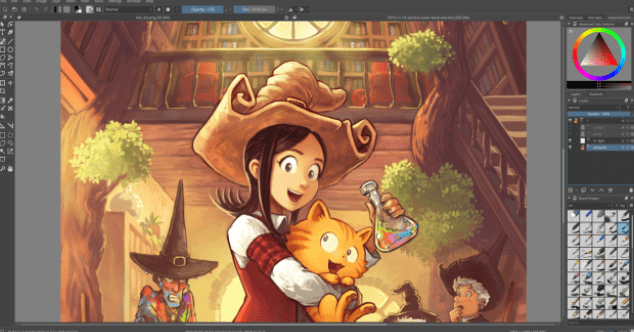
・ FreeCAD
FreeCAD is a general-purpose parametric 3D computer-aided design (CAD) modeler and a building information modeling (BIM) software application with finite element method (FEM) support. It is intended for mechanical engineering product design but also expands to a wider range of uses around engineering, such as architecture or electrical engineering. FreeCAD is free and open-source, under the LGPL-2.0-or-later license, and available for Linux, macOS, and Windows operating systems. Users can extend the functionality of the software using the Python programming language.
1. Desktop computer “Ubuntu Software Center” search installation
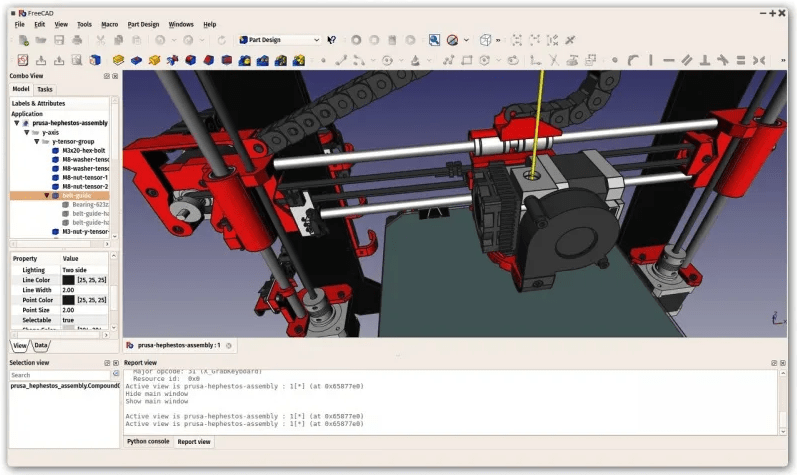
・ Sweet Home 3D
An interior design application to draw house plans & arrange furniture.
1. Desktop computer “Ubuntu Software Center” search installation
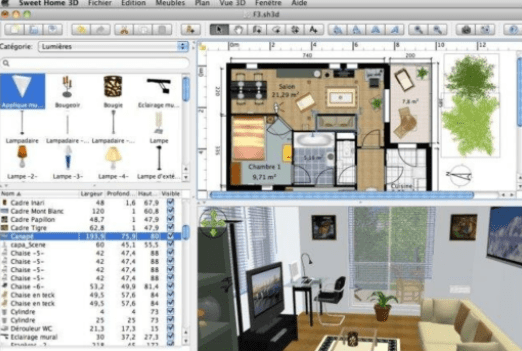
Sweet Home 3D is a free interior design application that helps you place your furniture on a house 2D plan, with a 3D preview.
・ Hopsan
Modelling and simulation tool for fluid power and mechatronic systems.
1. Desktop computer “Ubuntu Software Center” search installation
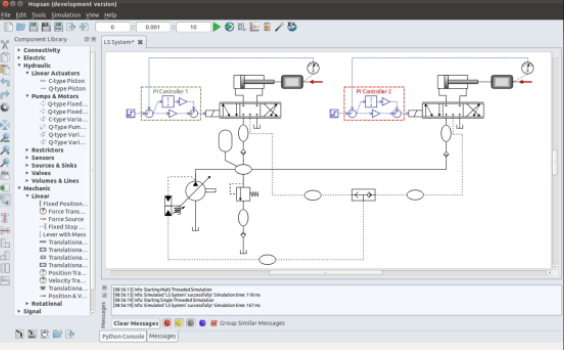
Hopsan is a modelling and simulation environment for fluid and mechatronic systems. It was originally developed for simulation of fluid power systems, but has also been extended with support for other domains such as electric power, mechanics, flight and vehicle dynamics. Hopsan uses bi-directional delay lines, (or transmission line elements TLM) to connect physical component models, but also supports signal flow modelling with common mathematical operators and functions.
・ Graphs
Plot and manipulate data.
1. Desktop computer “Ubuntu Software Center” search installation
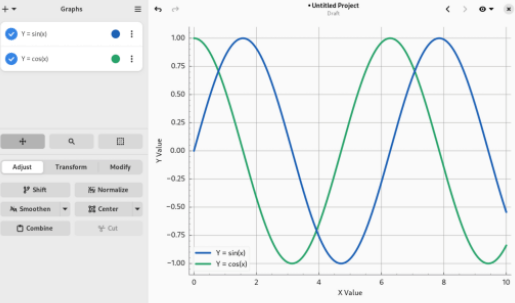
Graphs is a simple, yet powerful tool that allows you to plot and manipulate your data with ease. New data can be imported from a wide variety of filetypes or generated by equation. All data can be manipulated using a variety of operations such as the ability to select, cut, translate, multiply, center, and smoothen data, as well as apply any custom transformations on the data.
Moreover, Graphs supports curve fitting on imported data and offers extensive customization options for the style of the plots. You can fine-tune and personalize stylesheets to your liking.
Graphs is an excellent fit for both plotting and data manipulation. The plots created with Graphs can be saved in a variety of formats suitable for sharing and presenting to a wide audience, such as in a scientific publication or presentations. Additionally, the option to save plots as vector images allows for easy editing in software like Inkscape for further refinement. Graphs is written with the GNOME environment in mind but should be suitable for any other desktop environment as well.
For any feedback, questions, or general issues, please file an issue on the GitHub page.
・ LabPlot
Interactive Data Visualization and Analysis.
1. Desktop computer “Ubuntu Software Center” search installation
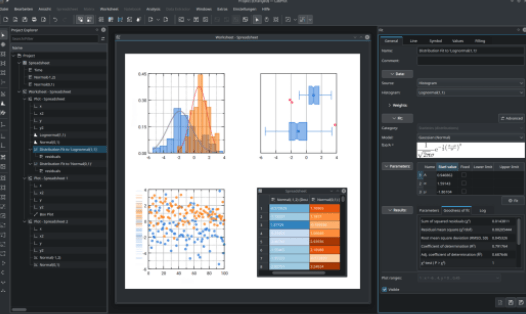
LabPlot is a FREE, open source and cross-platform Data Visualization and Analysis software accessible to everyone.
• See your data instantly within a few clicks. No programming needed!
• Publication quality plots
• Data extraction from plots
• Viewing and recording Live Data
• Statistics, linear and non-linear regression analysis, curve fitting and smoothing
• Drag & drop import from CSV, SAS, Stata, and SPSS, Origin, MATLAB, SQL
• Interactive programming notebooks for advanced users (support for Python, R, Julia, Octave, SciLab, Maxima and others)
・ Openrocket
Free, fully featured model rocket simulator.
1. Desktop computer “Ubuntu Software Center” search installation
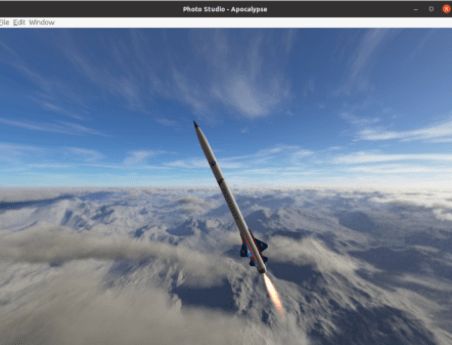
OpenRocket is a free, fully featured model rocket simulator that allows you to design and simulate your rockets before actually building and flying them.
Main features include:
• Six-degree-of-freedom flight simulation
• Automatic design optimization
• Realtime simulated altitude, velocity and acceleration display
• Staging and clustering support
• Motor data from http://www.thrustcurve.org
• and more!
Reliable simulations
Leverage state of the art Six-Degrees-of-Freedom flight simulation with over 50 variables. Analyse all aspects of your simulation with advanced plotting and exporting.
Easily design your models with CAD technology
Replicate all features of your existing model or new design. Everything from the density of materials to the quality of finish on the outside of your model. Choose from a massive catalog of existing components and materials, or make up your own and save for reuse later. You can even export your design drawings to PDF for building.
Optimize your designs for certain characteristics
As well as being able to tweak your model with real time feedback in design mode, there is also an AI assistant that can help you automatically adjust parameters given an optimization goal. Fly higher and longer with unique designs.
Fine tune your design with realtime performance data feedback
Performance data such as center of pressure, center of gravity, maximum altitude, max velocity and stability are all updated in real time as you work in design mode. See the effect of your changes the instant that you make them.
Design with Multiple Stages and Cluster your Motors Staging events for your flight is no problem. Multi stage, dual deployment and other event triggers can be incorporated into your design. Clustering is no problem either. Automatically arrange your cluster via several preset configurations and tune to match your exact needs.
Choose the best and safest motors for your model With a huge database of motor data from http://www.thrustcurve.org you can find the most appropriate motors for your model specifications. Easily filter and search the database for motors that are suitable for your design.
・ Cirkit Designer
Circuit Designer is an electronics IDE aiming at 10x speed up for circuit project building. From circuit layout, coding, and part purchasing, we build cirkit designer to be the the first one-stop-shop for designing and prototyping Arduino and general electronics projects.
1. Desktop computer “Ubuntu Software Center” search installation
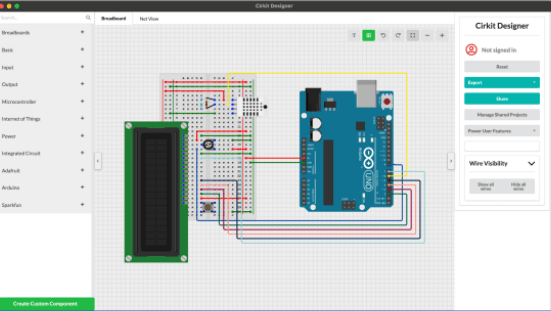
We feature:
• An intuitive circuit diagramming interface.
Cirkit Designer is built for easy circuit wiring, sporting over 1000 pre-existing parts and the ability to create more. Our drag-and-drop interface and auto wiring makes it easy to sketch up complex circuitry.
• An Arduino IDE supporting code compilation and uploading.
Cirkit Designer contains a full-fledge arduino IDE, capable of auto code complication and writing to the board, powered by VS-Code and Arduino.
• An one-click bill-of-materials powered by Nexar / Altium
With one click, you can see where you can buy all of your current components in your project.
• The first-ever circuit reference library (WikiMakes) with fully documented reference circuit designs.
We also build WikiMakes (https://wikimakes.com/), the first ever electronics reference design library. Cirkit Designer natively support posting and downloading WikiMakes project, giving it access to endless community content.
Our application is currently available on all major desktop platforms (Windows, Mac, and Linux) for free.
・ Gazebo
Iterate quickly on design concepts and control strategies with Ignition’s rich suite of tools, libraries, and cloud services.
1. Desktop computer “Ubuntu Software Center” search installation
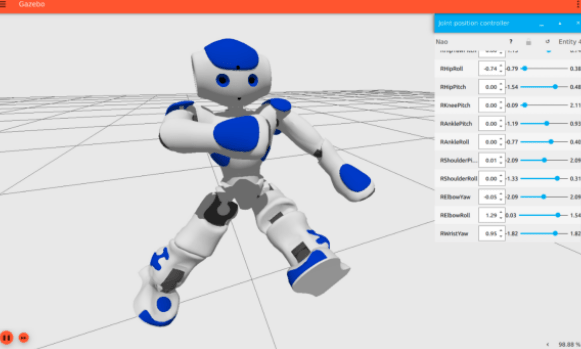
Gazebo (formerly known as Ignition [1]) is an open source robotics simulator maintained by Open Robotics [2].
Through Gazebo, users have access to high fidelity physics, rendering, and sensor models. Additionally, users and developers have multiple points of entry to simulation, including a graphical user interface, plugins, and asynchronous message passing and services.
Gazebo brings a fresh approach to simulation with a complete toolbox of development libraries and cloud services to make simulation easy. Iterate fast on your new physical designs in realistic environments with high fidelity sensor streams. Test control strategies in safety, and take advantage of simulation in continuous integration tests.
Note: This is a beta release, do expect bugs and limitations. If you encounter any, please do report it [3].
Installation Instructions:
• Install Gazebo from a terminal,
snap install gazebo –edge
• Test your installation,
gazebo.gz gazebo shapes.sdf
If you are following the Gazebo ‘Getting Started’ documentation, you can replace the entire ‘Step 1: Install’ with the snap command and resume at ‘Step 2: Run’.
Learn more about Gazebo on the official website [4].
[1] https://community.gazebosim.org/t/a-new-era-for-gazebo/1356
[2] https://openrobotics.org/
[3] https://github.com/canonical/gazebo_snap
[4] https://ignitionrobotics.org/home
・ Master PDF Editor
Master PDF Editor is a full solutions for work with PDF documents
• Edit PDF text and images, Mark and annotate, Merge and split.
• JavaScript and Dynamic XFA form support.
• Validation Forms and Calculate Values.
• Adding a digital signature and Signing PDF Documents.
• Fast and simple PDF forms fill out.
• Changing font attributes (size, family, color, etc).
Snap package tested with KDE desktop only.
1. Desktop computer “Ubuntu Software Center” search installation
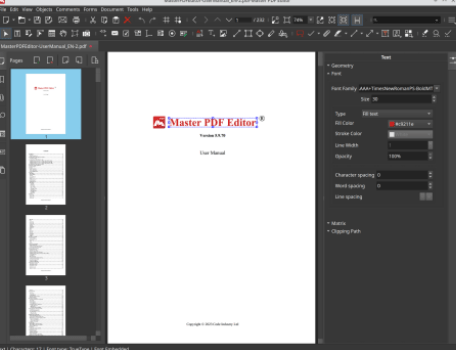
・ Color Picker
A color picker and color editor for web designers and digital artists.
ColorPicker is an advance screen color picker based on Qt’s QColorDialog library, A color picker and color editor for web designers and digital artists, created by a designer and digital artist. With Color Picker, identifying the colors, saving etc is quick and easy job.
1. Desktop computer “Ubuntu Software Center” search installation
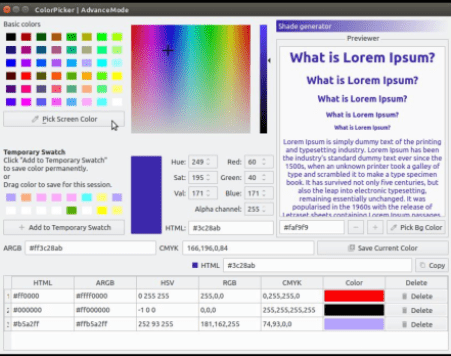
Color Picker features include:
• Five formats of color codes: HTML, HexRGBA, RGB, HSB/HSV, CMYK and their variations. Conversion of HTML, HEX and RGB color codes into the corresponding colors.
• Color picker for easy handling and greater precision.
• Color list for saving and reusing the picked color samples for each picked color.
• Color preview widget
• Progressive color pattern generator
• Support Switching three themes – System theme, Flat Light theme and Dark theme.
WAYLAND warning: picking screen color will not work on Wayland session.
・ Screenshot
Screenshot is a simple utility that lets you take pictures of your computer screen. Screenshots can be of your whole screen, any specific application, or a selected rectangular area. You can also copy the captured screenshot directly into the GNOME clipboard and paste it into other applications.
Screenshot allows you to take screenshots even when it’s not open: just press the PrtSc button on your keyboard, and a snapshot of your whole screen will be saved to your Pictures folder. Hold Alt while pressing PrtSc and you will get a screenshot of only the currently selected window.
1. Desktop computer “Ubuntu Software Center” search installation
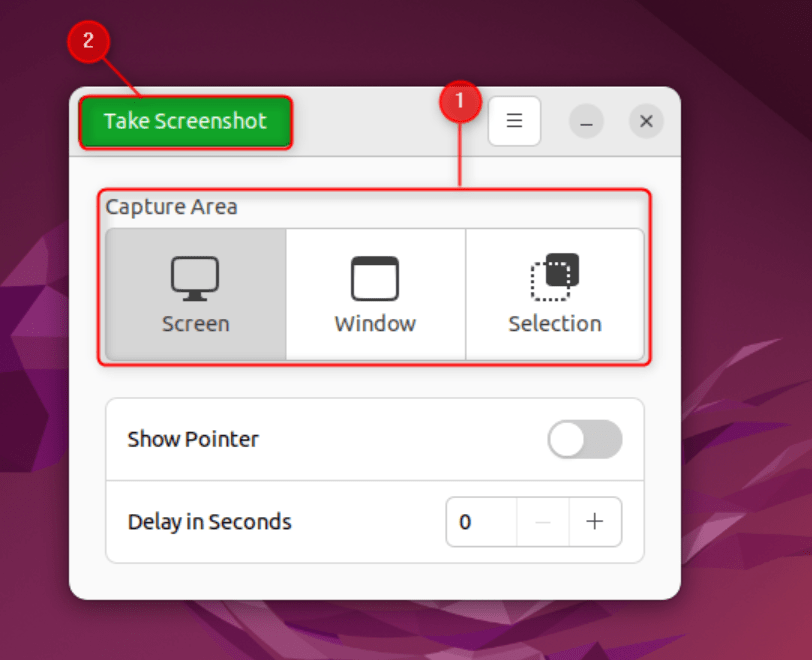
・ VLC
The ultimate media player. VLC is the VideoLAN project’s media player. Completely open source and privacy-friendly, it plays every multimedia file and streams.
It notably plays MKV, MP4, MPEG, MPEG-2, MPEG-4, DivX, MOV, WMV, QuickTime, WebM, FLAC, MP3, Ogg/Vorbis files, BluRays, DVDs, VCDs, podcasts, and multimedia streams from various network sources. It supports subtitles, closed captions and is translated in numerous languages.
1. Desktop computer “Ubuntu Software Center” search installation
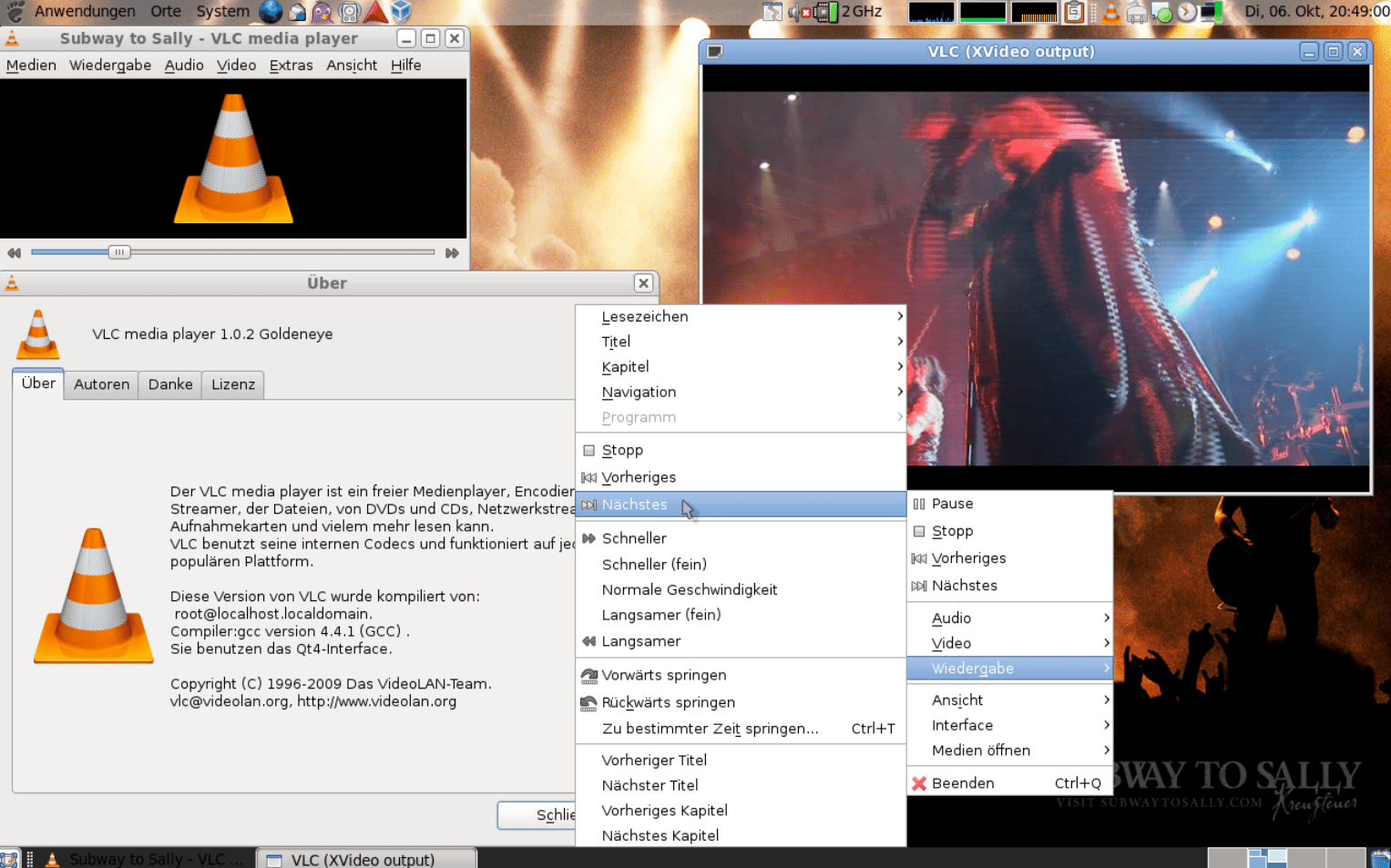
Install All Essential Media Codecs in Ubuntu With This Single Command
Since ubuntu-restrcited-extras package is available in the multiverse repository, you should verify that the multiverse repository is enabled on your system:
$ sudo add-apt-repository multiverse
$ sudo apt update
$ sudo apt install ubuntu-restricted-extras
When you enter the command, you’ll be asked to enter your password. When you type the password, nothing is displayed on the screen. That’s normal. Type your password and press enter.
It will show a huge list of packages to be installed. Press enter to confirm your selection when it asks.
You’ll also encounter an EULA (End User License Agreement) screen like this:
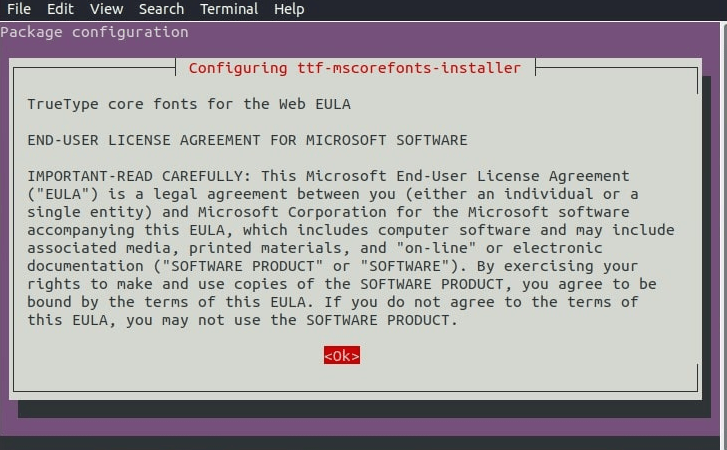
Press Tab key to select OK and press Enter key
It could be overwhelming to navigate this screen but don’t worry. Just press tab and it will highlight the options. When the correct options are highlighted, press enter to confirm your selection.
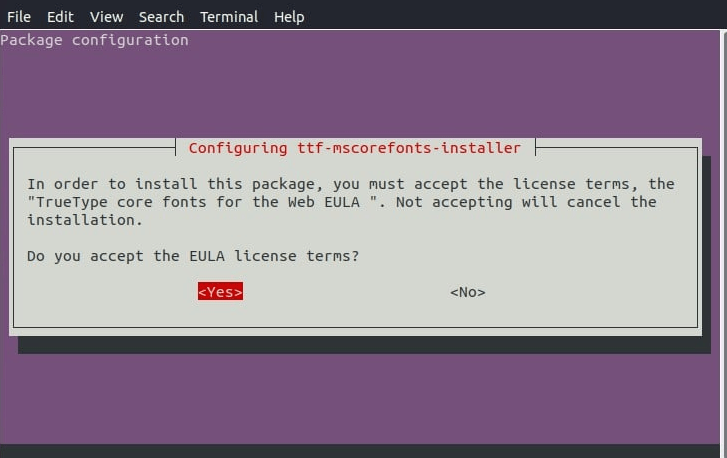
Press Tab key to highlight Yes and press Enter key
Once the process finishes, you should be able to play MP3 and other media formats thanks to newly installed media codecs.
・ Media Player Classic
This is a snap of Media Player Classic – Home Cinema (MPC-HC) is a free and open-source (OSS) video and audio player for Windows wrapped in Wine.
1. Desktop computer “Ubuntu Software Center” search installation
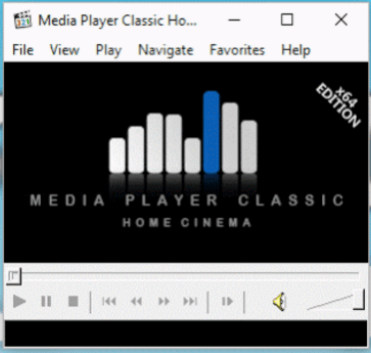
・ Wine
Run Windows applications on Linux, BSD, Solaris and Mac OS X.
1. Desktop computer “Ubuntu Software Center” search installation

Wine (originally an acronym for “Wine Is Not an Emulator”) is a compatibility layer capable of running Windows applications on several POSIX-compliant operating systems, such as Linux, Mac OSX, & BSD. Instead of simulating internal Windows logic like a virtual machine or emulator, Wine translates Windows API calls into POSIX calls on-the-fly, eliminating the performance and memory penalties of other methods and allowing you to cleanly integrate Windows applications into your desktop.
・ 4KTUBE PRO
Download YouTube 4k/8k Videos/Playlist/Audio In One Click
1. Desktop computer “Ubuntu Software Center” search installation
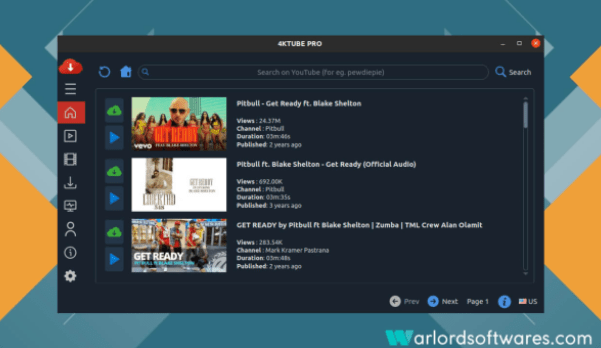
APP NOTE :#
IF APP IS NOT LAUNCHING AFTER INSTALL, THEN RUN CMD BELOW IN YOUR SHELL
$ sudo snap remove 4ktube --purge;sudo snap remove pyqt5-runtime-core20 --purge;sudo snap install pyqt5-runtime-core20;sudo snap install 4ktube;4ktube
ABOUT APPLICATION :
4KTUBE is a Powerful Application For Downloading YouTube Videos, Playlists, Music And Online Videos/Audios From The Internet in HD Resolutions.
FEATURES :
• Download YouTube Videos in one Click with Different Formats.
• Download YouTube Whole Playlist in one Click.
• Download YouTube Music Audio in one Click.
• Download Generic Online Website Video & Audio in one Click.
• Download Facebook Videos/Audio in one Click.
• Download Instagram Videos/Audio in one Click.
• Download TikTok Videos/Audio in one Click.
• Download Rumble Videos/Audio in one Click.
• Download Odysee Videos/Audio in one Click.
• Download Bitchute Videos/Audio in one Click.
• Download Twitter Videos/Audio in one Click.
• Download Twitch Videos/Audio in one Click.
• Download ArteTV Videos/Audio in one Click.
• Download Fandom Videos/Audio in one Click.
• Batch Download Support For Multiple Videos In one Click
• Stream/Play YouTube Videos Online Without Download.
• Supports YouTube Subtitles and CC Download.
• YouTube Search Suggestion For Search Whole Youtube
• Audio/Videos Complete 100% Ads Free Online Stream NO ADS.
• YouTube Search In The App with Regional Country Support.
NOTE #1
ubuntu-restricted-extras package allows users to install ability to play popular non-free media formats, including DVD, MP3, Quicktime, and Windows Media formats. without this you would not be able to play videos inside the app.
$ sudo add-apt-repository multiverse
$ sudo apt update
$ sudo apt install ubuntu-restricted-extras


NOTE #2
If CPU Temp is not Coming/not accurate in the System Monitor, then run below command in your Terminal/Shell.
$ sudo snap connect 4ktube:hardware-observe
Info: Some features might be paid in the app. App includes InApp purchase.
・ kdenlive
Video Editor
Kdenlive is a non linear video editor. It is based on the MLT framework and accepts many audio and video formats, allows you to add effects, transitions and render into the format of your choice.
Features:
• Intuitive multitrack interface.
• Many effects and transitions.
• Color scopes
1. Desktop computer “Ubuntu Software Center” search installation
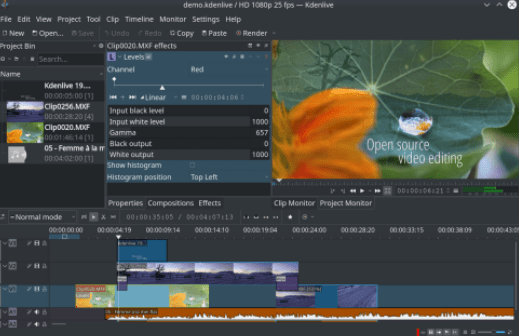
・ PiTiVi
Pitivi is a video editor that aims to appeal to hobbyists and professionals alike, with a strong focus on efficiency, quality and usability. It integrates well with other applications and sports a beautiful user interface designed to be powerful yet easy to learn.
With a non-modal editing workflow, a framerate-independent and playhead-centric timeline, Pitivi allows you quickly and accurately trim, split and review your scenes. Pitivi’s ripple and roll editing features allow spending more time on storytelling and less time on “pushing clips around”.
Some other features include:
• Accepts any file formats supported by the GStreamer multimedia framework
• Can animate hundreds of special effects and filters with keyframable properties
• Ability to set custom aspect ratios, framerates and rendering presets
• Easy to use crossfades and SMPTE transitions
• Multihead-friendly with detachable user interface components
1. Desktop computer “Ubuntu Software Center” search installation

・ OBS Studio
Free and open source software for live streaming and screen recording
The snap of OBS studio comes pre-loaded with some extra features:
• Supports nvenc (NVIDIA) and VA-API (AMD & Intel) accelerated video encoding.
• Advanced Scene Switcher plugin; an automated scene switcher
• Browser plugin; CEF-based OBS Studio browser plugin
• Directory Watch Media plugin; filter you can add to a media source to load the oldest or newest file in a directory.
• Dynamic Delay plugin; filter for dynamic delaying a video source.
• Freeze Filter plugin; freeze a source using a filter.
• GStreamer plugins; feed GStreamer launch pipelines into OBS Studio and use GStreamer encoder elements.
• Move Transition plugin; move sources to a new position during a scene transition.
• NDI plugin; Network A/V via NewTek’s NDI.
• RGB Levels plugin; simple filter to adjust RGB levels.
• Source Switcher plugin; to switch between a list of sources.
• StreamFX plugin; collection modern effects filters and transitions.
• Text Pango plugin; Provides a text source rendered using Pango with multi-language support, emoji support, vertical rendering and RTL support.
• Transition Matrix plugin; customize Any -> One or One -> One scene transitions.
• Waveform plugin; audio visualization using fftw.
• Websockets plugin; remote-control OBS Studio through WebSockets.
1. Desktop computer “Ubuntu Software Center” search installation
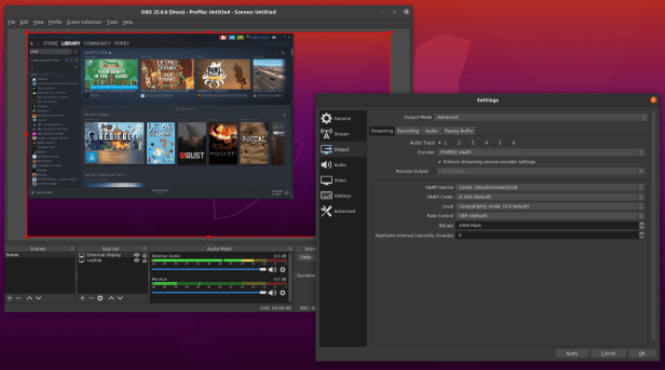
・ Shotcut
Video editor
Shotcut is a free and open-source cross-platform video editing application for Windows, macOS, and Linux.
Shotcut supports many video, audio, and image formats via FFmpeg and screen, webcam, and audio capture. It uses a time-line for non-linear video editing of multiple tracks that may be composed of various file formats. Scrubbing and transport control are assisted by OpenGL GPU-based processing and a number of video and audio filters are available.
1. Desktop computer “Ubuntu Software Center” search installation
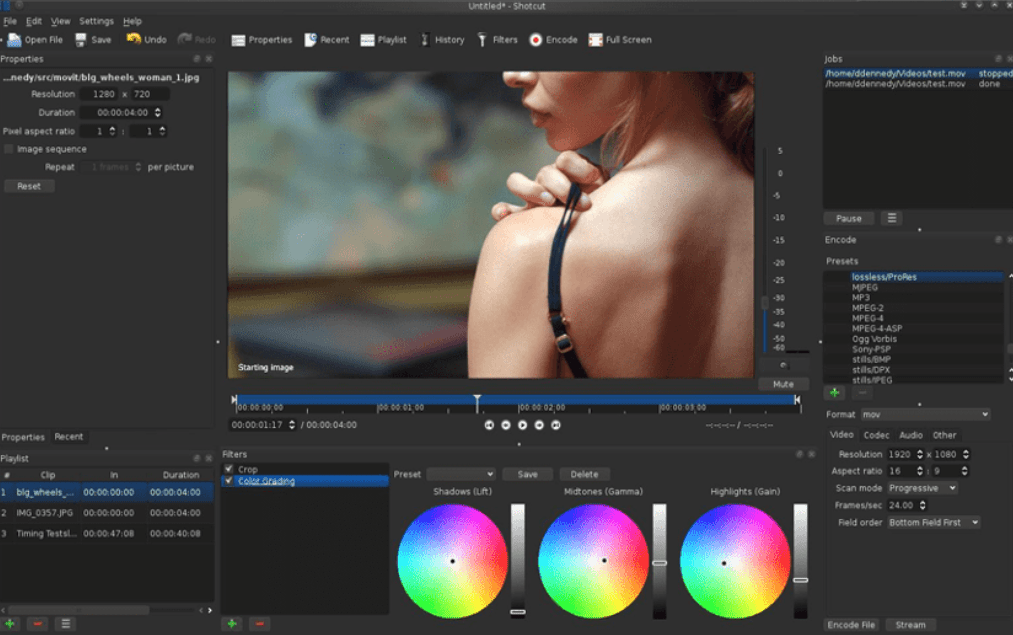
・ OpenShot
An easy to use, quick to learn, and surprisingly powerful video editor
OpenShot Video Editor is a free, open-source, non-linear video editor. It can create and edit videos and movies using many popular video, audio, image formats. Create videos for YouTube, Flickr, Vimeo, Metacafe, iPod, Xbox, and more!
Features include: Multiple tracks (layers)Compositing, image overlays, and watermarksAudio mixing and editingSupport for image sequences (rotoscoping)Key-frame animationVideo effects (chroma-key)Transitions (lumas and masks)Titles with integrated editor and templates3D animation (titles and effects)
1. Desktop computer “Ubuntu Software Center” search installation
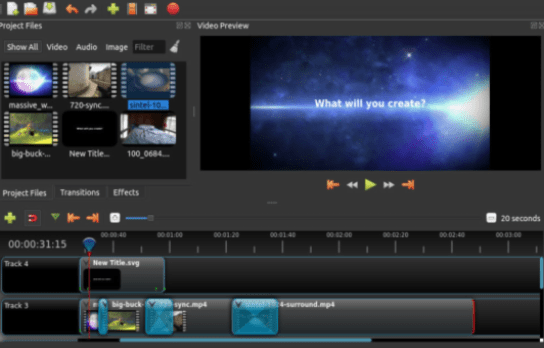
Free Video/Movie/Photos
Free Sample.
・ Brasero
Brasero is a free and open-source disc-burning program for Unix-like operating systems, it serves as a graphical front-end (using GTK) to cdrtools, cdrskin, growisofs, and (optionally) libburn. Licensed under the terms of the GNU General Public License.
1. Desktop computer “Ubuntu Software Center” search installation
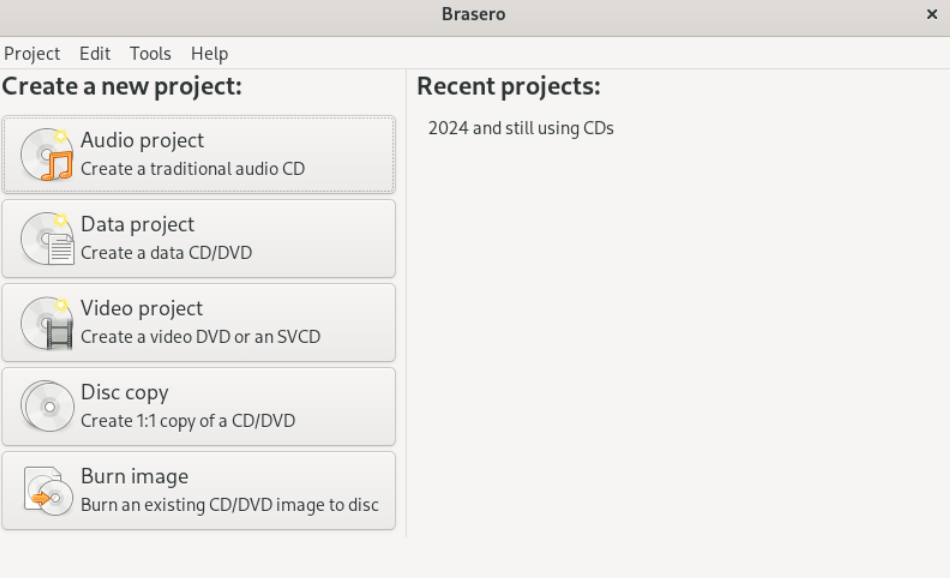
The older version of “UBUNTU” contained the “ISO” installation data on the “DVD,” but the latest “UBUNTU 22.04 LTS” has “ISO” installation data close to “5GB”
Please use a “USB memory” when installing the OS.
Startup Disk Creator
Startup Disk Creator (USB-creator) is an official tool to create Live USBs of Ubuntu from the Live CD or from an ISO image. The tool is included by default in all releases after Ubuntu 8.04, and can be installed on Ubuntu 8.04. A KDE frontend was released for Ubuntu 8.10, and is currently included by default in Kubuntu installations. The KDE and Ubuntu frontend go under the names “usb-creator-kde” and “usb-creator-gtk”, respectively.
Create a bootable USB stick on Ubuntu
Linux Pre-installed software
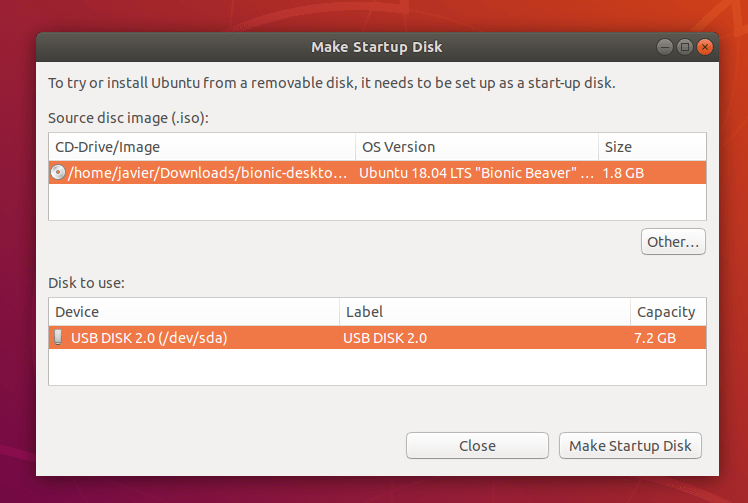
Confirm USB device
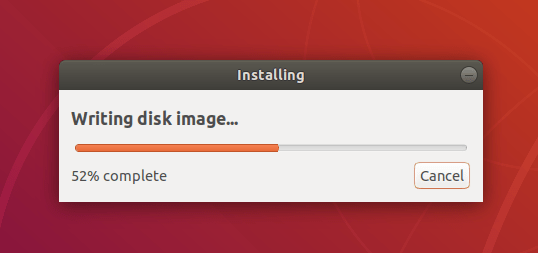
Before making any permanent changes, you will be asked to confirm the USB device you’ve chosen is correct. This is important because any data currently stored on this device will be destroyed.
After confirming, the write process will start and a progress bar appears.
Installation complete

That’s it! You now have Ubuntu on a USB stick, bootable and ready to go.
If you want to install Ubuntu, take a look at our install Ubuntu desktop tutorial.
Enterprise Open Source and Linux | Ubuntu
Ubuntu is the modern, open source operating system on Linux for the enterprise server, desktop, cloud, and IoT.
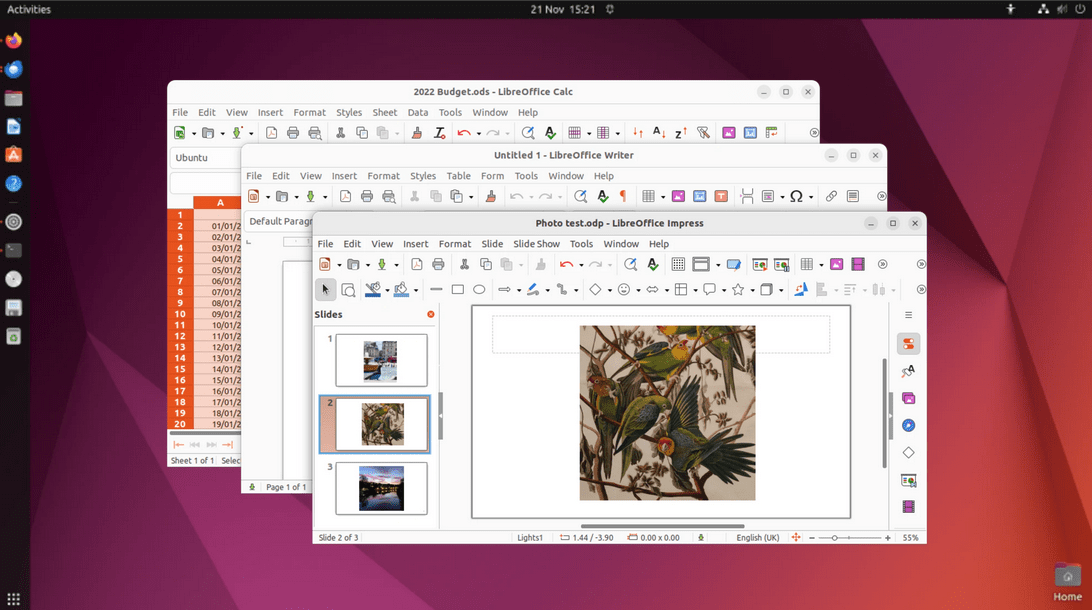
Remmina
Remote Desktop Client.
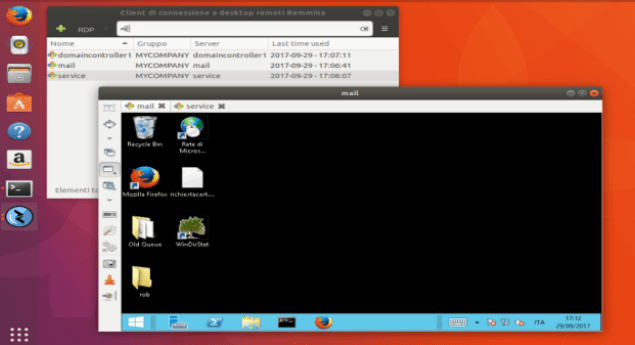
Remmina is a remote-desktop client written in GTK, to use other desktops remotely, from a tiny screen or large monitors.
Remmina supports multiple network protocols in an integrated and consistent user interface. The protocols currently supported are: X2Go, RDP (Remote Desktop Protocol), VNC (Virtual Network Computing), and SSH (Secure Shell / Open SSH).
・ Samba
Samba is the standard Windows interoperability suite of programs for Linux and Unix. Samba is Free Software licensed under the GNU General Public License, the Samba project is a member of the Software Freedom Conservancy.
Since 1992, Samba has provided secure, stable and fast file and print services for all clients using the SMB/CIFS protocol, such as all versions of DOS and Windows, OS/2, Linux and many others. Samba is an important component to seamlessly integrate Linux/Unix Servers and Desktops into Active Directory environments. It can function both as a domain controller or as a regular domain member.
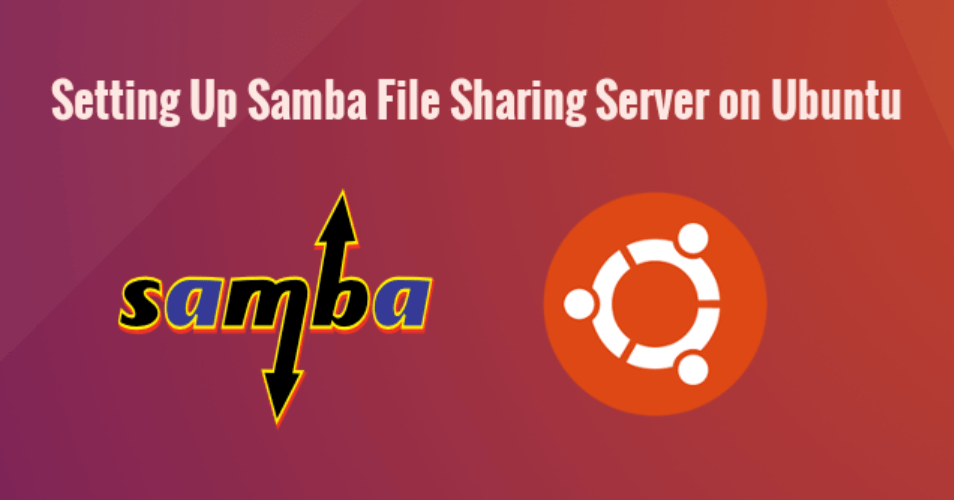
Network configuration diagram for 3 or more devices
1. Web Server
2. “Samba File Server”
3. Mail Server
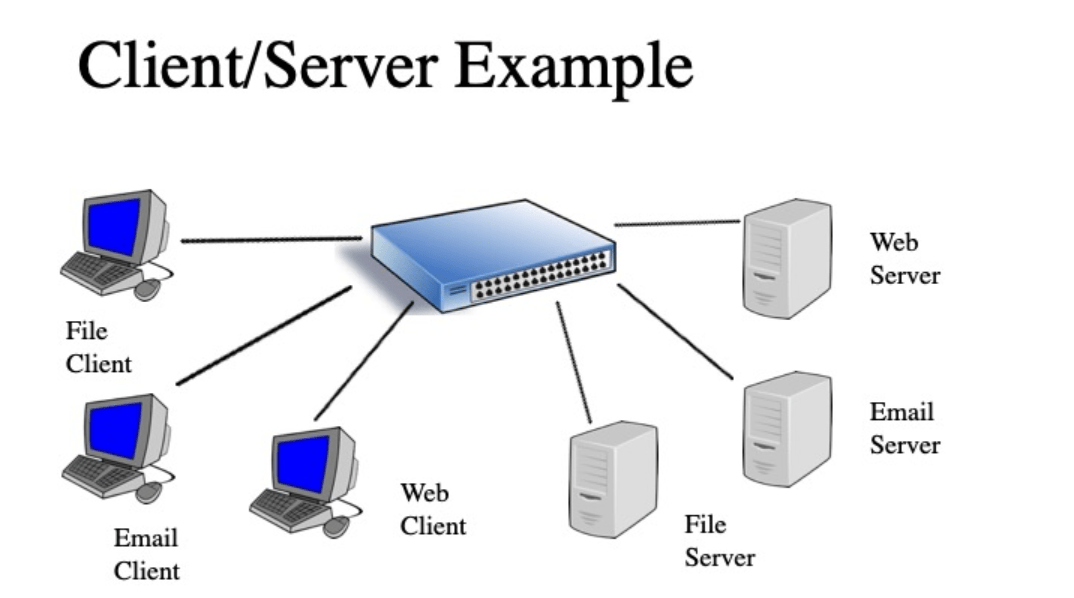
2. “Samba File Server”
Select the “Samba File Server” folder of your choice and select the right-click menu.
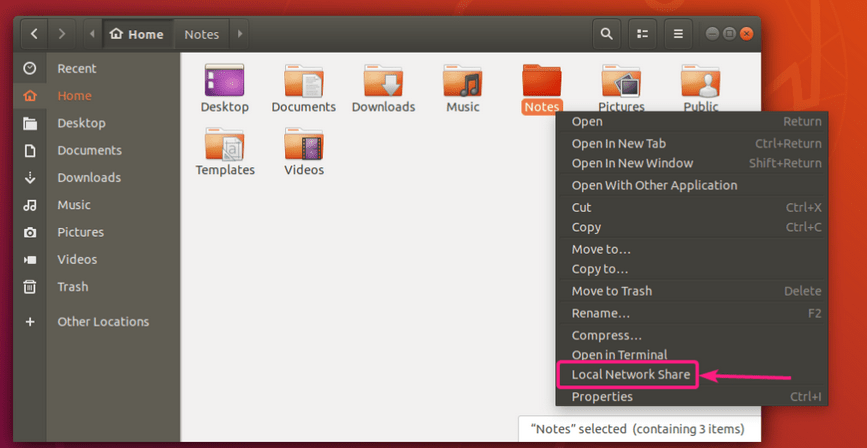
At this stage, the “Samba File Server” installation screen will appear, so follow the instructions.
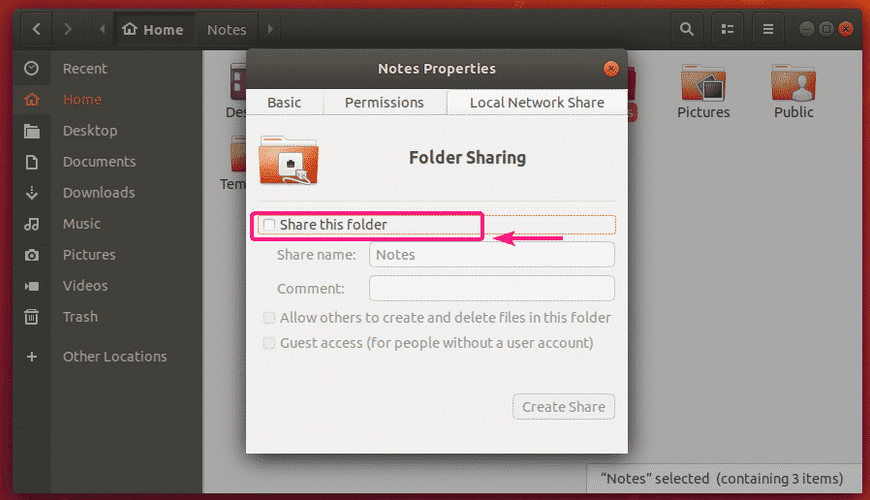
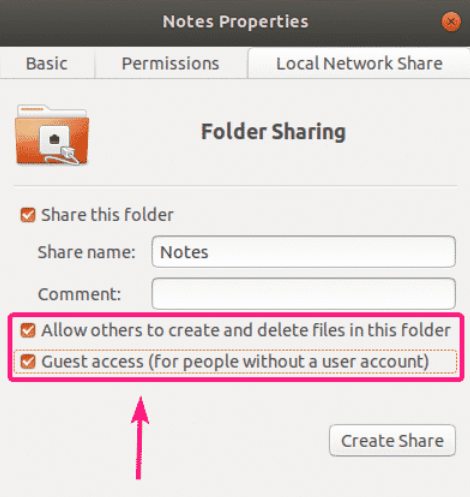
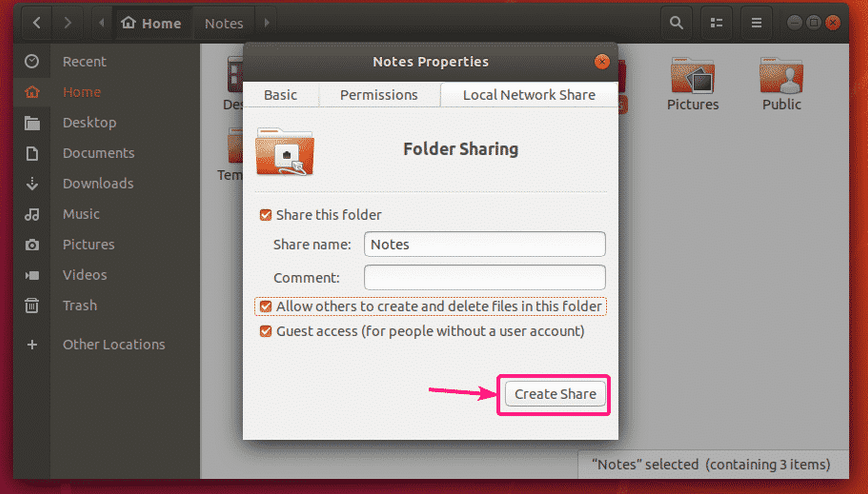
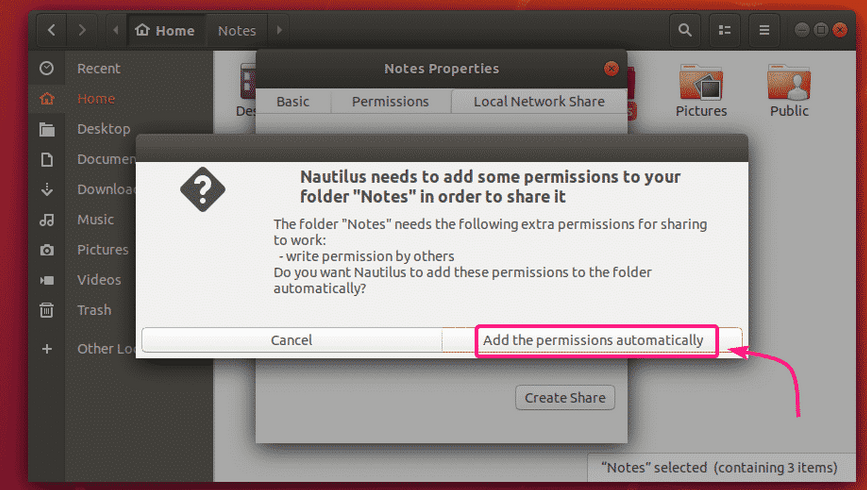
Firewall
1. Web Server
$ sudo ufw allow samba
2. “Samba File Server”
$ sudo ufw allow samba
3. Mail Server
$ sudo ufw allow samba
Gufw
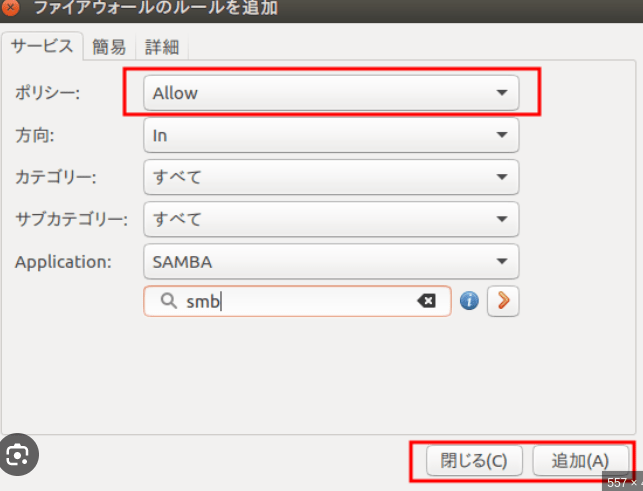
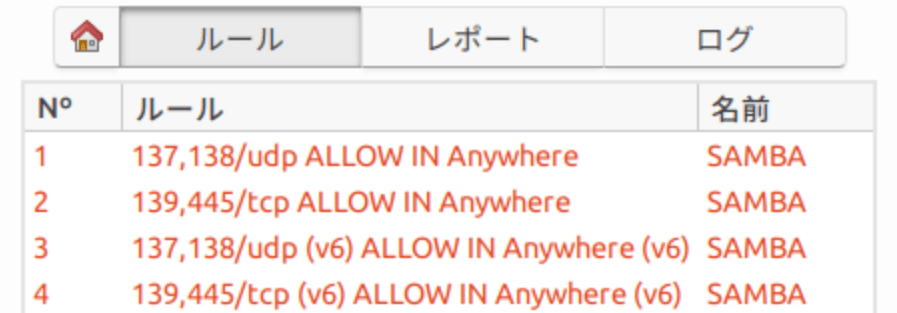
You will be able to access the “Samba File Server” from your local network.
・ FileZilla
Graphical FTP, FTPS and SFTP client.
1. Desktop computer “Ubuntu Software Center” search installation
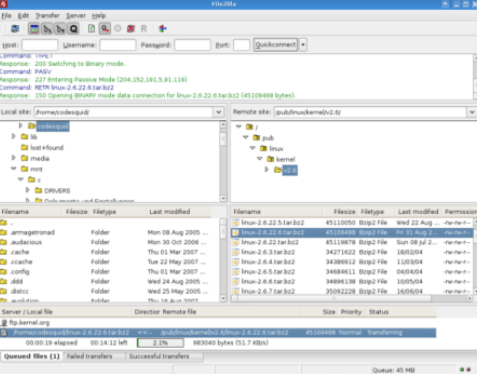
FileZilla is a graphical FTP, FTPS and SFTP client. It is platform independent and supports all major desktop operating systems.
• Easy to use
• Supports FTP, FTP over SSL/TLS (FTPS) and SSH File Transfer Protocol (SFTP)
• Cross-platform. Runs on Windows, Linux, *BSD, OSX and more
• IPv6 support
• Available in many languages
• Supports resume and transfer of large files >4GB
• Powerful Site Manager and transfer queue
• Bookmark
• Drag and drop support
• Configurable Speed limits
• Filename filters
• Directory Comparison
• Network configuration wizard
• The ability to use Notepad or any other program to edit a file online
• HTTP/1.1, SOCKS5 and FTP Proxy support
• Logging to file
• Synchronized directory browsing
• Remote file search
Transmission
Download and share files over BitTorrent.
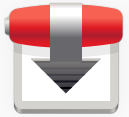
Transmission is a suite of lightweight BitTorrent clients (GUI, CLI and daemon). Each client has a very simple and intuitive interface on top of her efficient and cross-platform backend.
・ Domotz Pro Agent
Domotz Network monitoring.
1. Desktop computer “Ubuntu Software Center” search installation
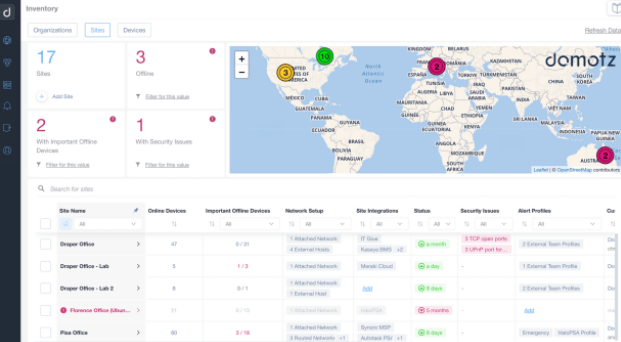
Domotz is a cloud-based network monitoring software that is packed with all the features you need. Domotz provides all services providers, MSPs, System Integrators, and Enterprises with affordable network monitoring software that enables them to work smarter, build customer loyalty and solve problems faster than ever.
Monitor unlimited network devices for only $35/month per network with no minimum or long-term commitment and a flexible cancel-anytime policy.
With Domotz, you have all the tools you need for remote network management in one user-friendly dashboard. Our network monitoring software is affordable for a reason: you can install it on every network rather than having to choose which customers get excellent network performance.
Deploy new networks faster than ever and without hours of complicated training for your technicians. Networks and devices that work means happier customers. Use Domotz to find issues before your customers do!
Try Domotz for free and take advantage of all our features:
• Set up alerts when a device loses network connectivity.
• Automatically map devices to network managed switches.
• Securely connect to remote devices on the network using http/s, RDP, Telnet, SSH and other TCP/IP protocols.
• Perform network diagnostics, such as WAN and LAN bandwidth, error analysis, packet lost, Device Response Time and more.
• Latency and route analysis and tracing.
• Remote power control (through PDU, PoE, Wake-On-Lan, Software Reboot).
• Monitor SNMP.
• Securely stream via Onvif.
• Execute speed tests and be notified when your network performance decays.
• Perform cyber-security scans for potential vulnerabilities.
Key benefits of using Domotz
• Agile – One person can deploy remote monitoring and management in less than 15 minutes. Automated network topology mapping and device attribute discovery make system deployment ridiculously fast.
• Flexible – Our system, designed from the beginning as an open platform, works with virtually any IP-enabled device, rather than being restricted to specific hardware brands. Domotz Pro, therefore, can easily scale as more endpoints join the network.
• Efficient – Connect to systems and devices remotely to better understand problems and fix issues quickly. Reduce the number of onsite visits and focus resources on more profitable activities.
• Centralized – Utilize one interface to manage multiple networks at multiple locations anywhere in the World. Access all your managed devices from a single easy to use online dashboard.
• Secure – Domotz has adopted the latest administrative, physical, and technical industry-standards (including encryption, firewalls, and SSL) to safeguard the security of our services and to protect the confidentiality of personally identifiable information.
Follow this link to know more about our simple and transparent pricing model: https://www.domotz.com/pricing.php
Installation notes
Please connect the following interfaces:
$ sudo snap connect domotzpro-agent-publicstore:firewall-control
$ sudo snap connect domotzpro-agent-publicstore:network-observe
$ sudo snap connect domotzpro-agent-publicstore:raw-usb
$ sudo snap connect domotzpro-agent-publicstore:shutdown
$ sudo snap connect domotzpro-agent-publicstore:system-observe
Then, click on the Domotz icon or go to http://127.0.0.1:3000 to configure the Domotz Agent. Note: if TCP port 3000 has been already used by a different service, Agent Web Interface might be available on subsequent ports (e.g. http://127.0.0.1:3001, http://127.0.0.1:3002, etc)
Additional notes
In case you want to use the VPN on demand feature, you have to execute also:
$ sudo sh -c 'echo tun >> /etc/modules'
$ sudo modprobe tun
In case Uncomplicated Firewall (UFW) is configured on your machine, you might consider allowing the usage of the port where the Agent Web Interface is available. For instance running the following command:
$ sudo ufw allow 3000
・ GRC’s DNS Benchmark
Utility to determine the exact performance of DNS nameservers.
1. Desktop computer “Ubuntu Software Center” search installation
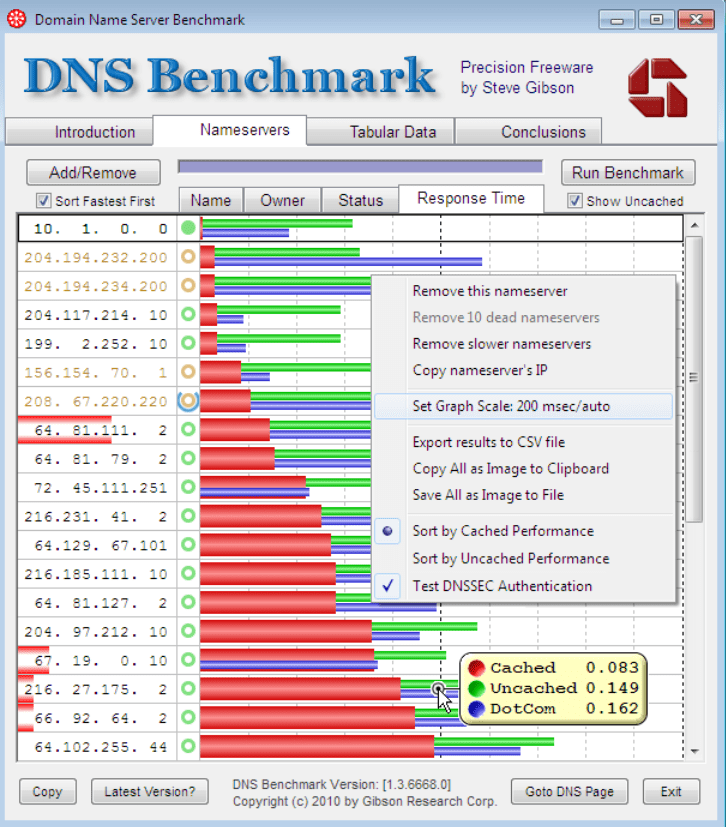
GRC’s DNS Benchmark performs a detailed analysis and comparison of the operational performance and reliability of any set of up to 200 DNS nameservers (sometimes also called resolvers) at once. When the Benchmark is started in its default configuration, it identifies all DNS nameservers the user’s system is currently configured to use and adds them to its built-in list of publicly available “alternative” nameservers. Each DNS nameserver in the benchmark list is carefully “characterized” to determine its suitability — to you — for your use as a DNS resolver. This characterization includes testing each nameserver for its “redirection” behavior: whether it returns an error for a bad domain request, or redirects a user’s web browser to a commercial marketing-oriented page. While such behavior may be acceptable to some users, others may find this objectionable.
・ GParted
GParted (acronym of GNOME Partition Editor) is a GTK front-end to GNU Parted and an official GNOME partition-editing application (alongside Disks). GParted is used for creating, deleting, resizing, moving, checking, and copying disk partitions and their file systems. This is useful for creating space for new operating systems, reorganizing disk usage, copying data residing on hard disks, and mirroring one partition with another (disk imaging). It can also be used to format a USB drive.
1. Desktop computer “Ubuntu Software Center” search installation
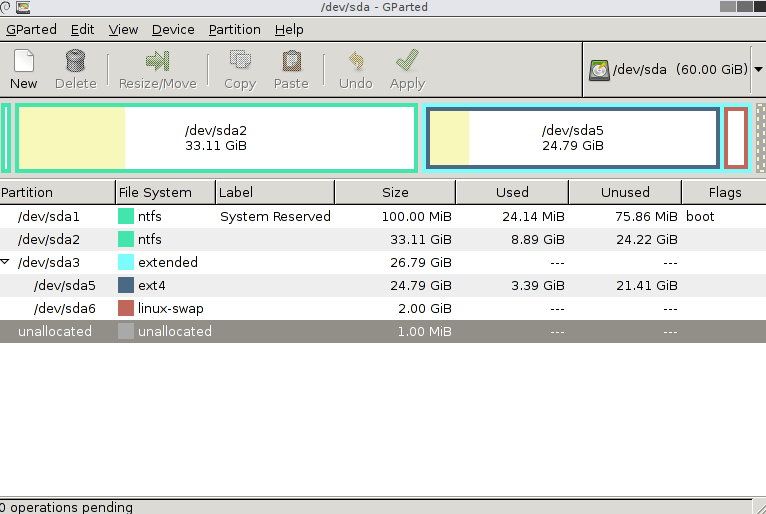
・ mdadm
mdadm is a Linux utility used to manage and monitor software RAID devices. It is used in modern Linux distributions in place of older software RAID utilities such as raidtools2 or raidtools.
mdadm is free software originally maintained by, and copyrighted to, Neil Brown of SUSE, and licensed under the terms of version 2 or later of the GNU General Public License.
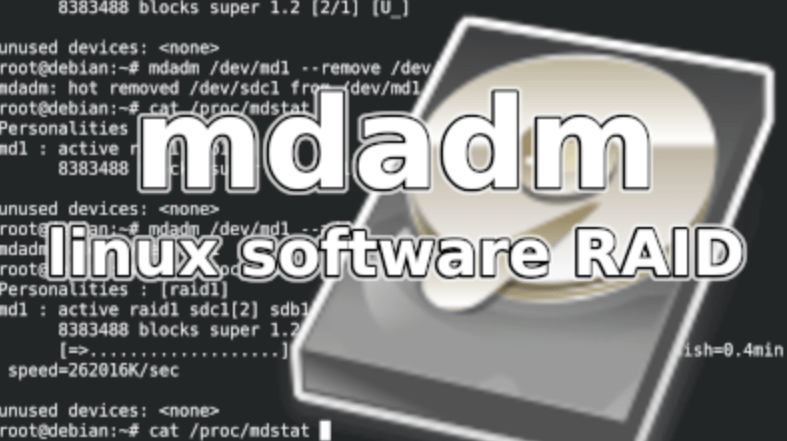
Steps to build RAID1 with two HDDs.
The devices are /dev/sda and /dev/sdb respectively.
3. Ubuntu Terminal
user@computername:~$ sudo su
[sudo] User password:
root@computername:/home/user#
apt install parted
apt install mdadm
apt install mdstat
2. Synaptic search installation
“systray-mdstat” search install
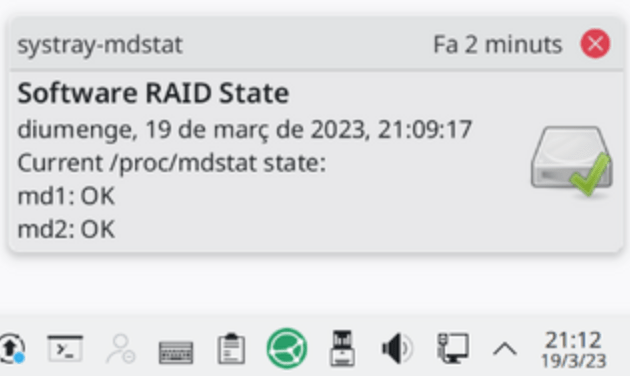
Check raid progress with indicator.
Create a GPT partition for the first HDD (/dev/sda)
user@computername:~$ sudo su
[sudo] User password:
root@computername:/home/user#
parted /dev/sda
GNU Parted 3.4
Using /dev/sda
Welcome to GNU Parted! Type ‘help’ to view a list of commands.
(parted) mklabel gpt
Warning: The existing disk label on /dev/sda will be destroyed and all data on this disk will be lost. Do you want to continue?
Yes/No? y
(parted) mkpart ext4 0% 100%
(parted) p
Model: ATA TOSHIBA MG08ACA1 (scsi)
Disk /dev/sda: 16.0TB
Sector size (logical/physical): 512B/4096B
Partition Table: gpt
Disk Flags:
Number Start End Size File system Name Flags
1 1049kB 16.0TB 16.0TB ext4
(parted) set 1 raid on
(parted) p
Model: ATA TOSHIBA MG08ACA1 (scsi)
Disk /dev/sda: 16.0TB
Sector size (logical/physical): 512B/4096B
Partition Table: gpt
Disk Flags:
Number Start End Size File system Name Flags
1 1049kB 16.0TB 16.0TB ext4 raid
(parted) quit
Do the same for /dev/sdb.
At this stage, the /dev/sda1 and /dev/sdb2 partitions have been created.
Building a RAID
–level= specifies the RAID level.
user@computername:~$ sudo su
[sudo] User password:
root@computername:/home/user#
mdadm –create /dev/md0 –level=1 –raid-devices=2 /dev/sda1 /dev/sdb1
mdadm: Note: this array has metadata at the start and
may not be suitable as a boot device. If you plan to
store ‘/boot’ on this device please ensure that
your boot-loader understands md/v1.x metadata, or use
–metadata=0.90
Continue creating array? y
mdadm: Defaulting to version 1.2 metadata
mdadm: array /dev/md0 started.
Check the RAID status with cat /proc/mdstat
user@computername:~$ sudo su
[sudo] User password:
root@computername:/home/user#
cat /proc/mdstat
Personalities : [raid1] [linear] [multipath] [raid0] [raid6] [raid5] [raid4] [raid10]
md0 : active (auto-read-only) raid1 sdb1[1] sda1[0]
15625745408 blocks super 1.2 [2/2] [UU]
resync=PENDING
bitmap: 114/117 pages [456KB], 65536KB chunk
unused devices:
Check detailed information with mdadm –datail
user@computername:~$ sudo su
[sudo] User password:
root@computername:/home/user#
mdadm –detail /dev/md0
/dev/md0:
Version : 1.2
Creation Time : ———————
Raid Level : raid1
Array Size : 15625745408 (14901.87 GiB 16000.76 GB)
Used Dev Size : 15625745408 (14901.87 GiB 16000.76 GB)
Raid Devices : 2
Total Devices : 2
Persistence : Superblock is persistent
Intent Bitmap : Internal
Update Time : ———————
State : clean, resyncing (PENDING)
Active Devices : 2
Working Devices : 2
Failed Devices : 0
Spare Devices : 0
Consistency Policy : bitmap
Name : localhost:0 (local to host localhost)
UUID : ********:********:********:********6
Events : 131
Number Major Minor RaidDevice State
0 8 1 0 active sync /dev/sda1
1 8 17 1 active sync /dev/sdb1
Format the disk to make it usable. (Format with ext4 in the command below)
user@computername:~$ sudo su
[sudo] User password:
root@computername:/home/user#
mkfs -t ext4 /dev/md0
mke2fs 1.46.2 (28-Feb-2021)
Creating filesystem with 3906436352 4k blocks and 488304640 inodes
Filesystem UUID: ********-********-********-********
Superblock backups stored on blocks:
32768, 98304, 163840, 229376, 294912, 819200, 884736, 1605632, 2654208,
4096000, 7962624, 11239424, 20480000, 23887872, 71663616, 78675968,
102400000, 214990848, 512000000, 550731776, 644972544, 1934917632,
2560000000, 3855122432
Allocating group tables: done
Writing inode tables: done
Creating journal (262144 blocks):
done
Writing superblocks and filesystem accounting information:
done
When you check the device, md0 has been created and the block type is raid1.
user@computername:~$ sudo su
[sudo] User password:
root@computername:/home/user#
lsblk
NAME MAJ:MIN RM SIZE RO TYPE MOUNTPOINT
sda 8:0 0 14.6T 0 disk
└─sda1 8:1 0 14.6T 0 part
└─md0 9:0 0 14.6T 0 raid1
sdb 8:16 0 14.6T 0 disk
└─sdb1 8:17 0 14.6T 0 part
└─md0 9:0 0 14.6T 0 raid1
Mount the created RAID disk and make it usable.
This time, /mnt/raid1 will be the mount destination.
user@computername:~$ sudo su
[sudo] User password:
root@computername:/home/user#
mkdir -p /mnt/raid1
mount -t ext4 /dev/md0 /mnt/raid1
If the mount destination is displayed in Mounted on, it is working properly.
user@computername:~$ sudo su
[sudo] User password:
root@computername:/home/user#
df -h
Filesystem Size Used Avail Use% Mounted on
…
/dev/md0 15T 28K 14T 1% /mnt/raid1
Automatically mount on reboot
If you reboot, the mount settings will be reset.
Since it is troublesome to configure the settings manually again, we will configure the settings to mount automatically when restarting.
Write the settings at the end of /etc/fstab as shown below.
$ sudo nano /etc/fstab
…
/dev/md0 /mnt/raid1 ext4 defaults 0 0
Points to note when restarting
When restarting, /dev/md0 is automatically changed to /dev/md127.
Mounting will fail if the device name is changed, so it is necessary to prevent the device name from changing.
Write the current RAID settings in the mdadm configuration file (/etc/mdadm/mdadm.conf).
user@computername:~$ sudo su
[sudo] User password:
root@computername:/home/user#
mdadm –detail –scan /dev/md0 >> /etc/mdadm/mdadm.conf
update-initramfs -u
If you want to delete the RAID settings after RAID construction, use the following command.
user@computername:~$ sudo su
[sudo] User password:
root@computername:/home/user#
mdadm –misc –stop /dev/md0
mdadm –misc –zero-superblock /dev/sda1
mdadm –misc –zero-superblock /dev/sdb1
GNOME Disks
GNOME Disks is a graphical front-end for udisks. It can be used for partition management, S.M.A.R.T. monitoring, benchmarking, and software RAID (until v. 3.12). An introduction is included in the GNOME Documentation Project.
Disks used to be known as GNOME Disk Utility or palimpsest Disk Utility. Udisks was named DeviceKit-disks in earlier releases. DeviceKit-disks is part of DeviceKit which was planned to replace certain aspects of HAL. HAL and DeviceKit have been deprecated.
GNOME Disks has been included by default in several Linux distributions including Debian, Ubuntu, Linux Mint, Trisquel, Fedora, Red Hat Enterprise Linux and CentOS.
Linux Pre-installed software
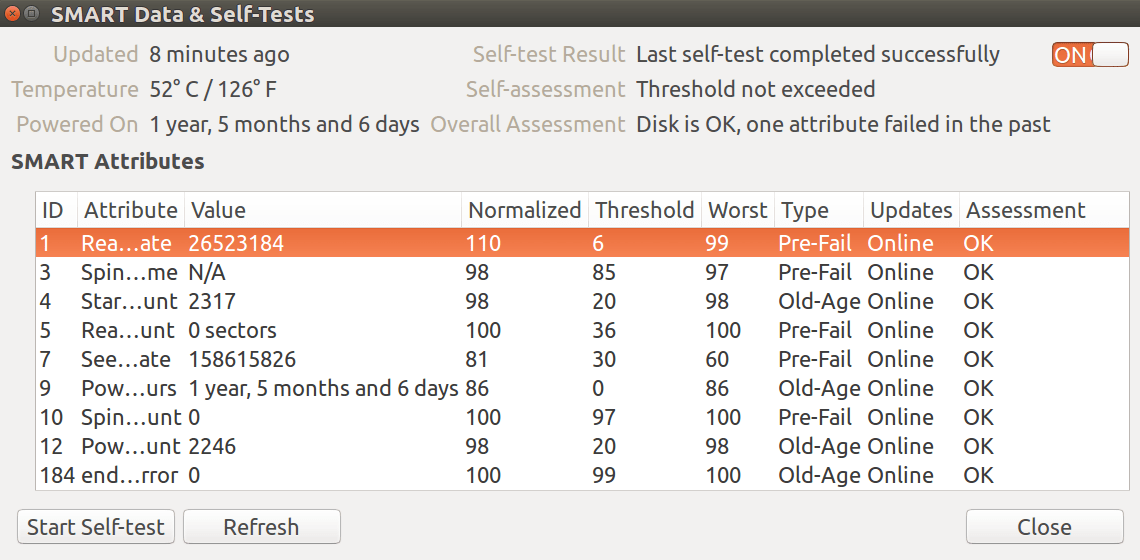
Recently, large-capacity “HDD” have been sold cheaply, so the following commands are useful for “backup” and “duplication” purposes for those who do not need to incorporate RAID. If your “HDD” is not working properly, it is faster to replace it with a new “HDD” and perform a clean OS install. We recommend storing the OS startup “HDD” and important data “HDD” separately.
・ Easy Disk Cleaner
Disk Space Analyzer that saves hundreds of gigabytes!
1. Desktop computer “Ubuntu Software Center” search installation
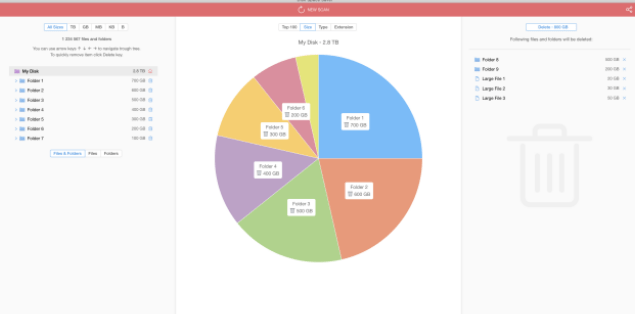
This is a Free version with limited functionality. To get Full version, please visit website.
dd command
The dd command is a command used for various purposes such as copying and backing up disk data, writing image files, and destroying disk data. If you use it incorrectly, you can easily destroy your data, so be careful.
Basic usage of dd command Copy data from disk to disk
user@computername:~$ sudo su
[sudo] User password:
root@computername:/home/user#
dd if=/dev/source device file of=/dev/destination device file
cp command
command suitable for copying “folders” and “files”.
cp folder
$ sudo cp -r /download/wordpress/ /media/user/sdb/
cp file
$ sudo cp /download/wordpress/index.html /media/user/sdb/
rm command
command suitable for deleting “folders” and “files.”
rm folder
$ sudo rm -r /download/wordpress/
rm file
$ sudo rm /download/wordpress/index.html
$ sudo apt update
$ sudo apt upgrade
$ sudo apt autoremove
・ Network tools
Perform advanced network analysis.
1. Desktop computer “Ubuntu Software Center” search installation
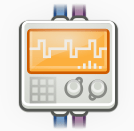
Network tools are utilities for performing advanced network analysis. Many networking tools that are normally run from the command line can be used with graphical interfaces.
Network tools allow you to ping, netstat, traceroute, port scans, DSN Lookup, finger, and whois.
・ influxdb
Scalable datastore for metrics, events, and real-time analytics.
1. Desktop computer “Ubuntu Software Center” search installation
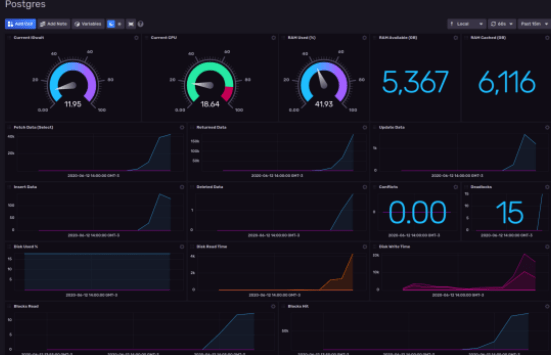
InfluxDB is a time series, metrics, and analytics database. It’s written in Go and has no external dependencies. That means once you install it there’s nothing else to manage (such as Redis, ZooKeeper, Cassandra, HBase, or anything else). InfluxDB is targeted at use cases for DevOps, metrics, sensor data, and real-time analytics.
・ Hardware Probe
Check operability of computer hardware and find drivers.
1. Desktop computer “Ubuntu Software Center” search installation
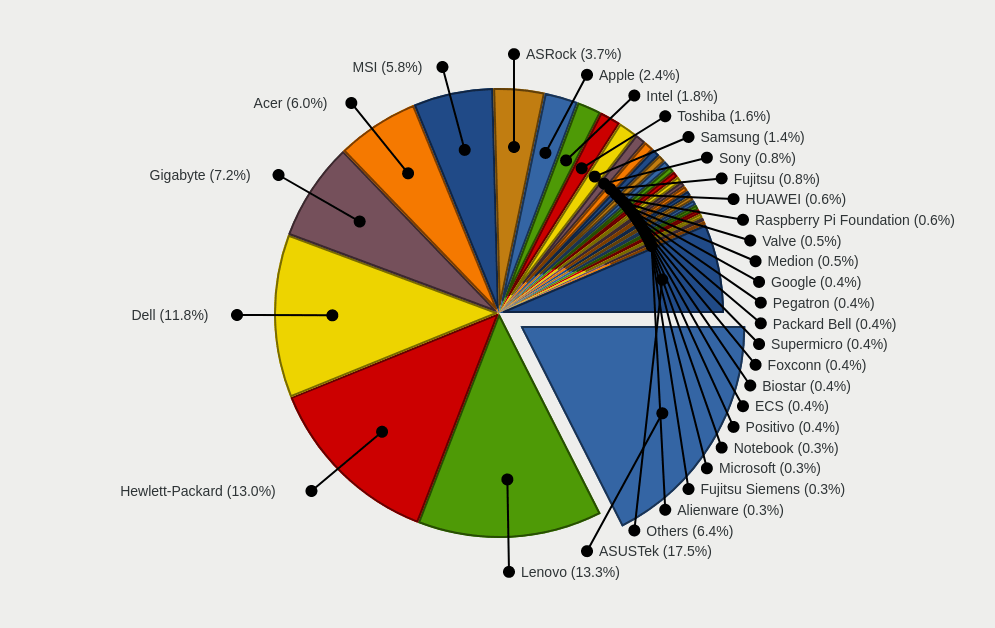
This is a project to anonymously collect hardware details of Linux-powered computers over the world and help people to collaboratively debug hardware related issues, check for Linux-compatibility and find drivers.
・ CPU-X
Gathers information on CPU, motherboard and more.
1. Desktop computer “Ubuntu Software Center” search installation
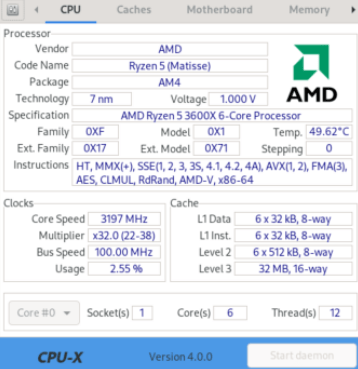
CPU-X is a Free software that gathers information on CPU, motherboard and more. CPU-X is similar to CPU-Z (Windows), but CPU-X is a Free and Open Source software designed for GNU/Linux; also, it works on *BSD. This software is written in C and built with CMake tool. It can be used in graphical mode by using GTK or in text-based mode by using NCurses. A dump mode is present from command line.
・ System Profiler
System profiler and benchmark tool for Linux systems.
1. Desktop computer “Ubuntu Software Center” search installation
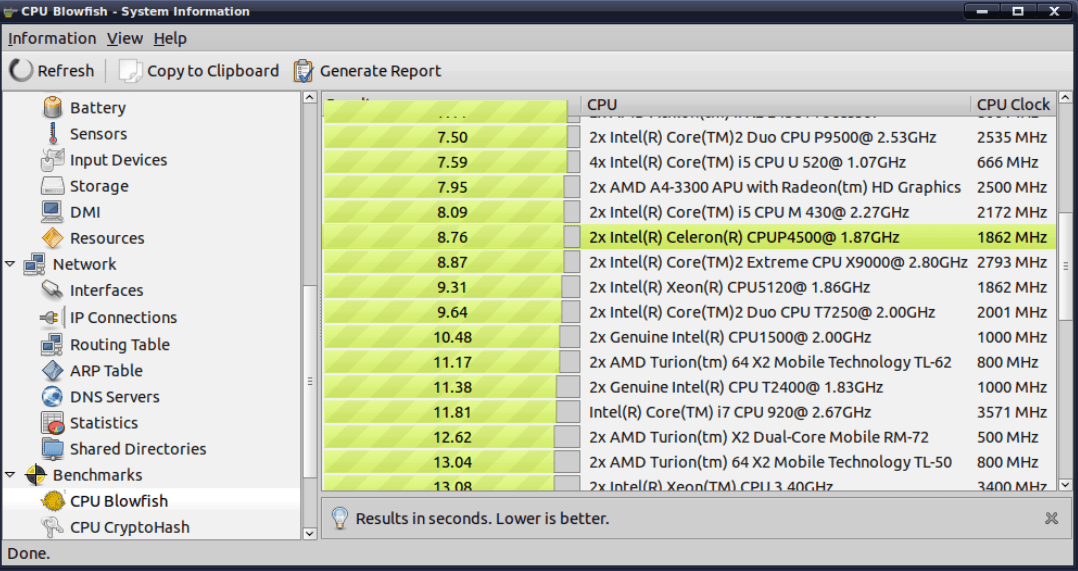
・ DbGate
DbGate is cross-platform database manager. It’s designed to be simple to use and effective, when working with more databases simultaneously. But there are also many advanced features like schema compare, visual query designer, chart visualisation or batch export and import.
1. Desktop computer “Ubuntu Software Center” search installation

DbGate is licensed under MIT license and is completely free.
List of supported databases includes MySQL, PostgreSQL, SQL Server, Oracle, MongoDB, Redis, SQLite, Amazon Redshift, CockroachDB, MariaDB.
・ DB Browser for SQLite
DB Browser for SQLite is a light GUI editor for SQLite databases.
1. Desktop computer “Ubuntu Software Center” search installation
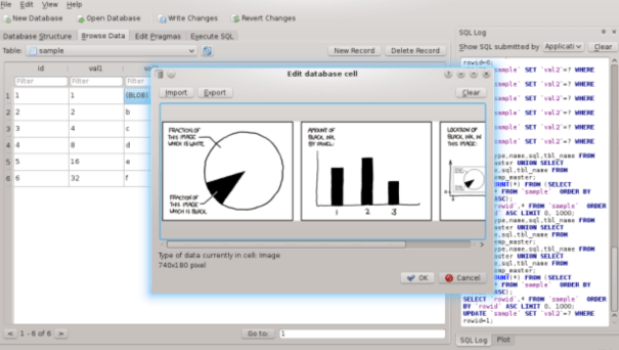
DB Browser for SQLite is a high quality, visual, open source tool to create, design, and edit database files compatible with SQLite.
It is for users and developers wanting to create databases, search, and edit data. It uses a familiar spreadsheet-like interface, and you don’t need to learn complicated SQL commands.
Controls and wizards are available for users to:
• Create and compact database files
• Create, define, modify and delete tables
• Create, define and delete indexes
• Browse, edit, add and delete records
• Search records
• Import and export records as text
• Import and export tables from/to CSV files
• Import and export databases from/to SQL dump files
• Issue SQL queries and inspect the results
• Examine a log of all SQL commands issued by the application
・ Beekeeper Studio
Easy-to use SQL editor and DB Manager for PSQL, MySQL, & More.
1. Desktop computer “Ubuntu Software Center” search installation
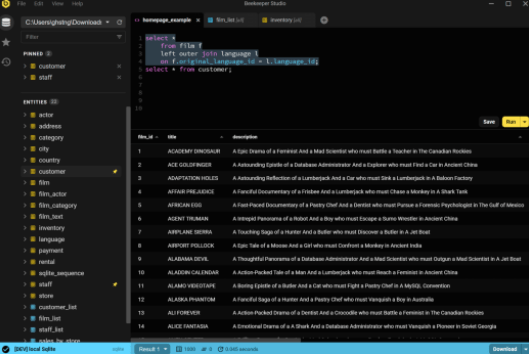
Beekeeper Studio Community Edition is a database manager and SQL editor that you’ll actually enjoy using.
Some stuff you can do:
• Get into flow state with an intuitive editor with tabs that behave as you’d expect them to
• Edit tables in a spreadsheet-like interface
• Create and modify table schemas without writing SQL
• Write and execute SQL in a nice to use editor with gentle code completion
• Save queries for later
• Easily filter table data
We sweat the details, here are some things we added that help improve the experience:
• Click on a foreign key to go to that record in a new tab
• Ctrl-P to quick-search all your tables and queries
• Pin a table to the sidebar for easy reference
Databases:
• PostgreSQL
• MySQL
• SQL Server
• SQLite
• Redshift
• CockroachDB
• MariaDB
・ Antares SQL Client
Modern, fast and productivity driven SQL client with a focus in UX.
1. Desktop computer “Ubuntu Software Center” search installation
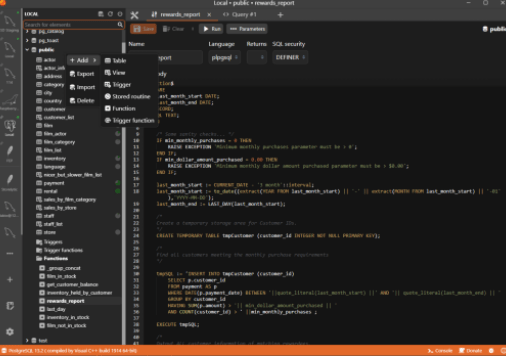
Antares is an SQL client that aims to become an useful and complete tool, especially for developers.
The main goal is to develop a totally free, full featured, cross platform and open source alternative. A modern application created with minimalism and semplicity in mind, with features in the right places, not hundreds of tiny buttons, nested tabs or submenu; productivity comes first.
At the moment this application is in development state, many features will come in future updates, only MySQL/MariaDB, PostgreSQL, SQLite and Firebird SQL. At the moment, however, there are all the features necessary to have a pleasant database management experience, so give it a chance and send us your feedback, we would really appreciate it. We are actively working on it, hoping to provide new cool features, improvements and fixes as soon as possible.
KEY FEATURES:
• Multiple database connections at same time.
• Database management (add/edit/delete).
• Full tables management, including indexes and foreign keys.
• Views, triggers, stored routines, functions and schedulers management (add/edit/delete).
• A modern and friendly tab system; keep open every kind of tab you need in your workspace.
• Fake table data filler to generate tons of data for test purpose.
• Query suggestions and auto complete.
• Query history: search through the last 1000 queries.
• Import and export database dumps.
• Customizable keyboard shortcuts.
• SSH tunnel support.
• Dark and light theme.
• Editor themes.
• Scratchpad.
ACTUALLY SUPPORTED DATABASES:
• MySQL
• MariaDB
• PostgreSQL
• SQLite
• Firebird SQL
Other databases support will come in future releases.
・ Apache NetBeans
Apache NetBeans IDE lets you quickly and easily develop Java desktop, Jakarta EE, and web applications, as well as HTML5 applications with HTML, JavaScript, and CSS. The IDE also provides a great set of tools for PHP and C/C++ developers.
1. Desktop computer “Ubuntu Software Center” search installation
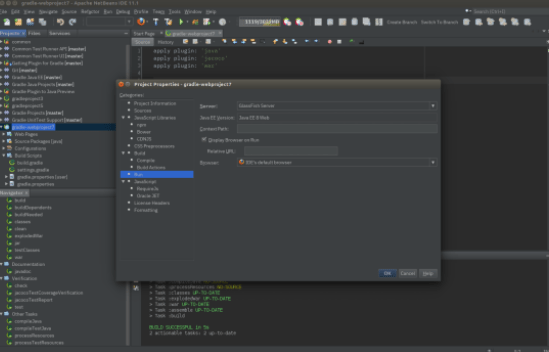
It is free and open source and has a large community of users and developers around the world.
It requires Java 11 or later Java Development Kit installed.
Disclaimer: This is a convenience binary of Apache NetBeans IDE, this is not an official release.
・ Cockpit
Web console for Linux servers.
1. Desktop computer “Ubuntu Software Center” search installation
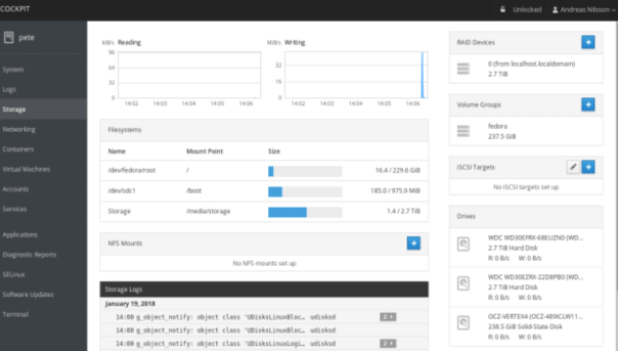
Cockpit is a server manager that allows you to easily manage your Linux servers using a web browser. You can use terminals and web tools without distinction. Services started in Cockpit can be stopped in the terminal. Similarly, if your terminal encounters an error, you can view the error in the Cockpit journal interface.
Cockpit is ideal for inexperienced system administrators. These system administrators will be able to easily perform simple tasks such as managing storage, inspecting journals, and starting and stopping services. You can also monitor and manage multiple servers at the same time. Add these servers with just a click. After adding, your machine will manage other machines.
Once Cockpit is installed, enable it with the “systemctl enable –now cockpit.socket” command.
・ Keepassx
KeePassX using Qt libraries and recent versions of KeePass using .NET / Mono. It is built using version 5 of the Qt toolkit, making it a multi-platform application, which can be run on Linux, Windows, and macOS.
KeePassX uses the KeePass 2 (.kdbx) password database format as the native format. It can also import (and convert) the older KeePass 1 (.kdb) databases.
1. Desktop computer “Ubuntu Software Center” search installation
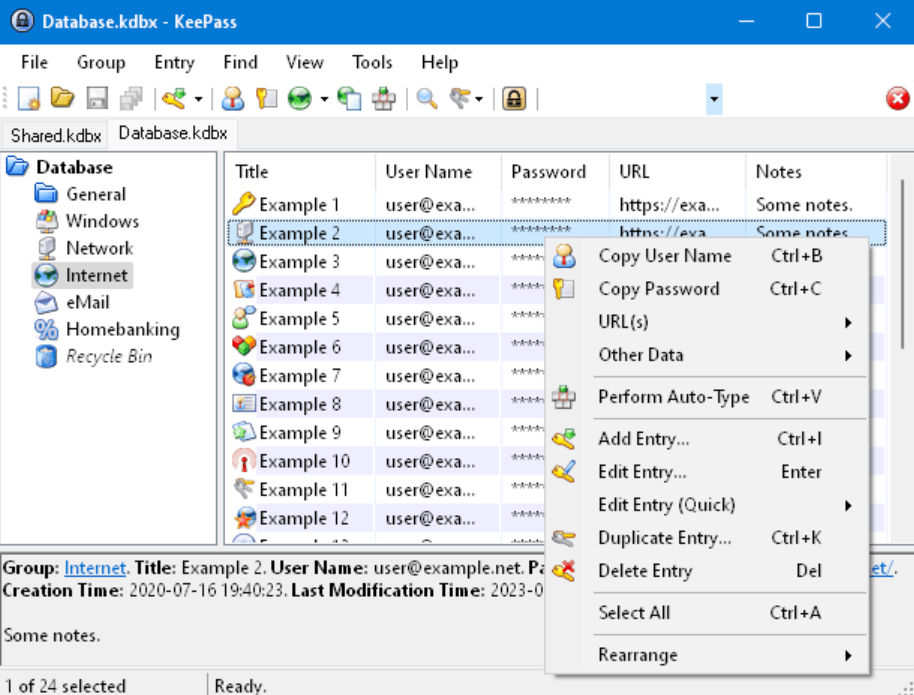
Enterprise Open Source and Linux | Ubuntu
Ubuntu is the modern, open source operating system on Linux for the enterprise server, desktop, cloud, and IoT.

Apple
Discover the innovative world of Apple and shop everything iPhone, iPad, Apple Watch, Mac, and Apple TV, plus explore accessories, entertainment, and expert device support.

Microsoft Windows Software
You can compare a wide range of products such as Microsoft Windows, Office, Adobe Creative Cloud, PC games, security software, etc. through rankings and reviews. There is also a download version that you can use right away, a subscription that you can use for as long as you want, and a trial version that you can try for free.
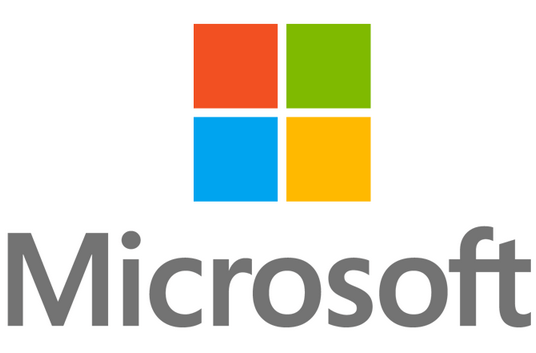
Gaming Computer Parts
Online shopping for Computers & Peripherals from a great selection of Memory, CPUs, Internal Hard Drives, Internal SSDs, PC Cases, Barebone PCs and more at everyday low prices.
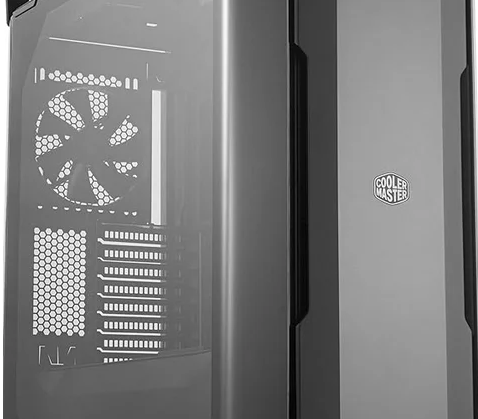
WordPress
Open source software which you can use to easily create a beautiful website, blog, or app.

Affiliate Programs
Welcome to the World of Webmasters.
Free Web Server
How to start a free web server.

Finally, clean out unnecessary application programs.
$ sudo apt update
$ sudo apt upgrade
$ sudo apt autoremove
thank you for your hard work!!
